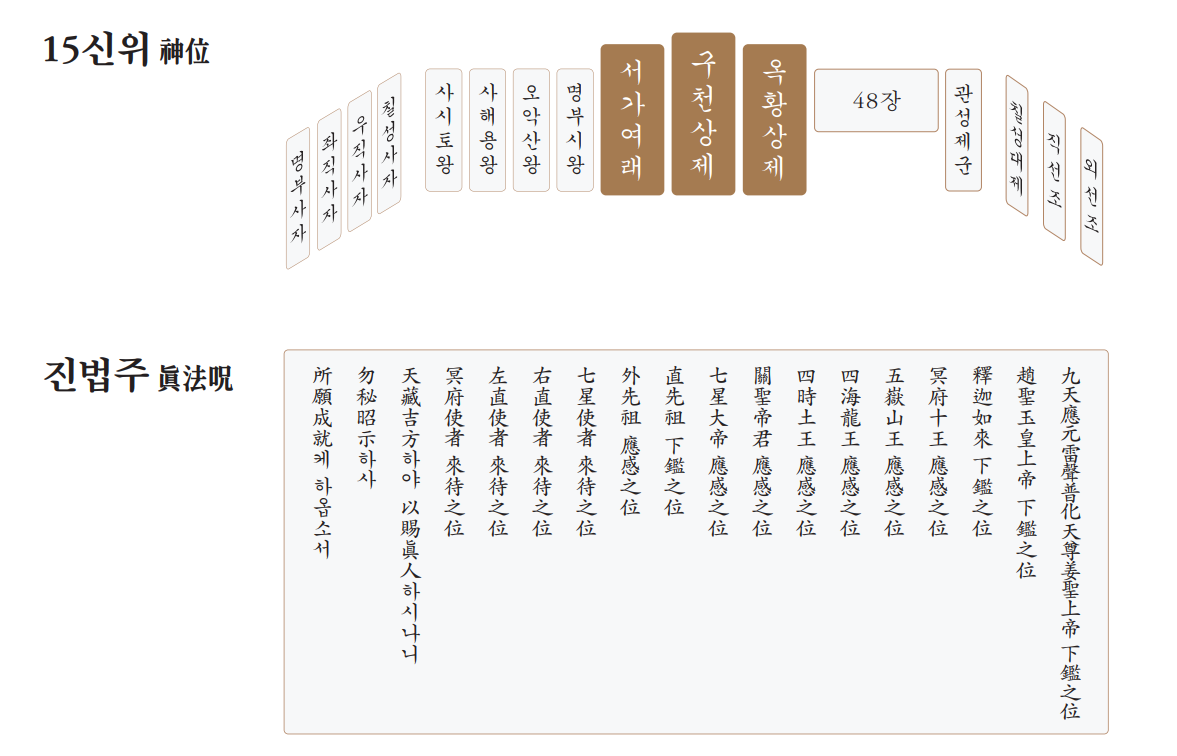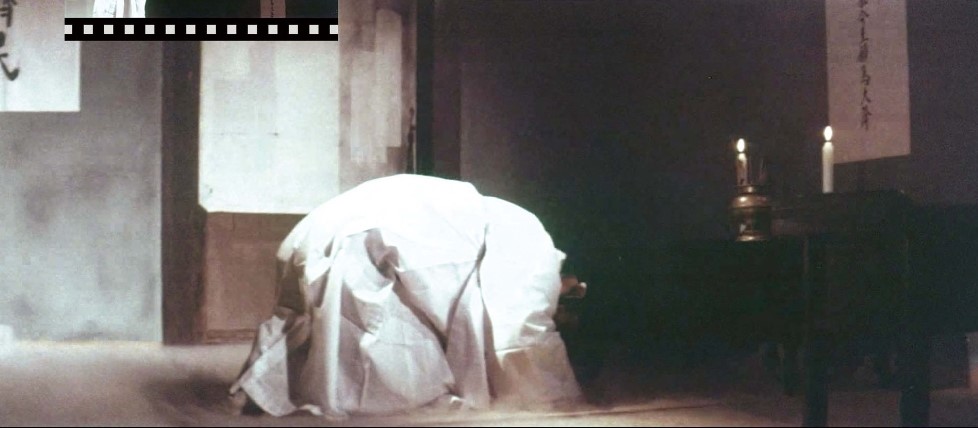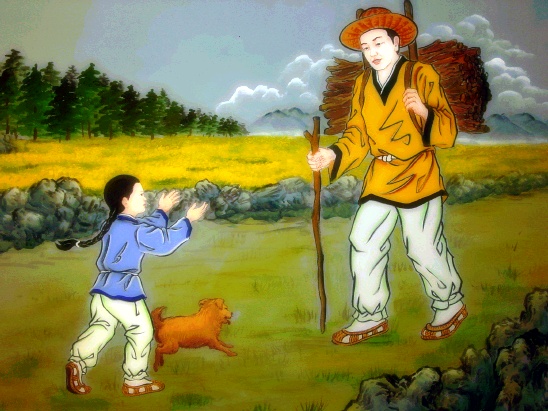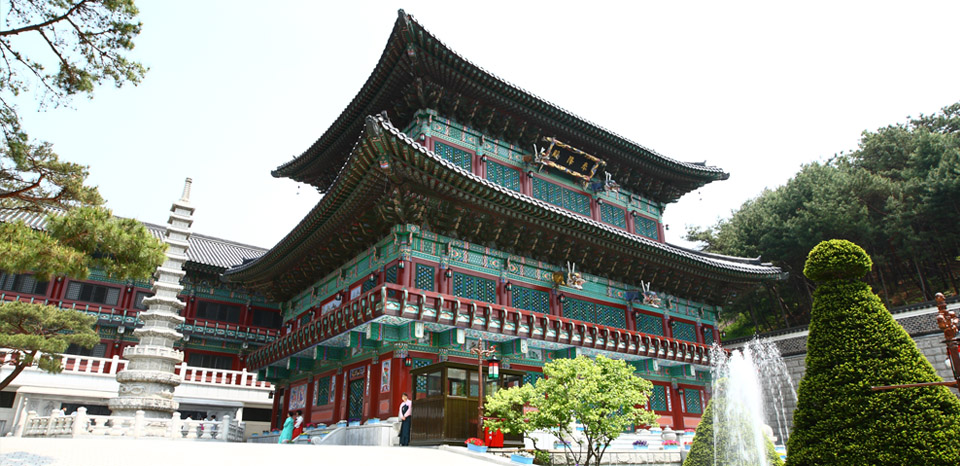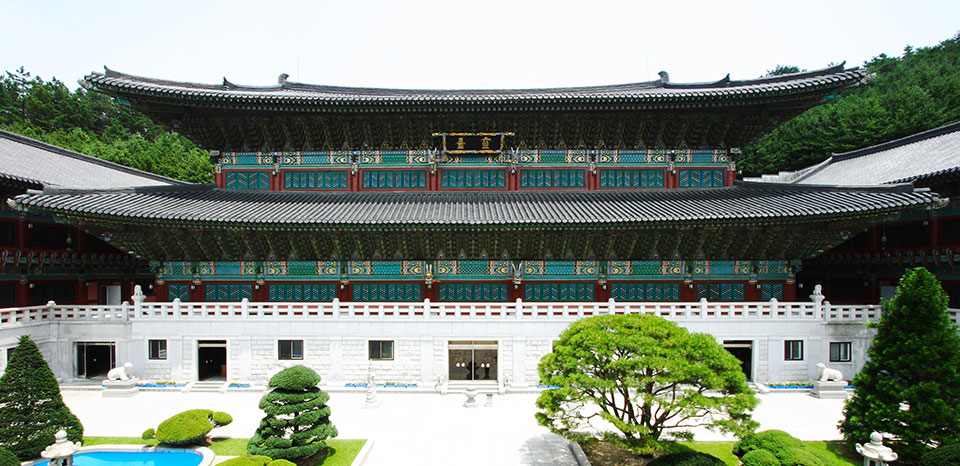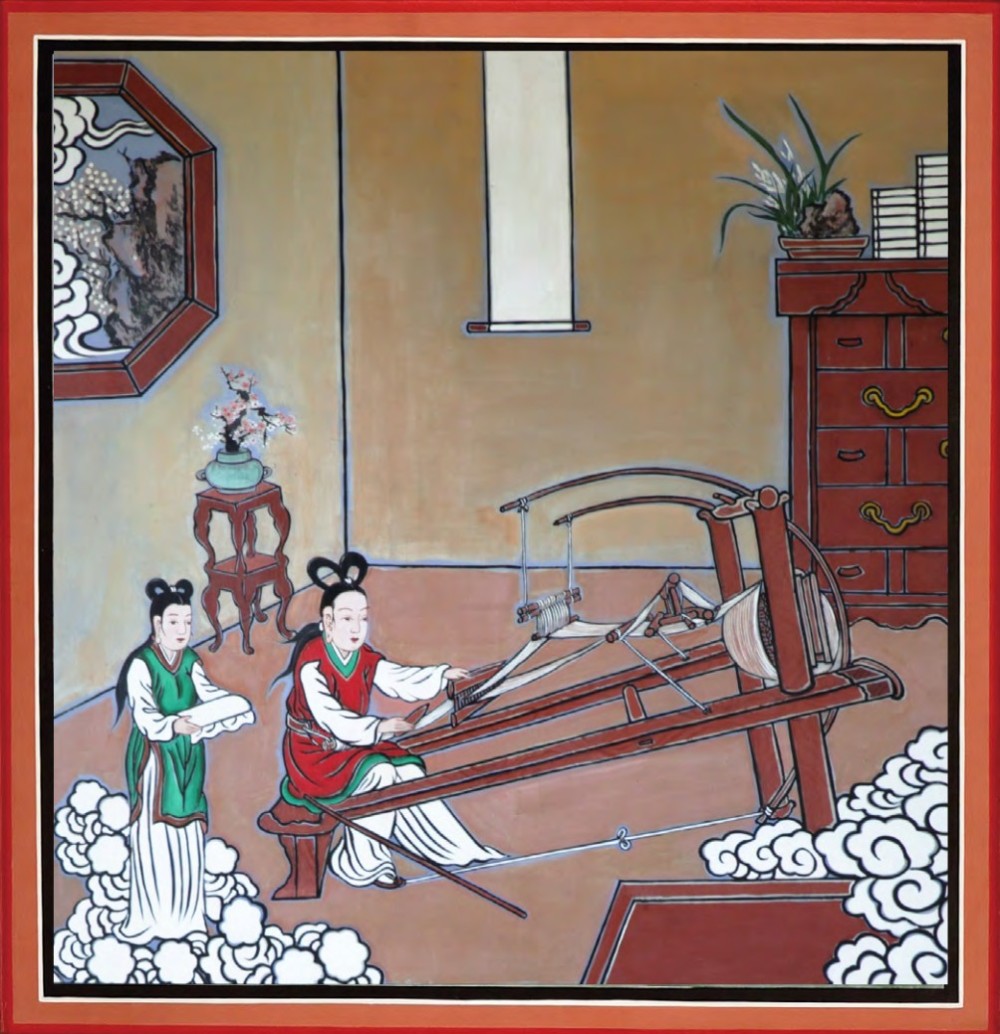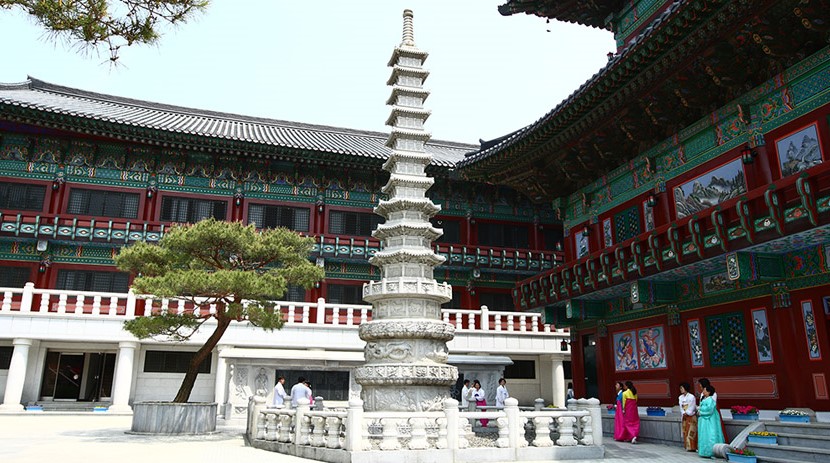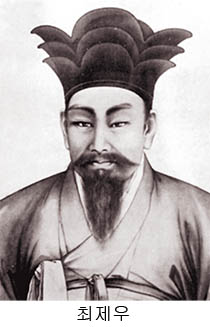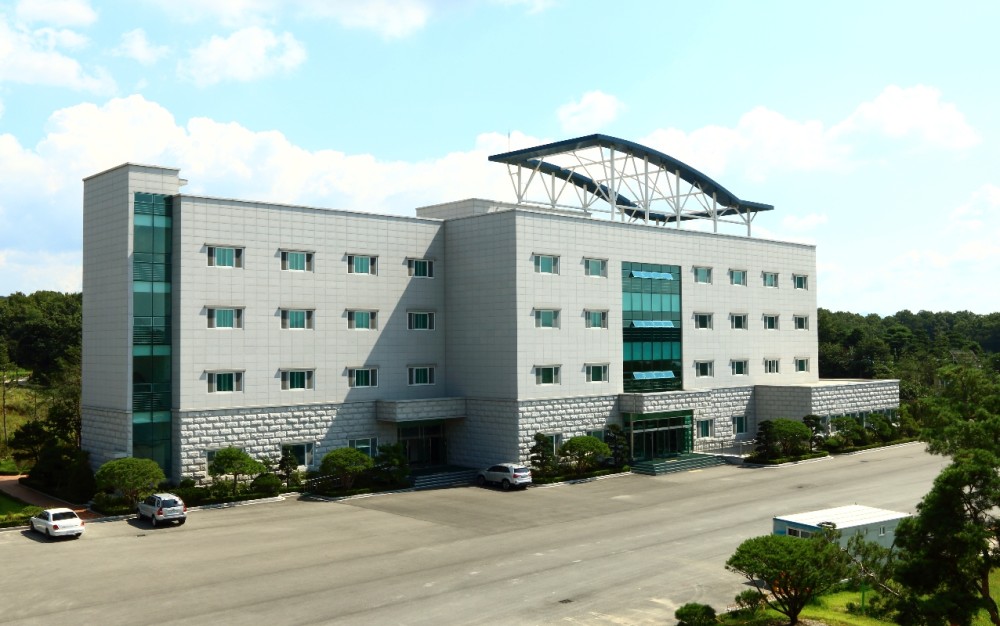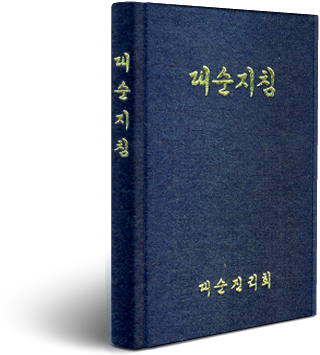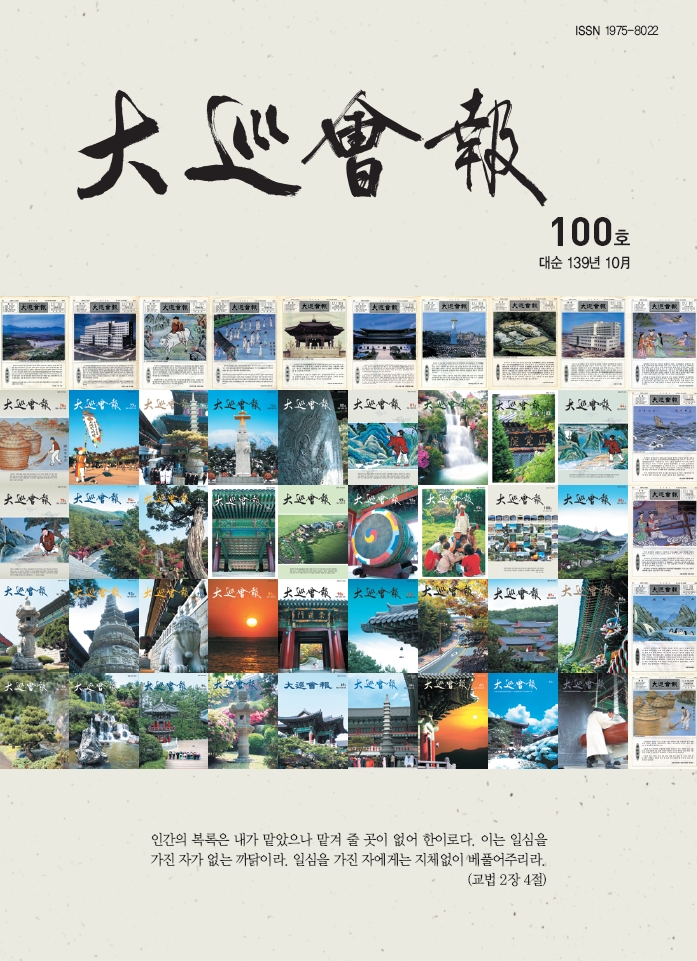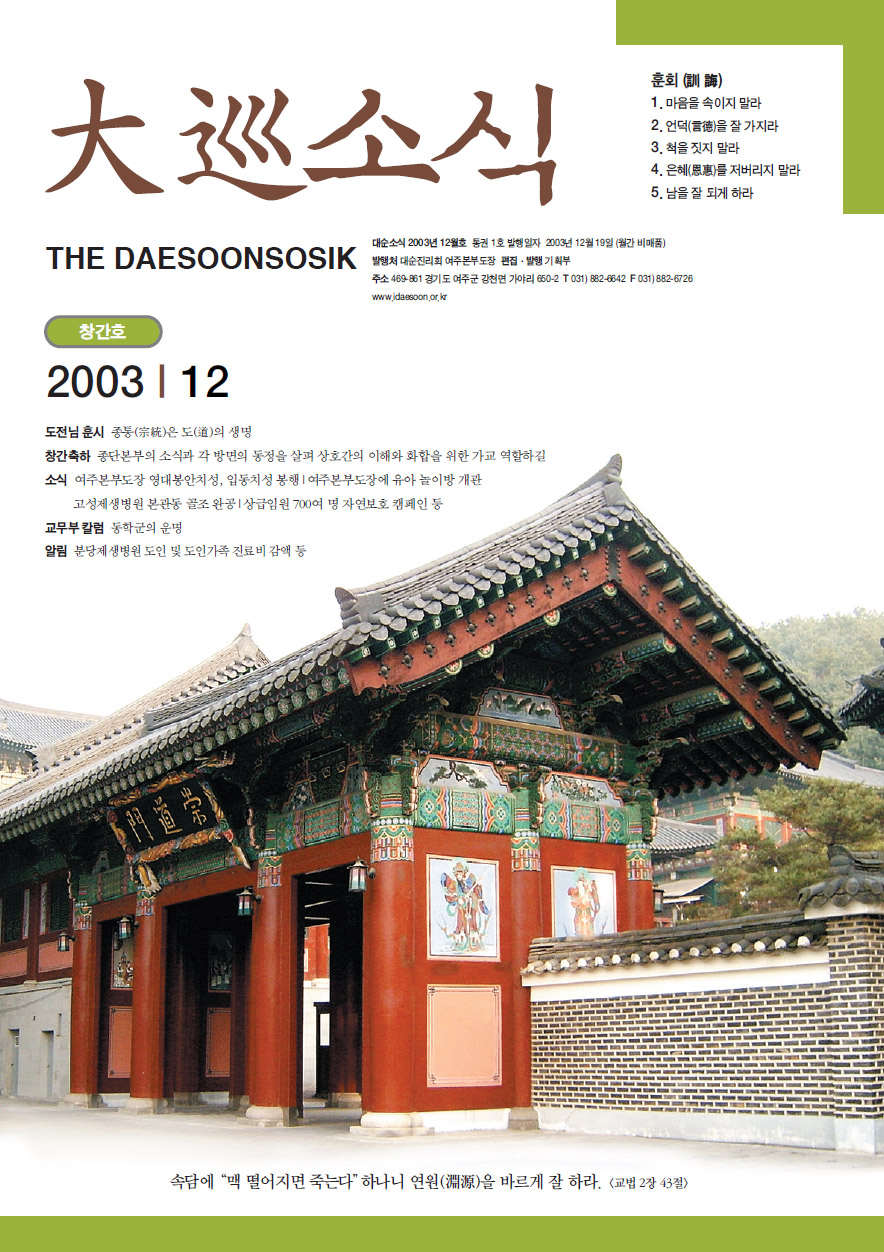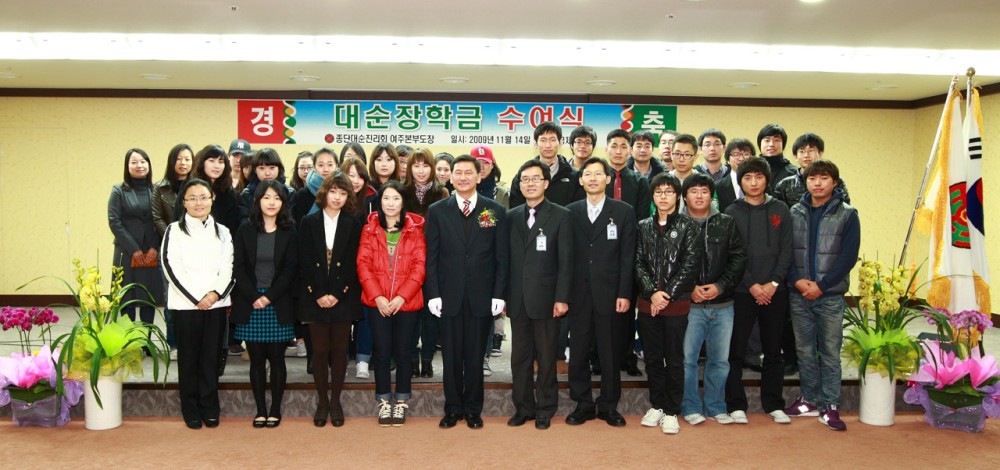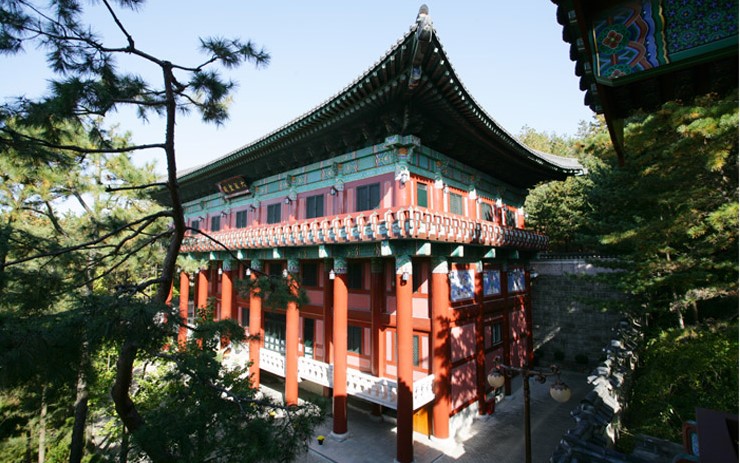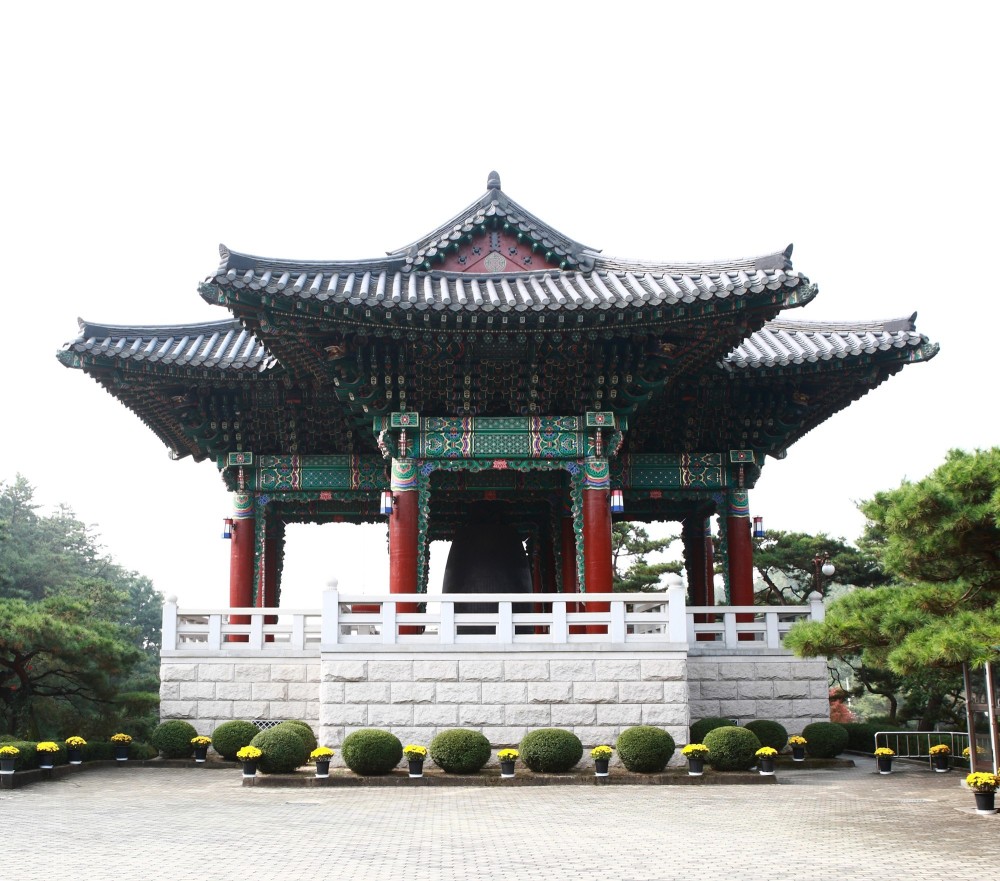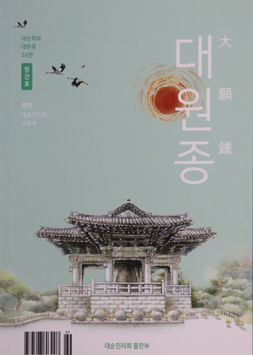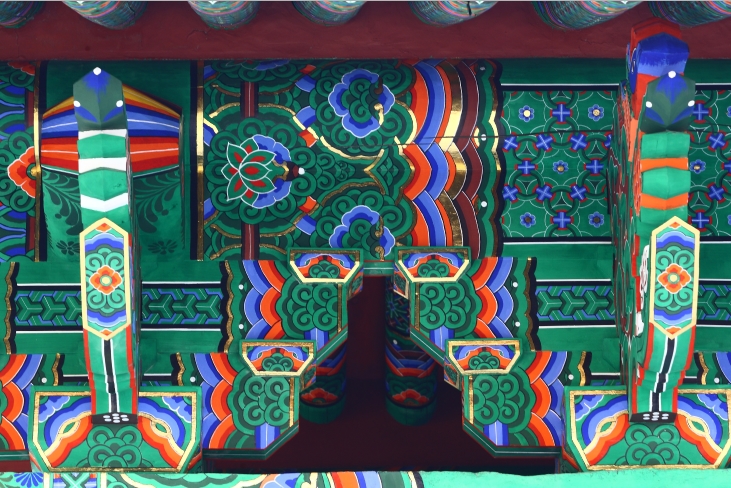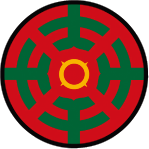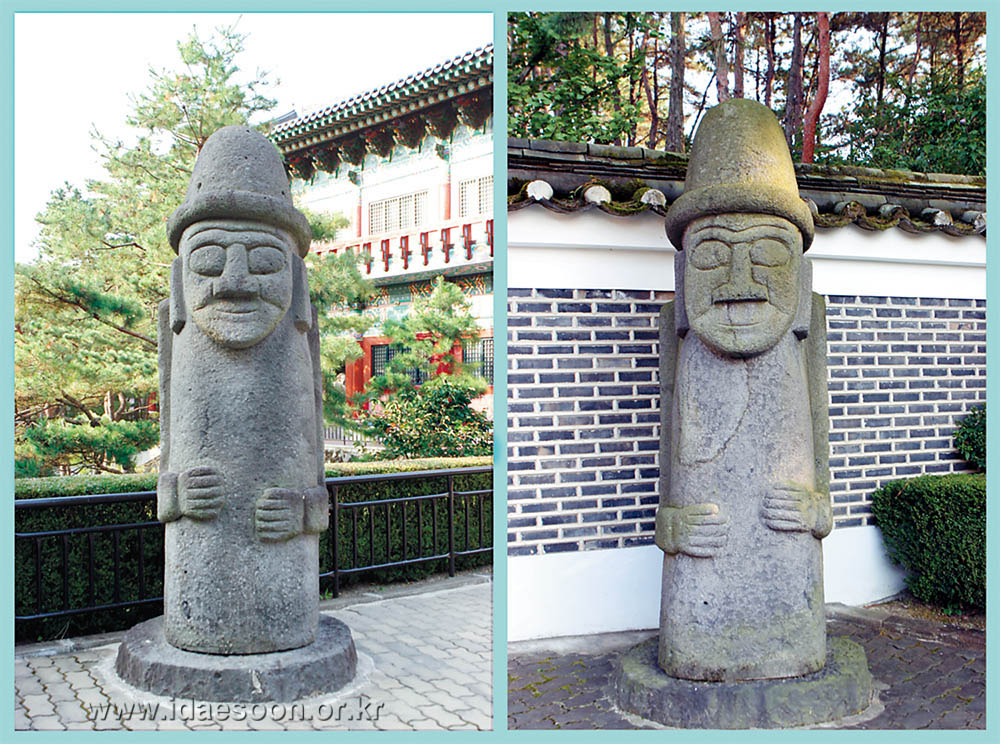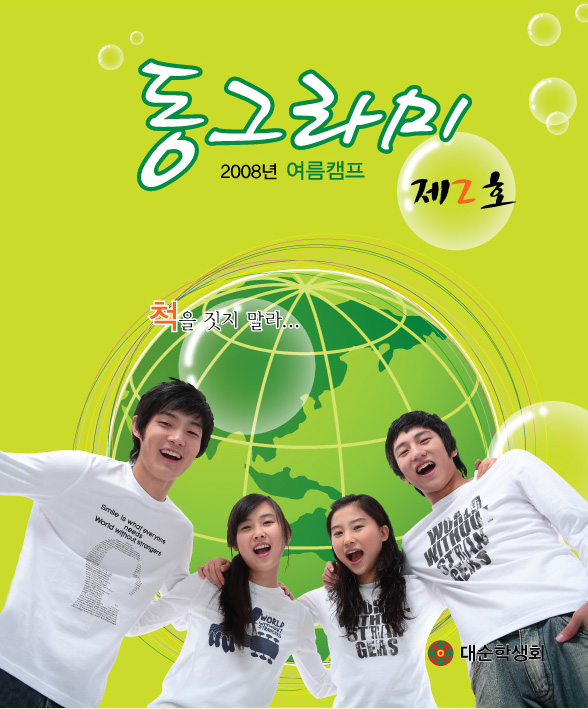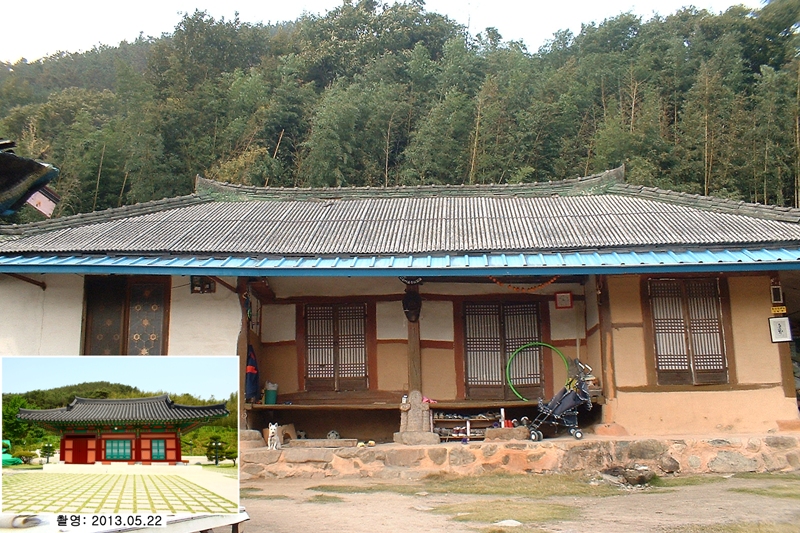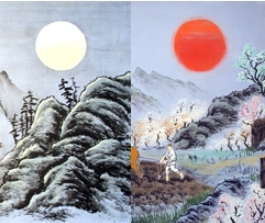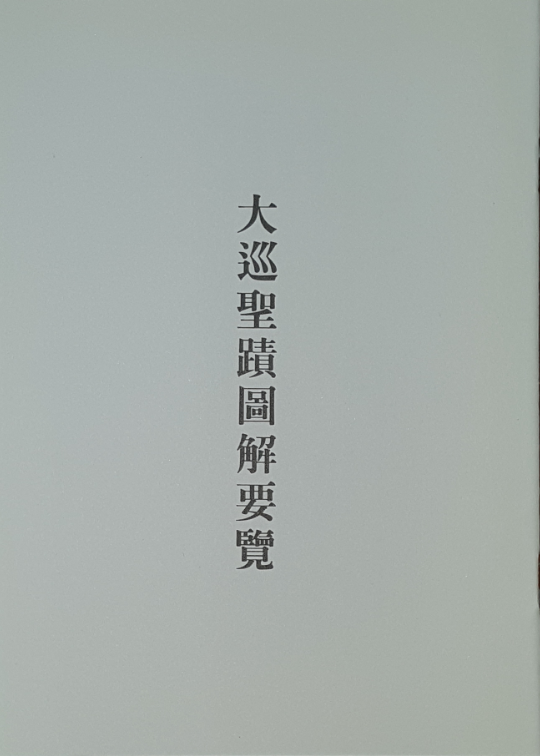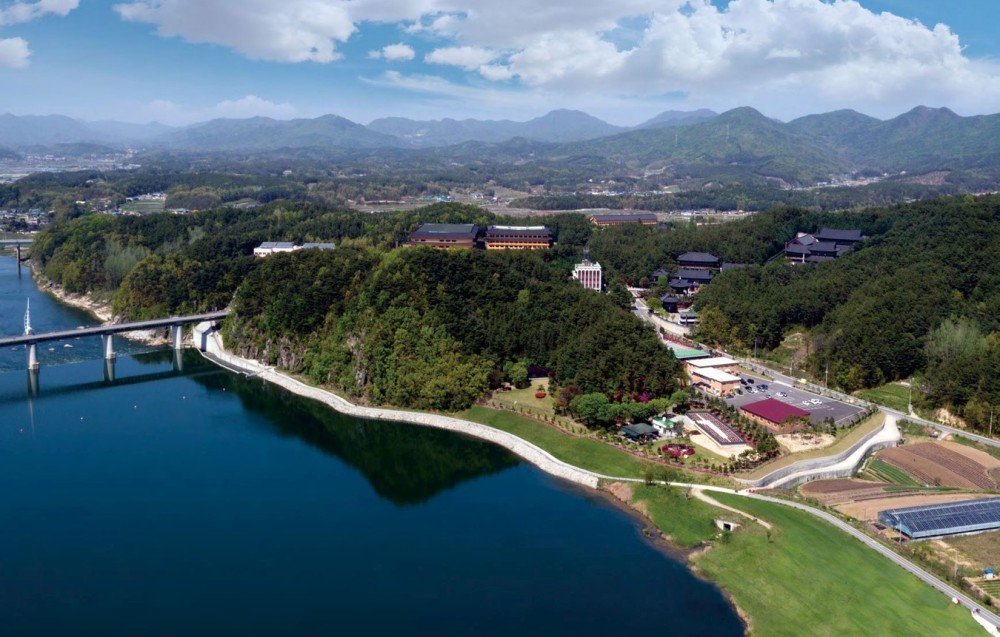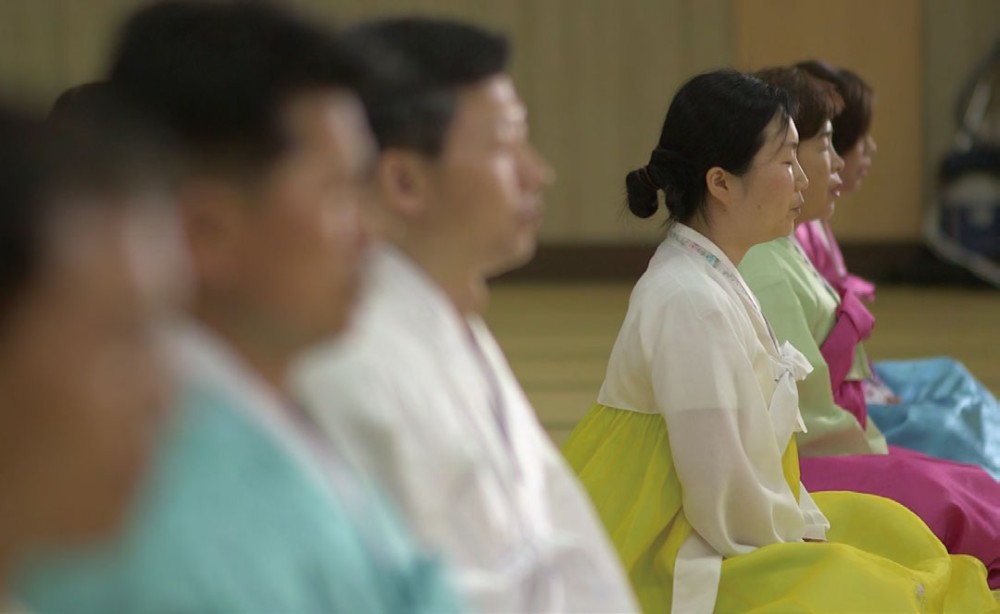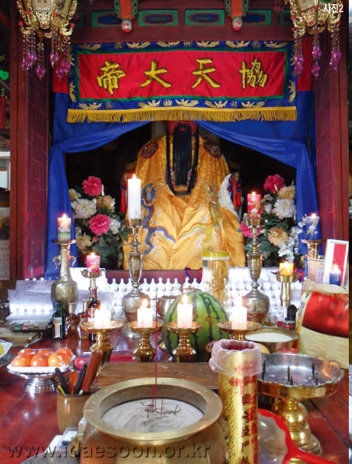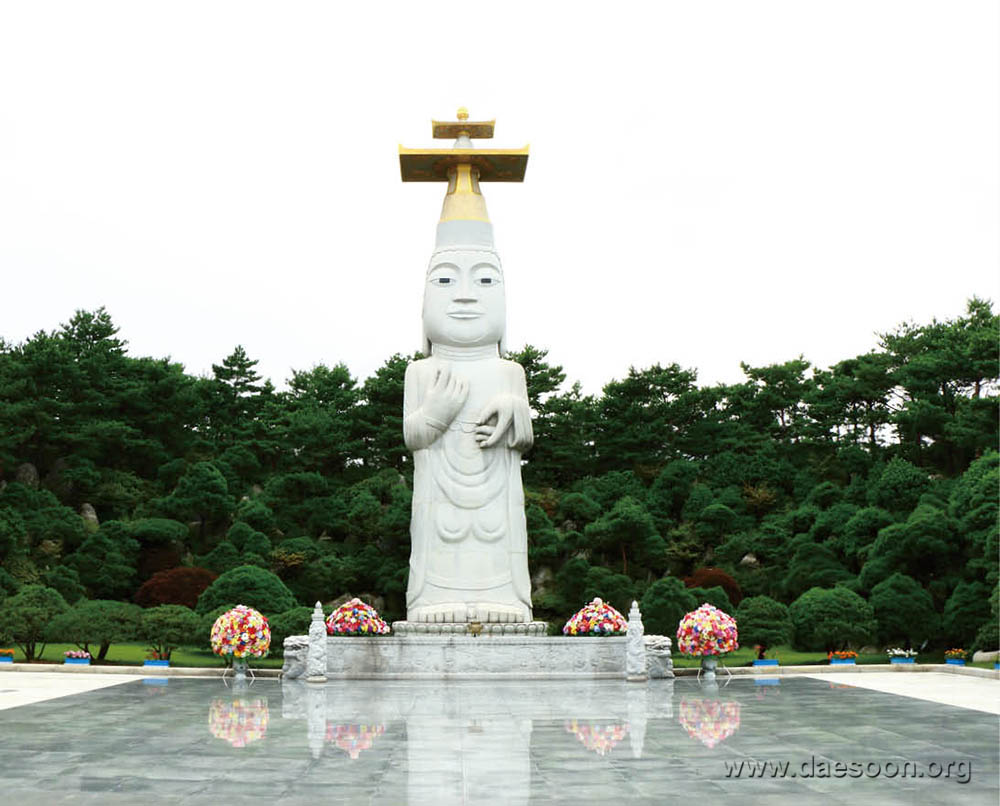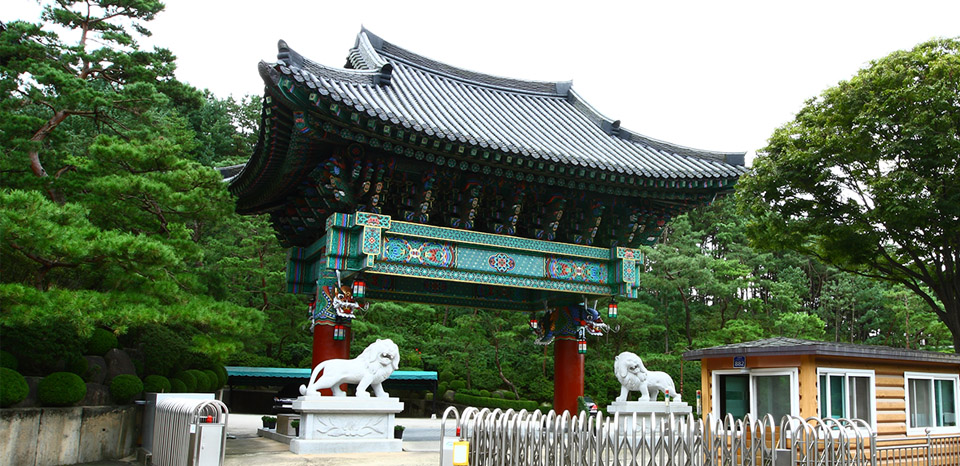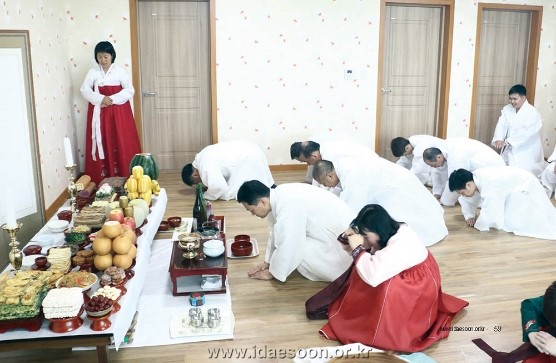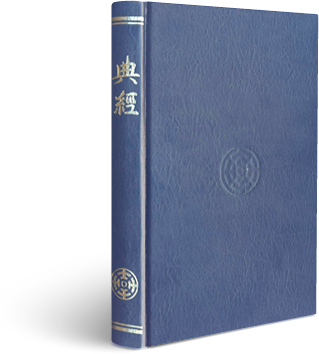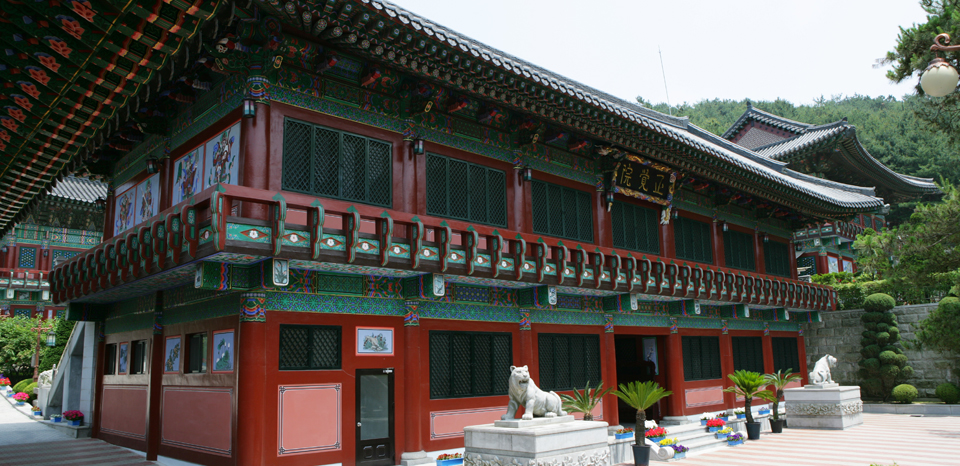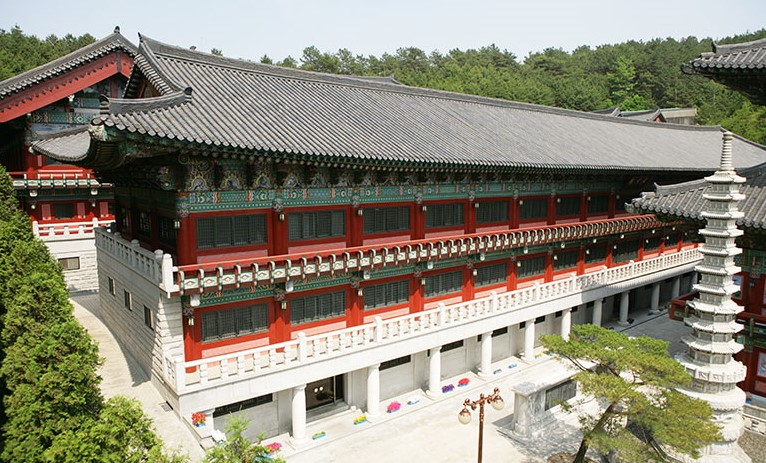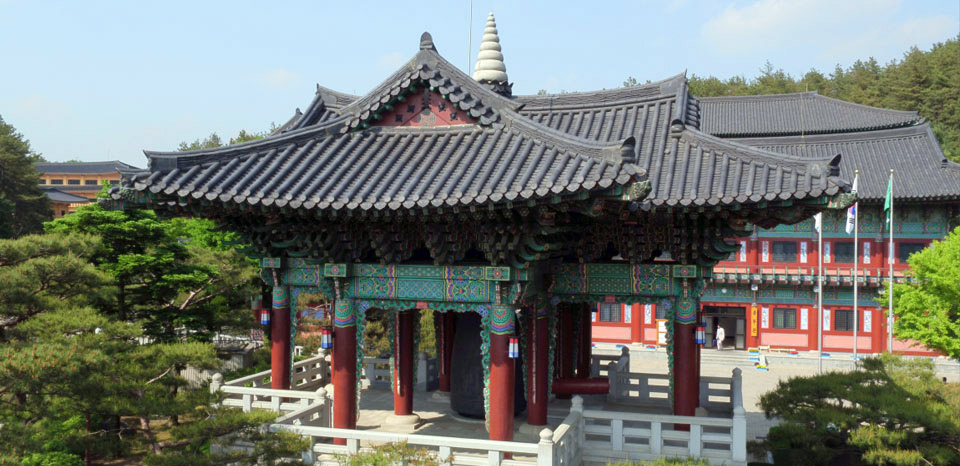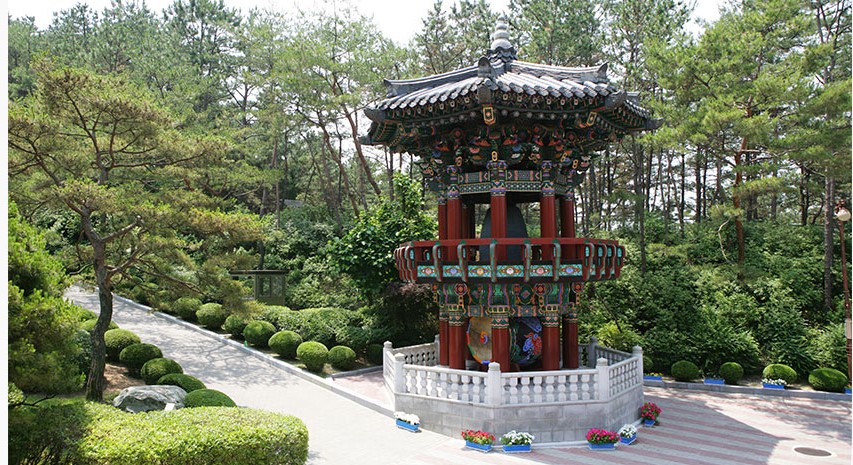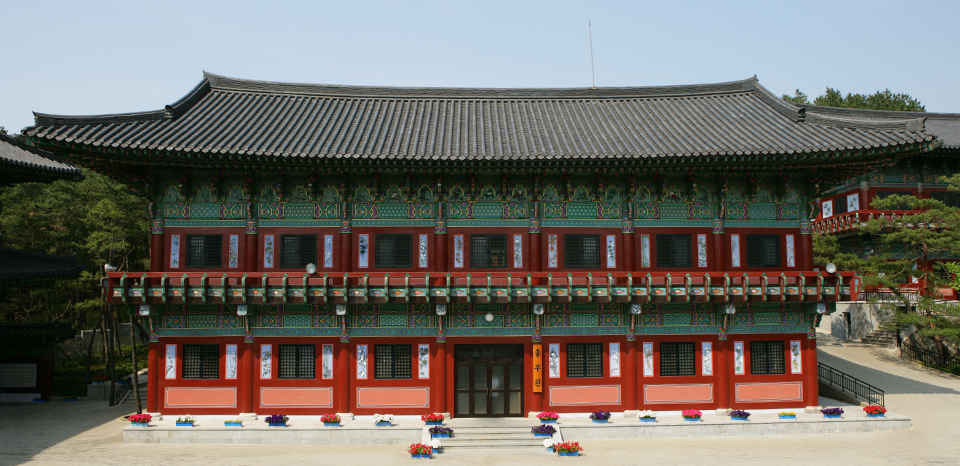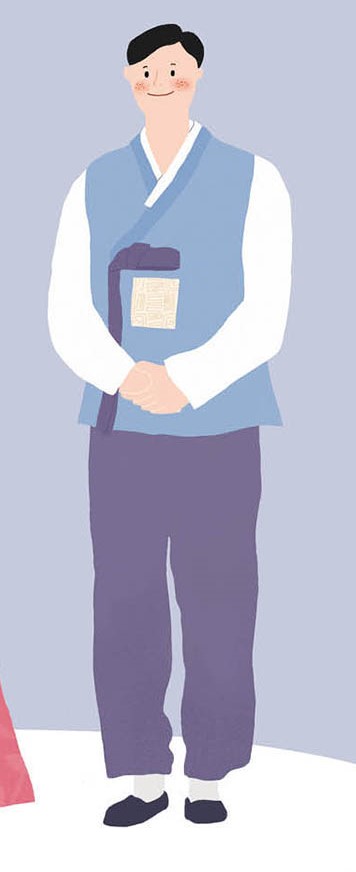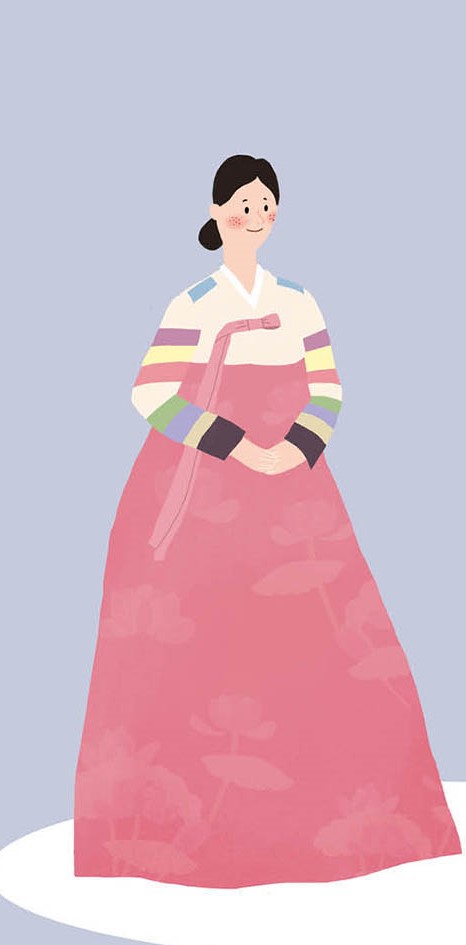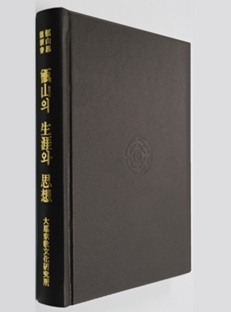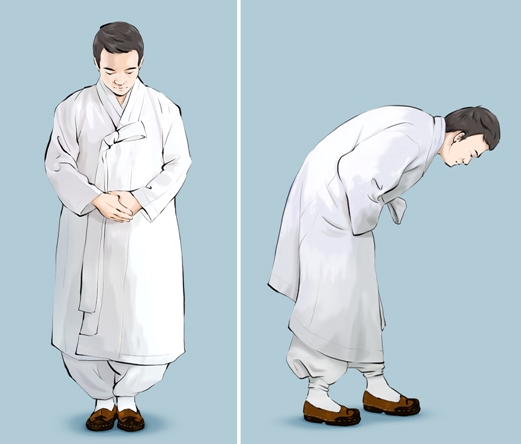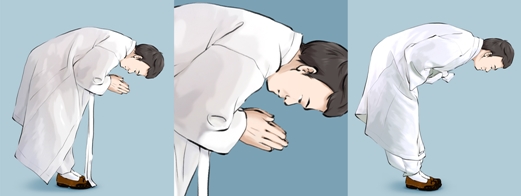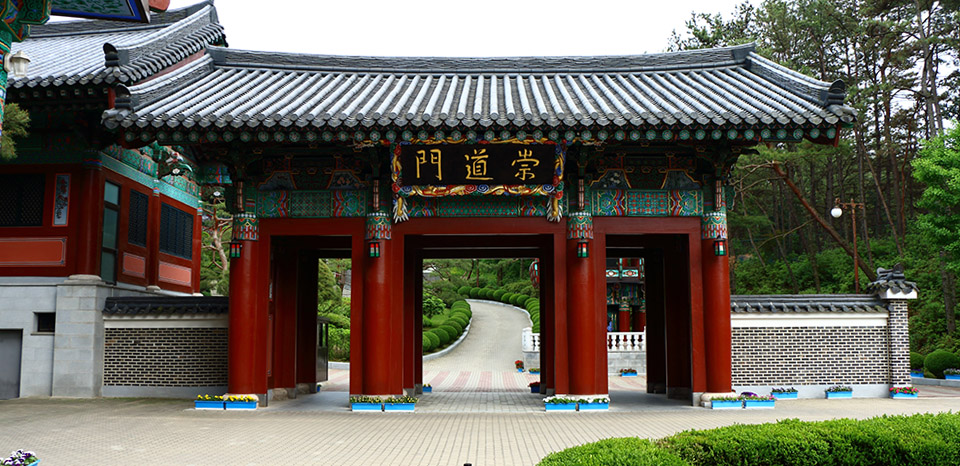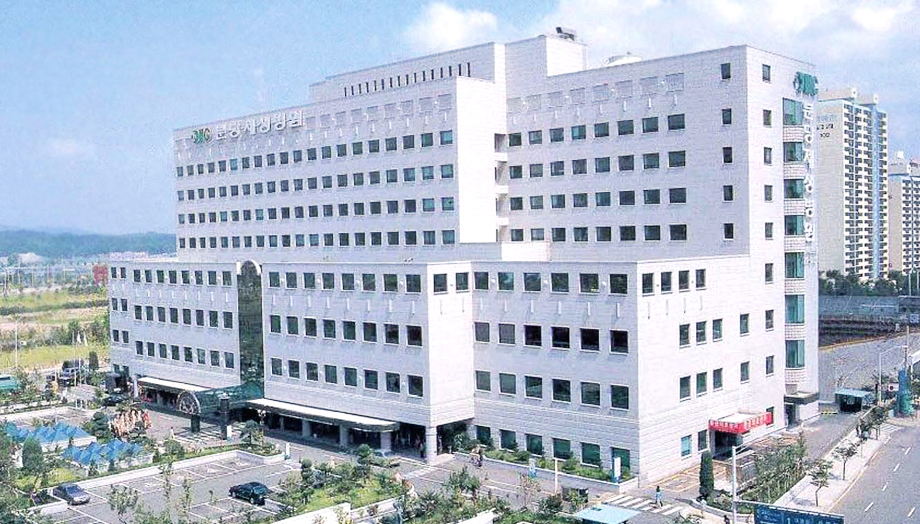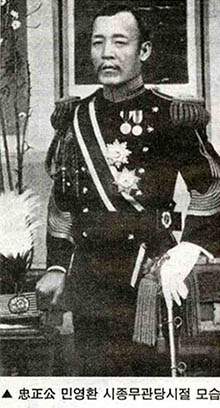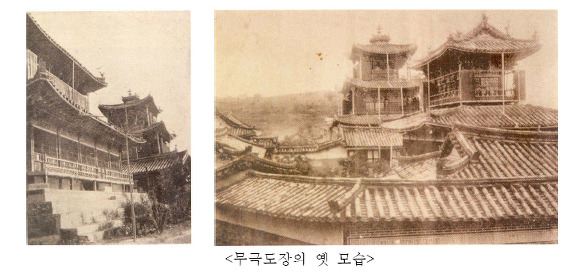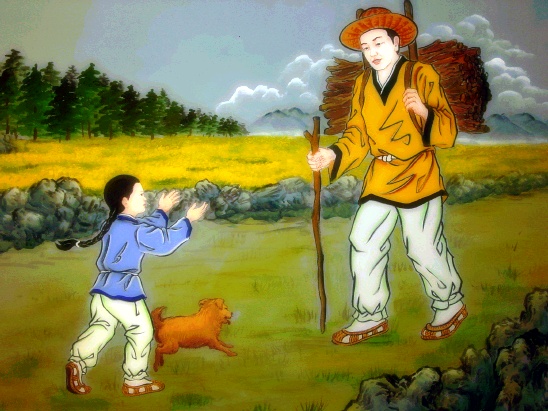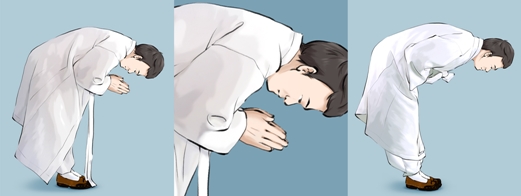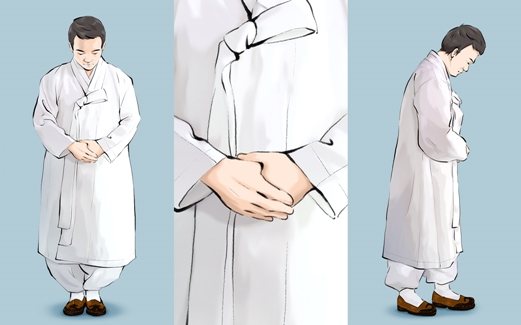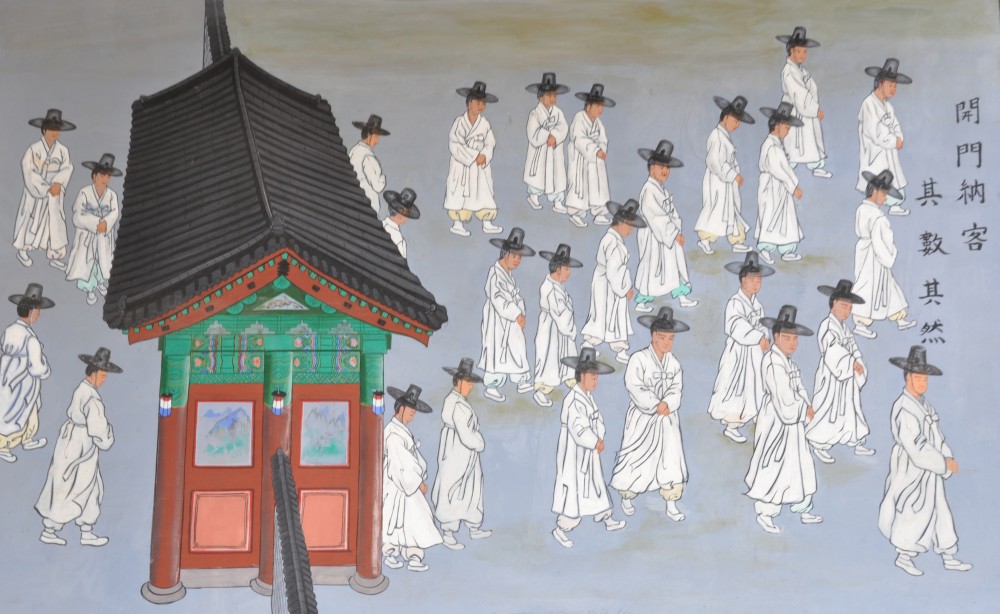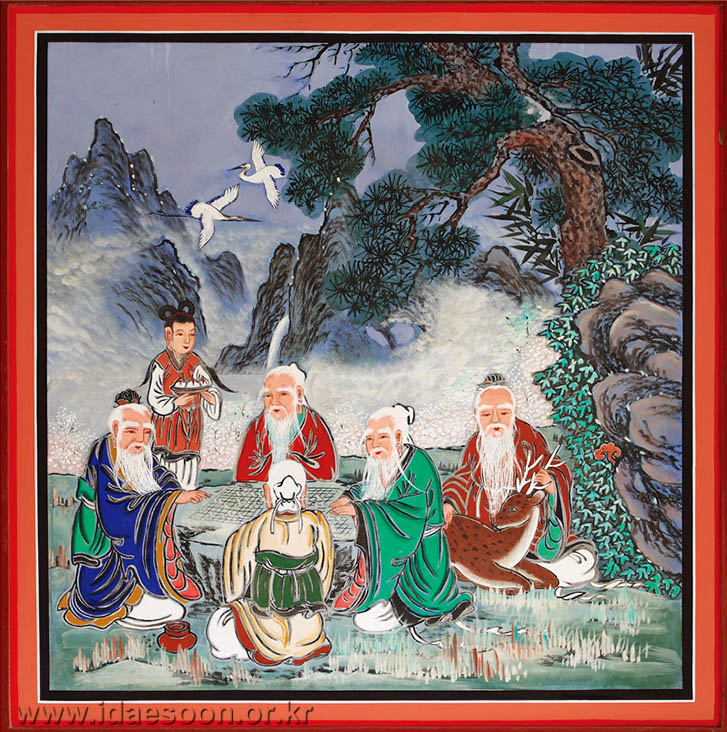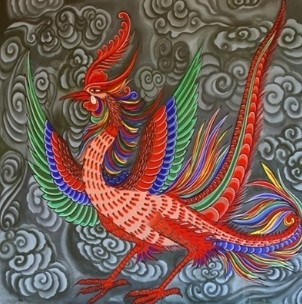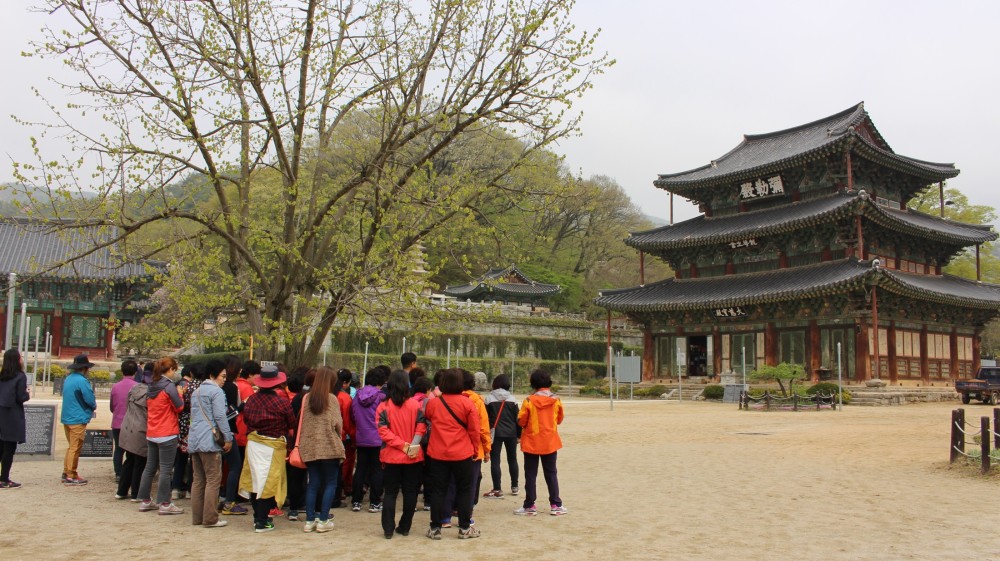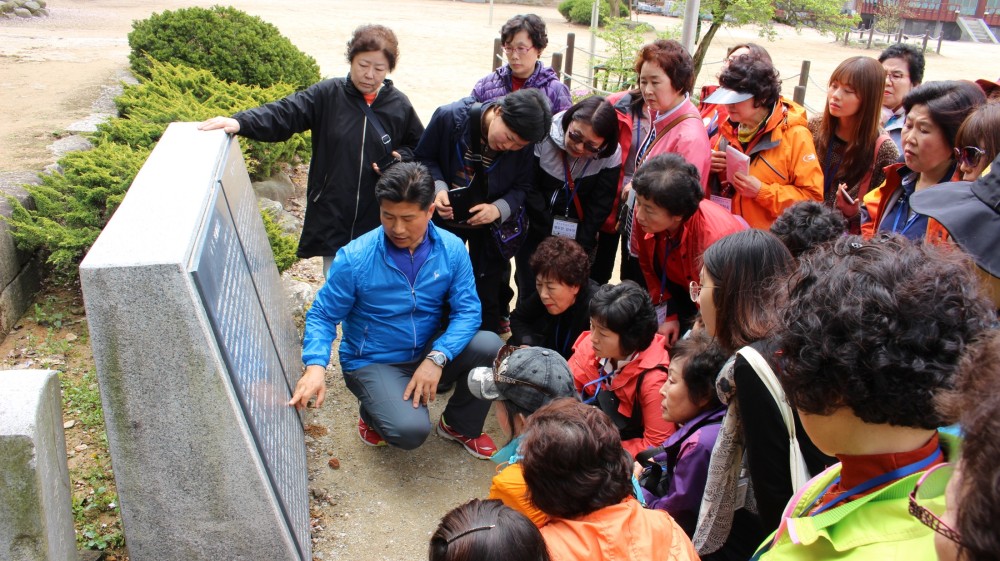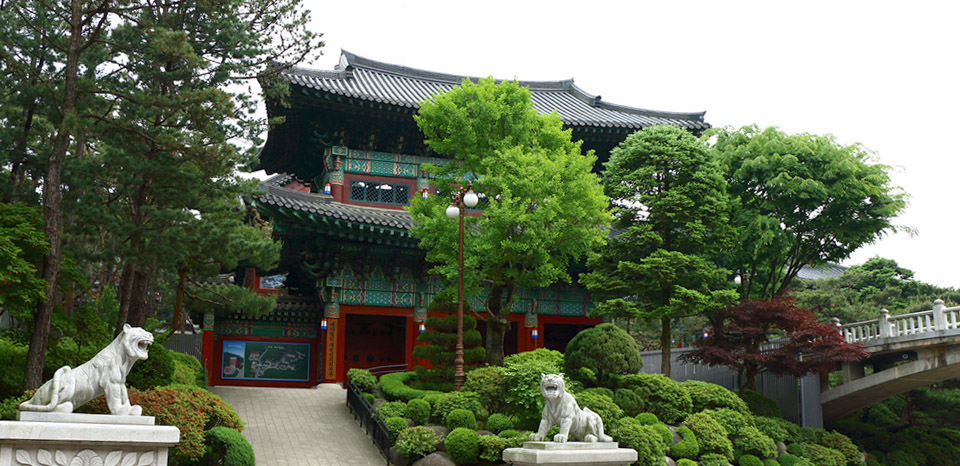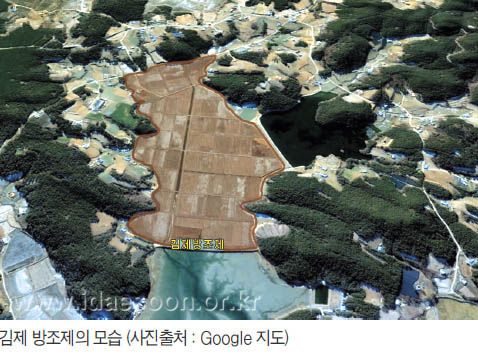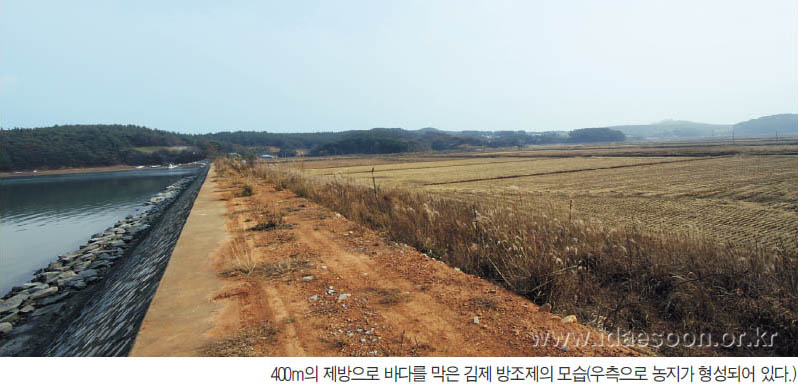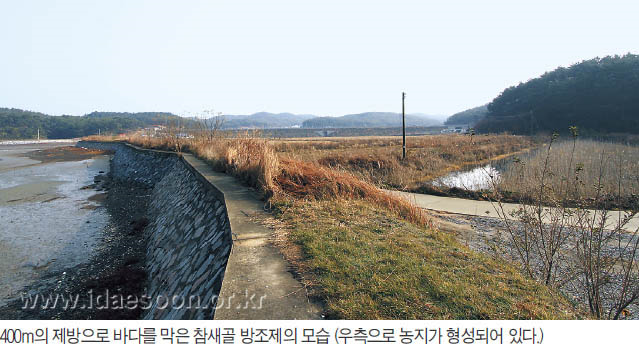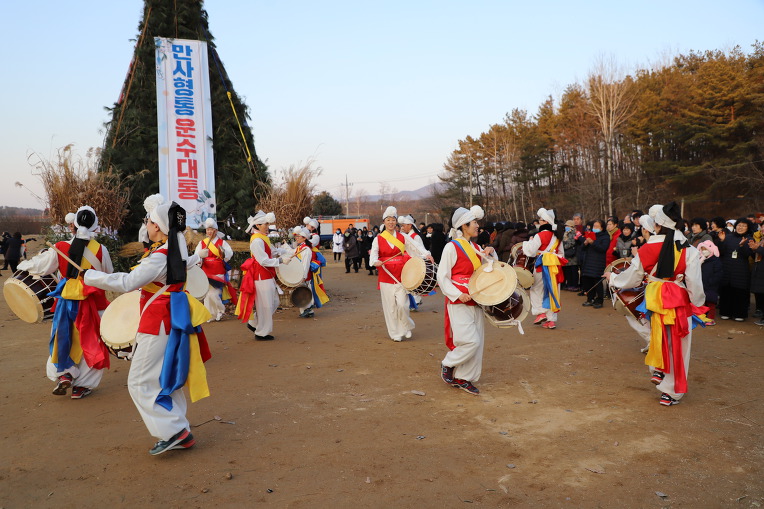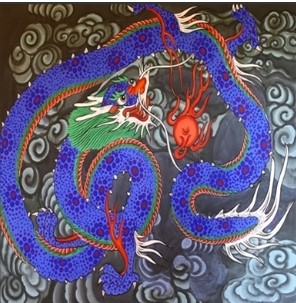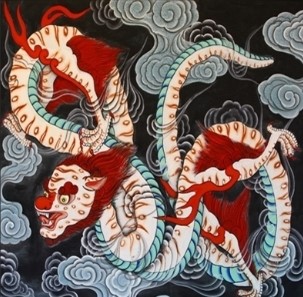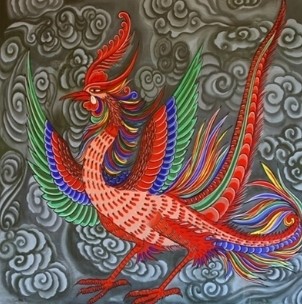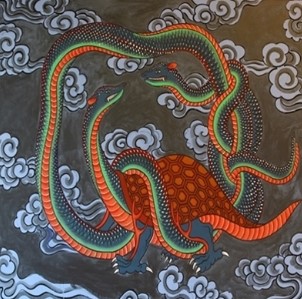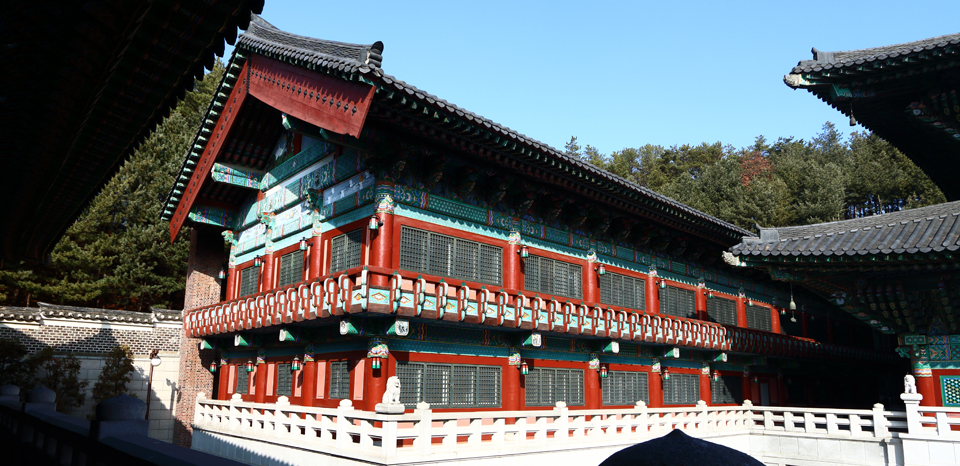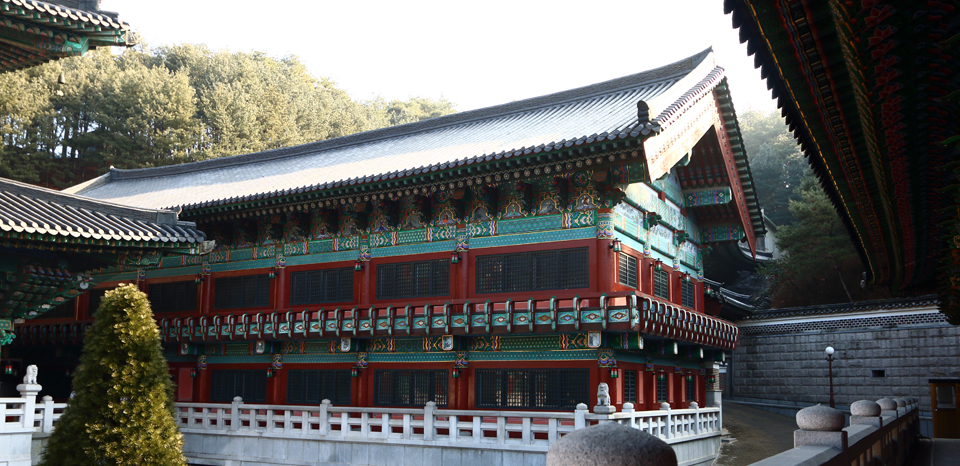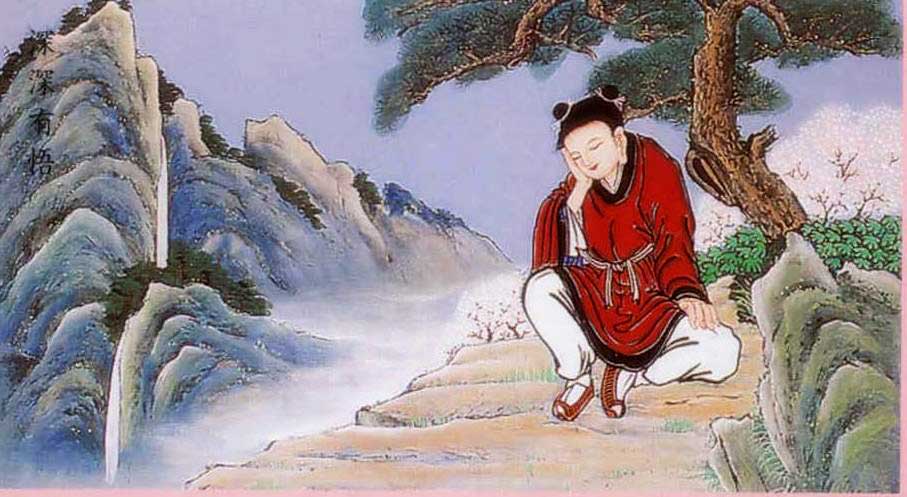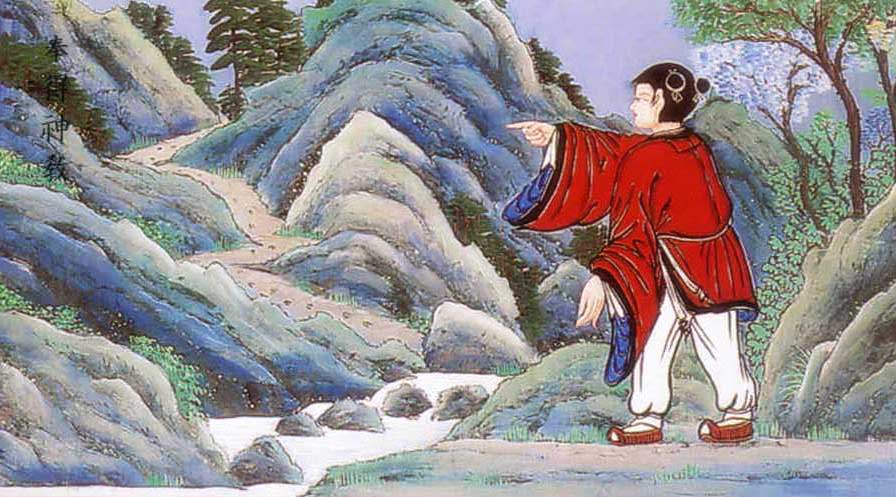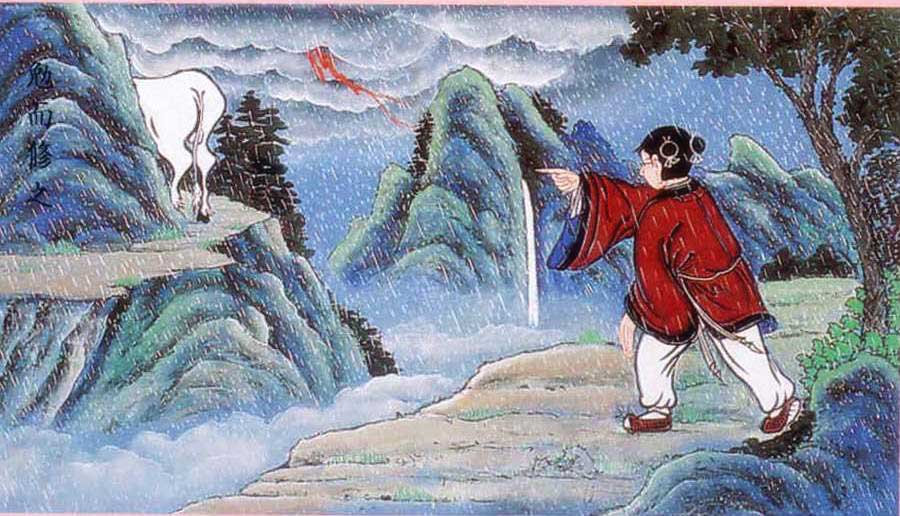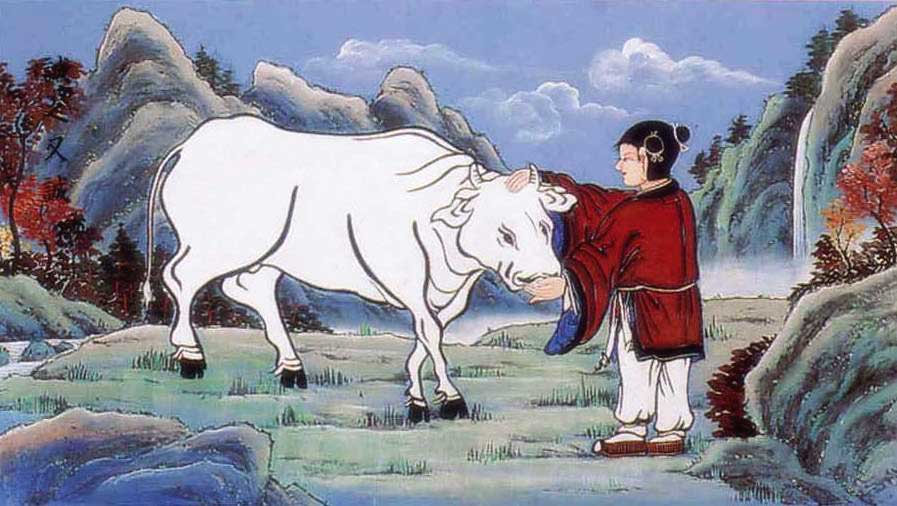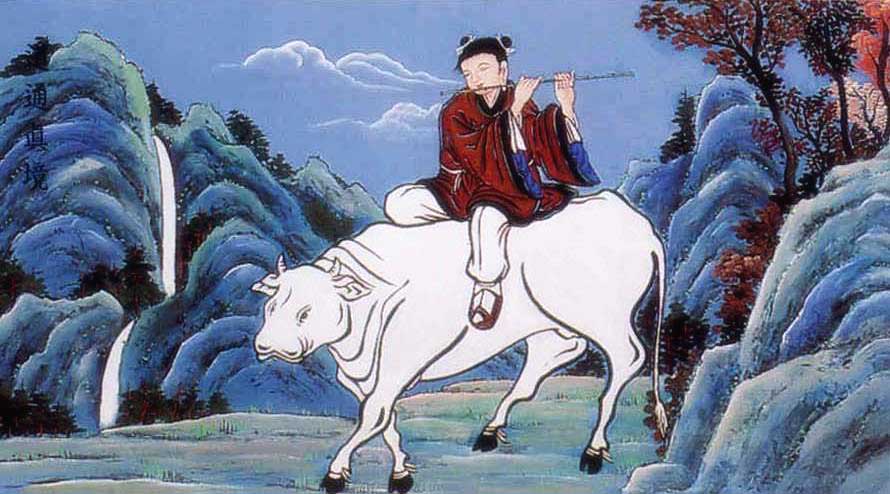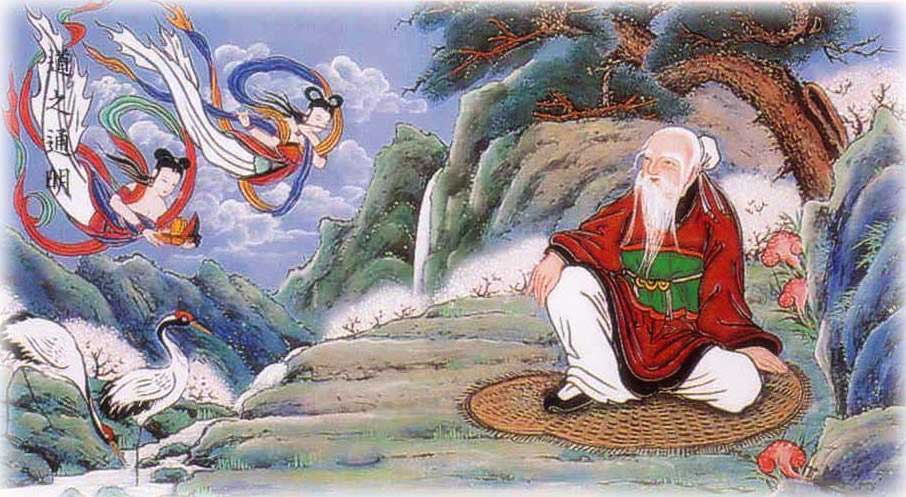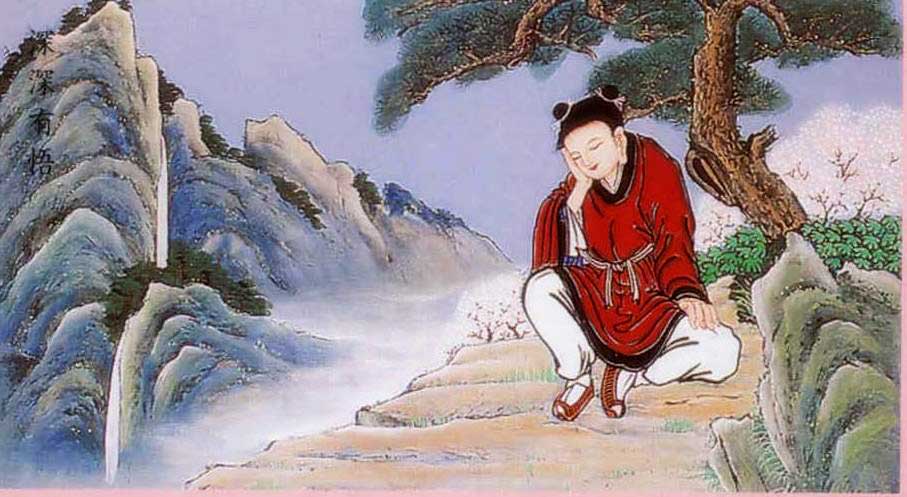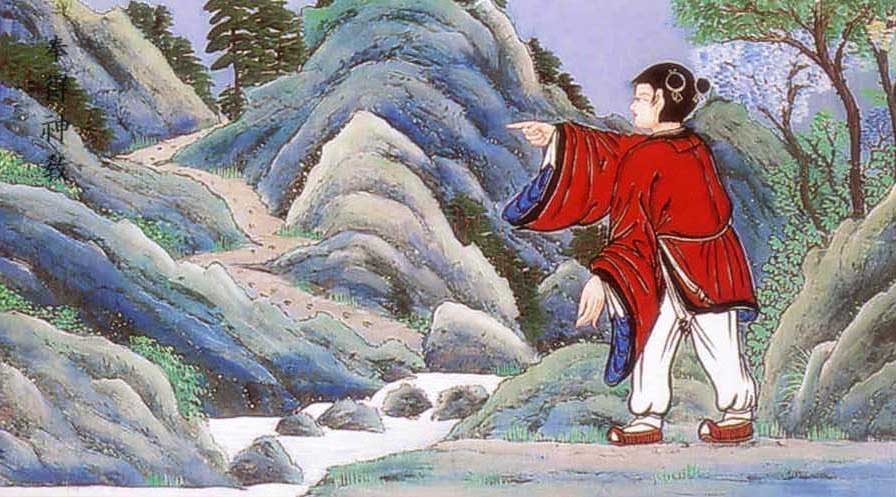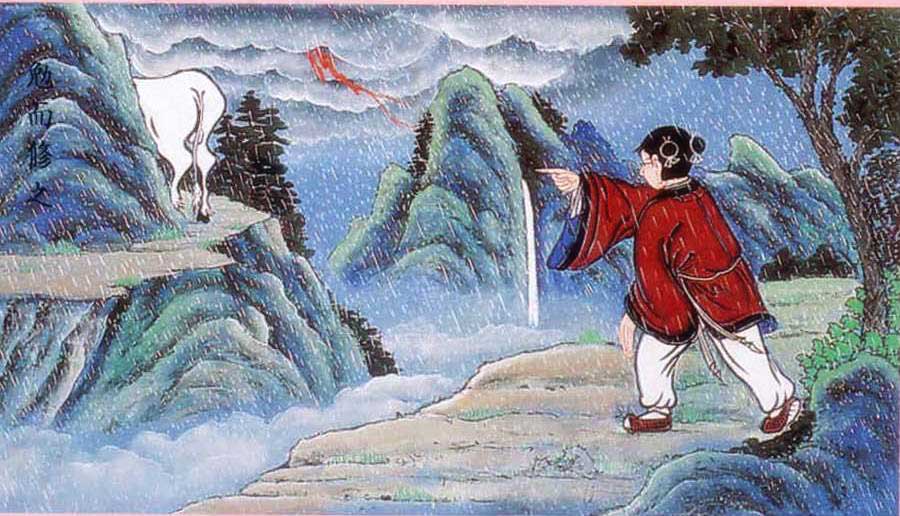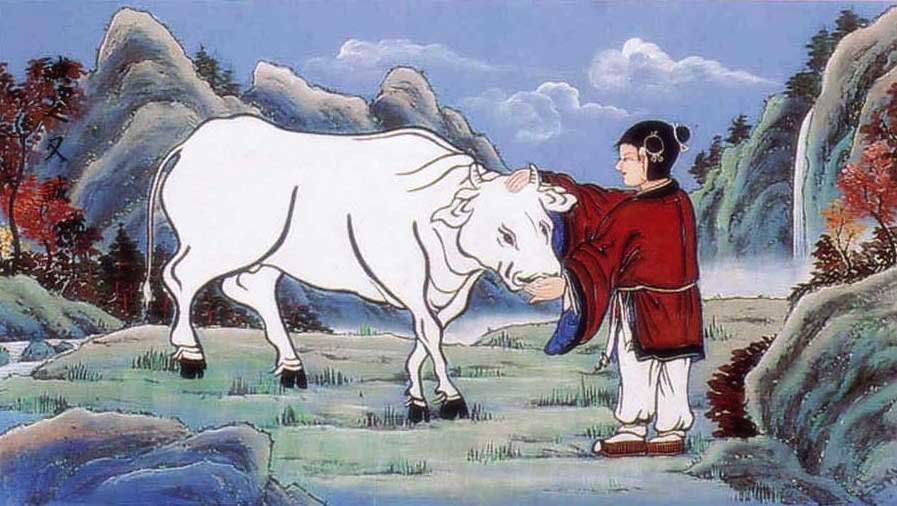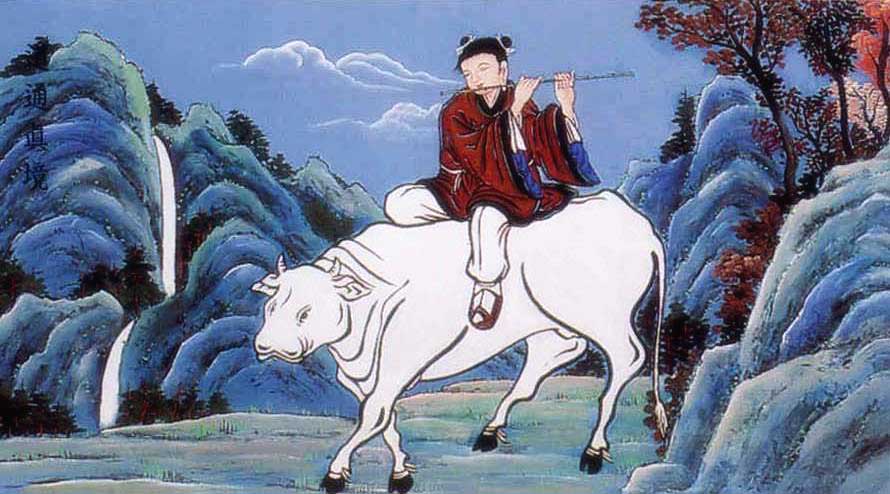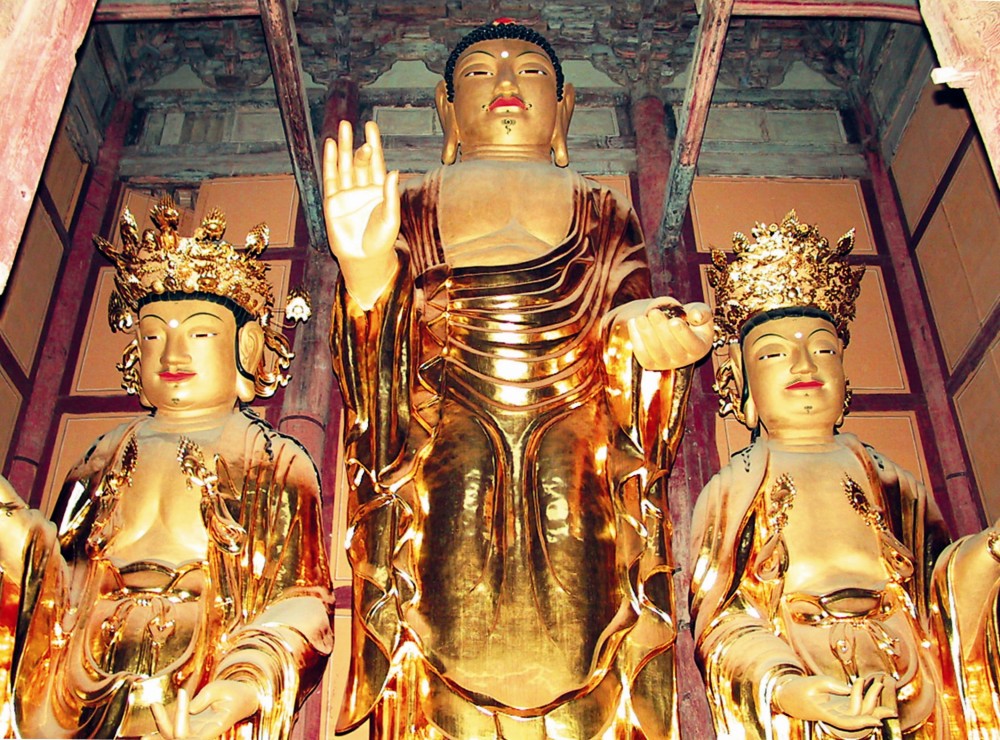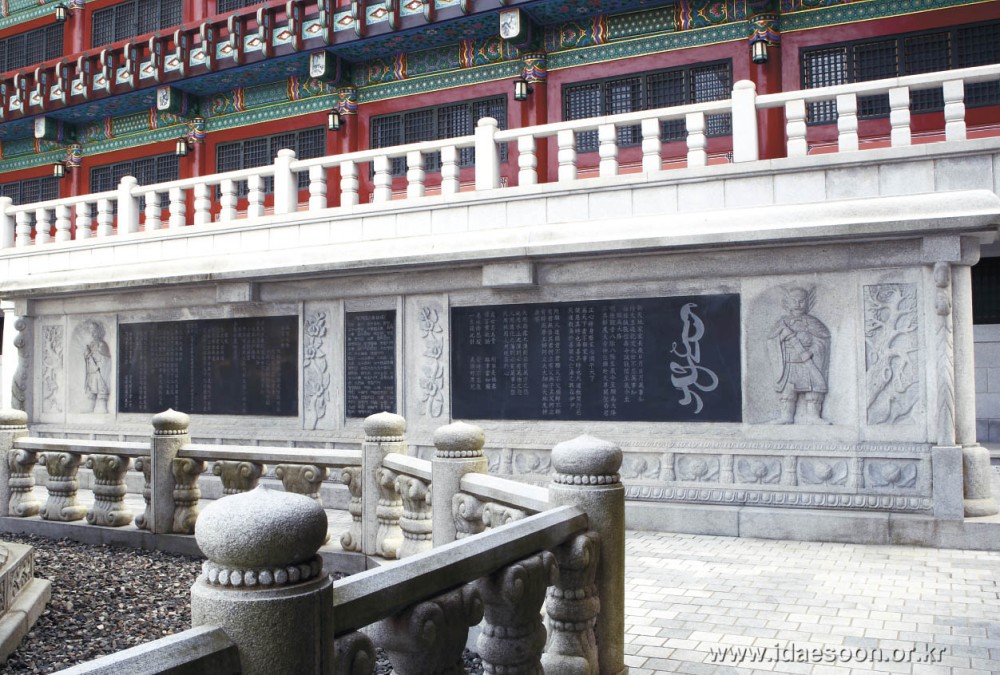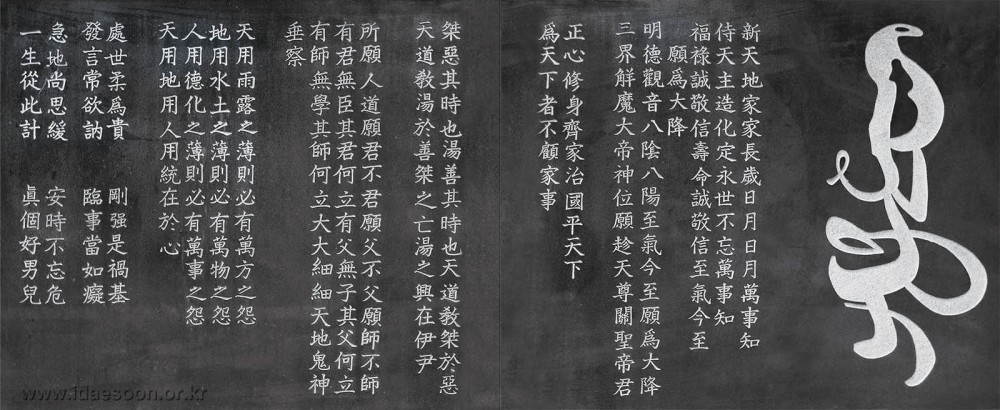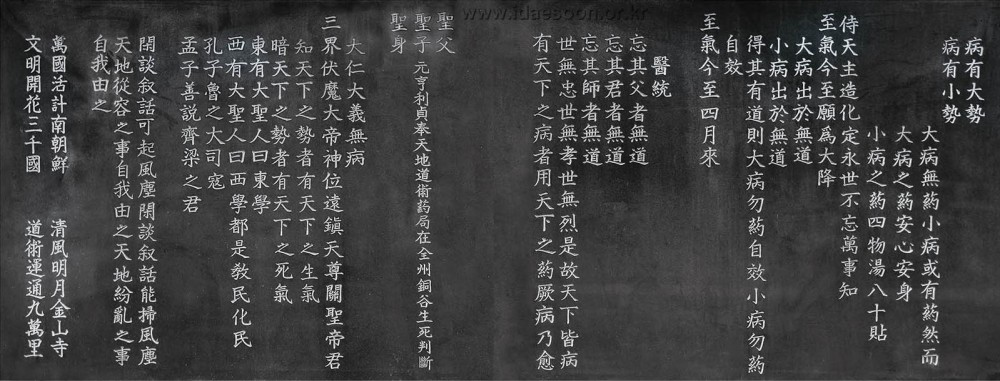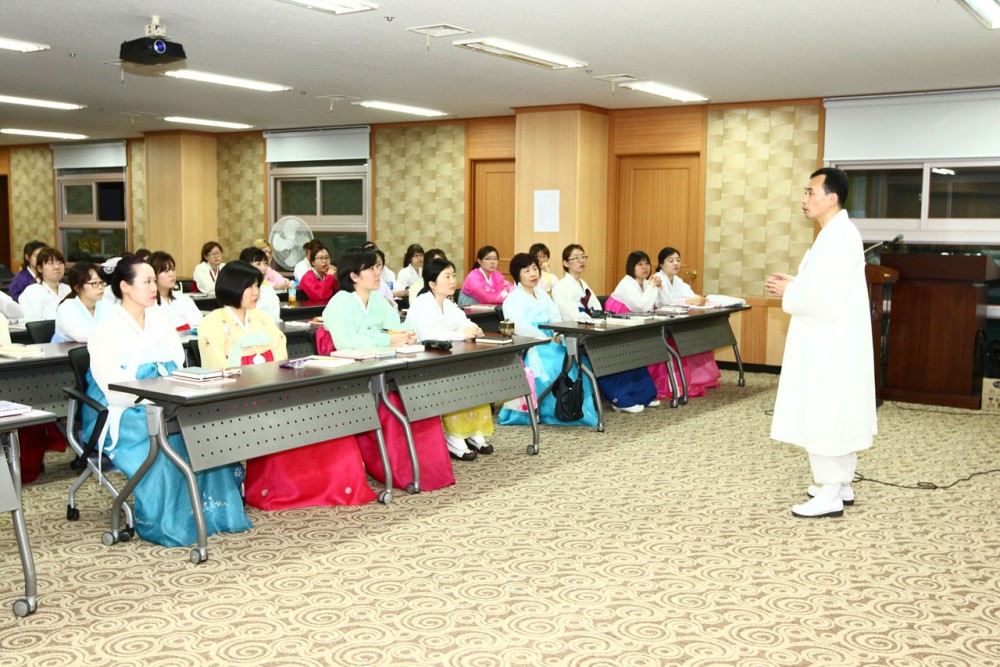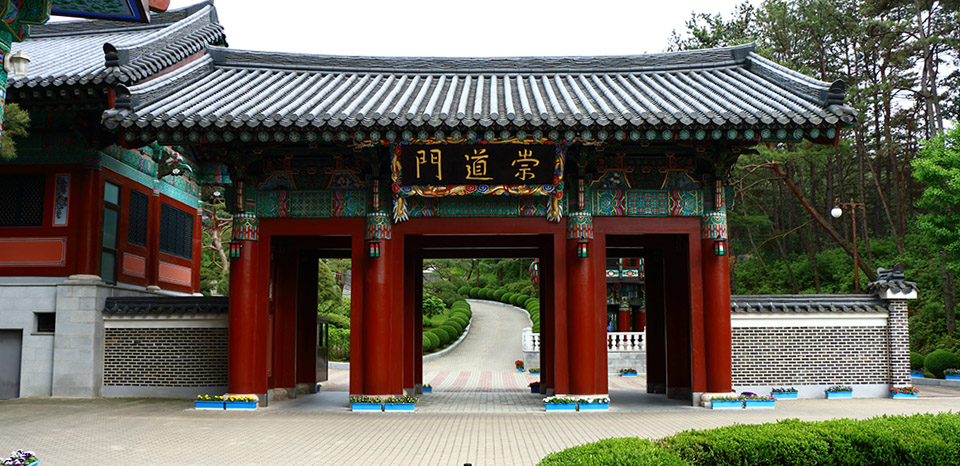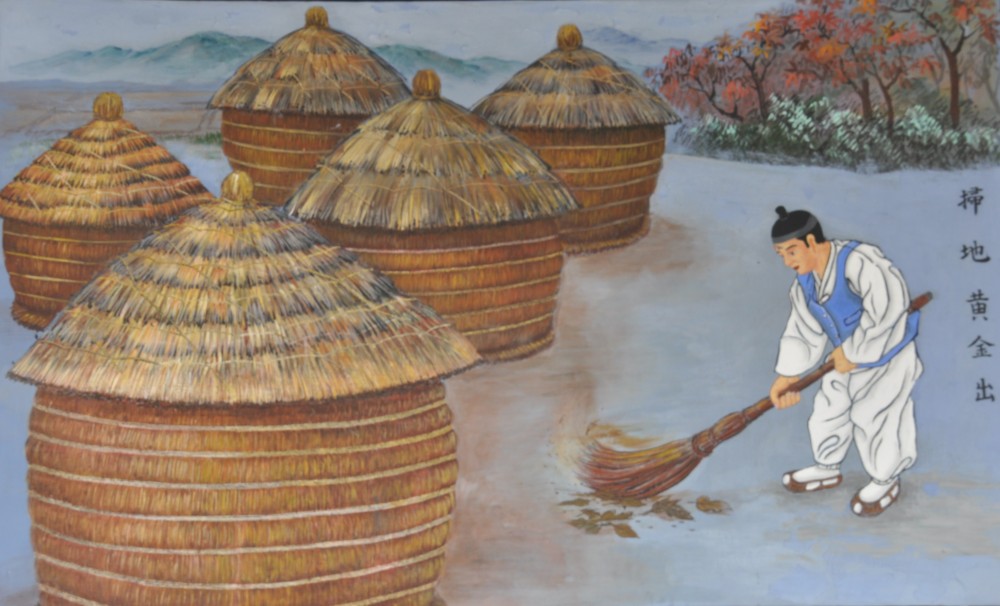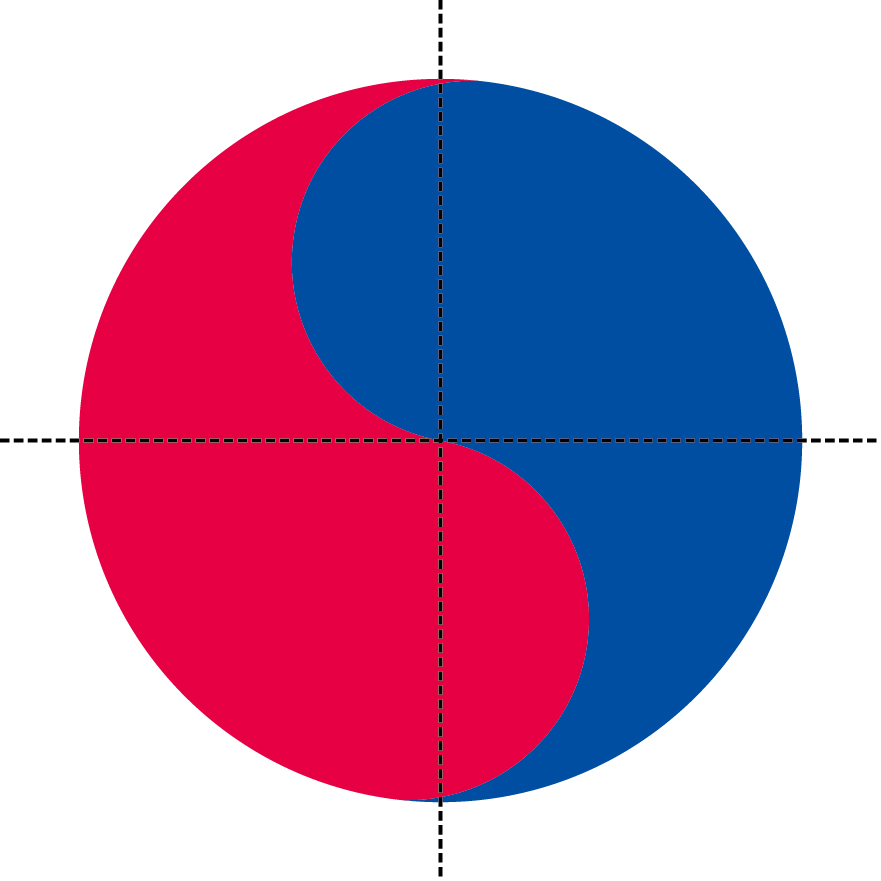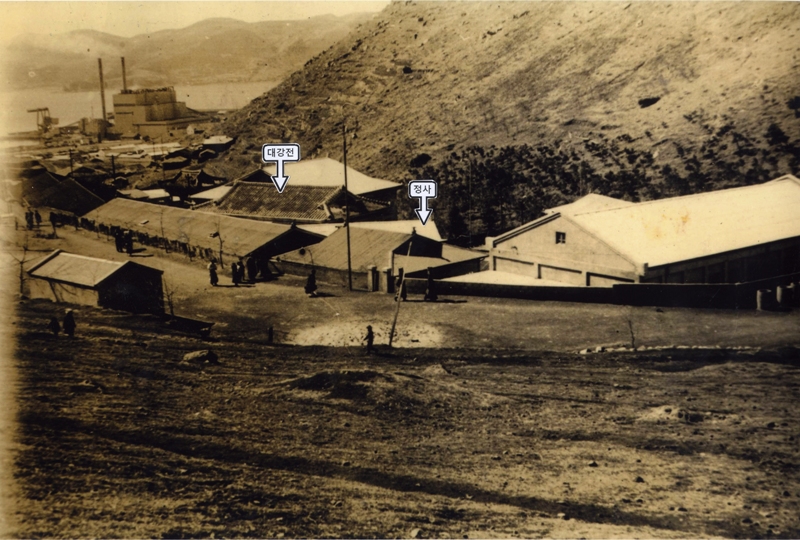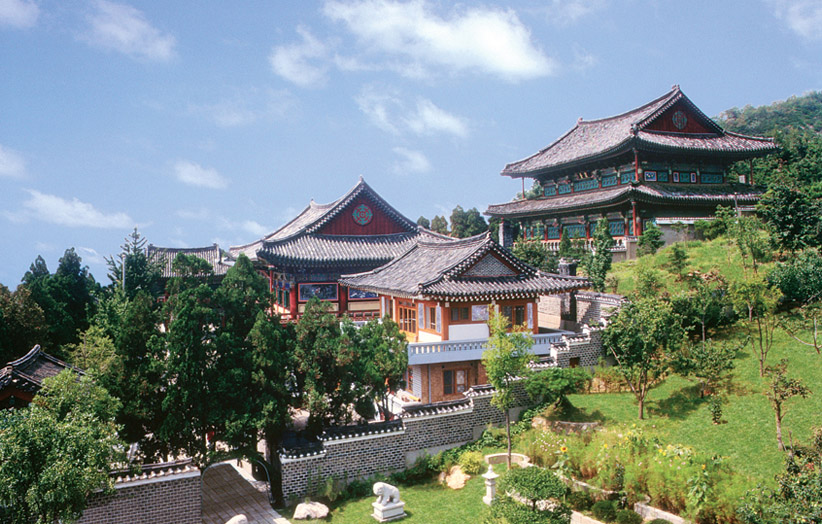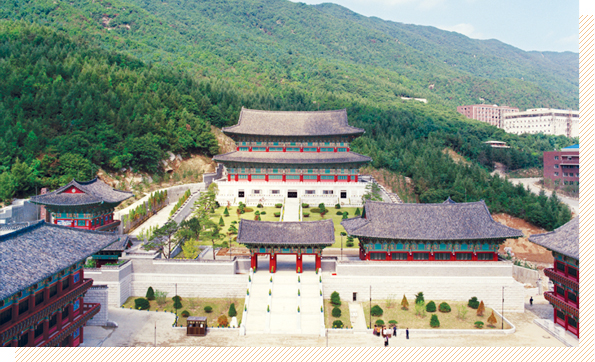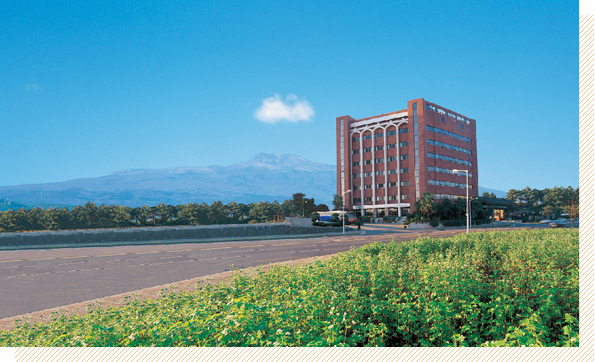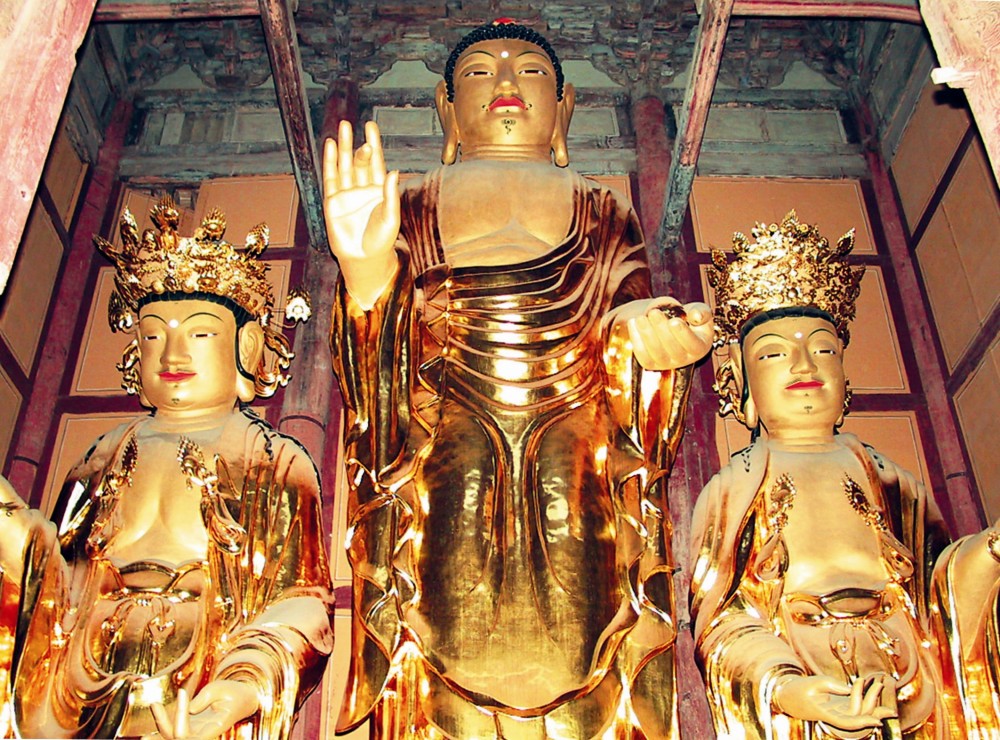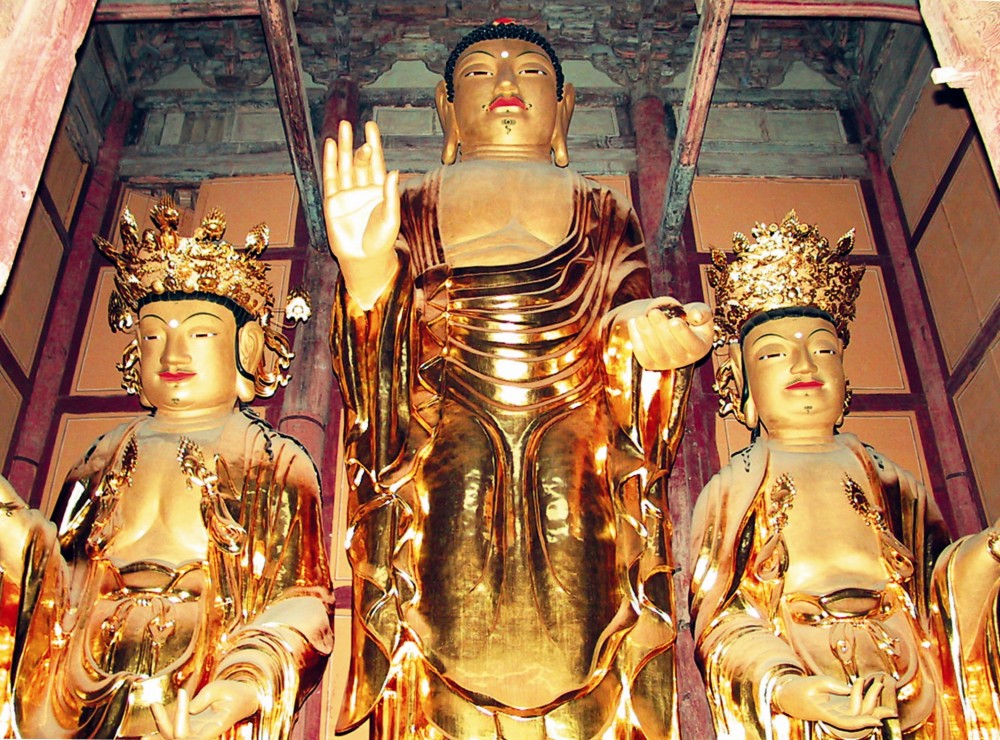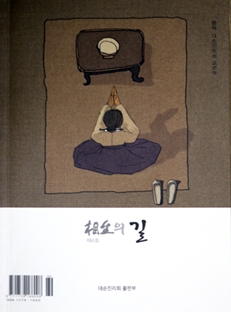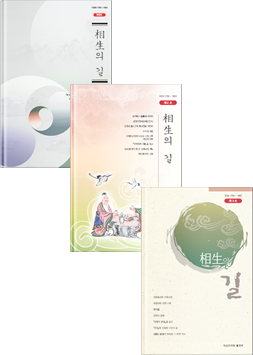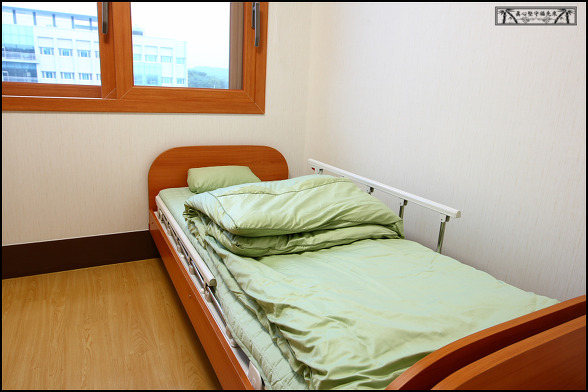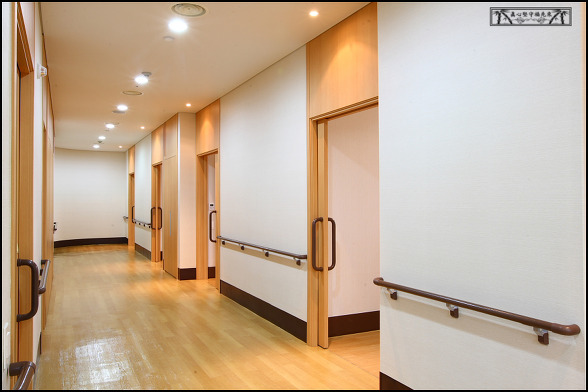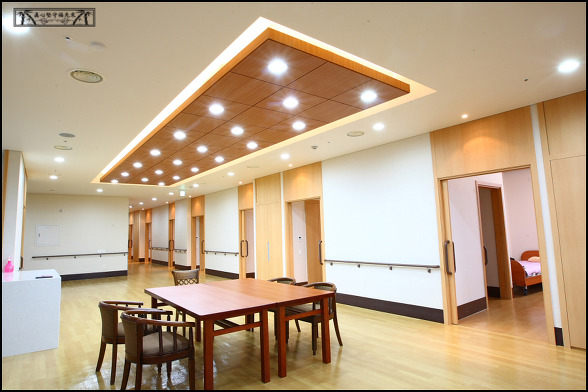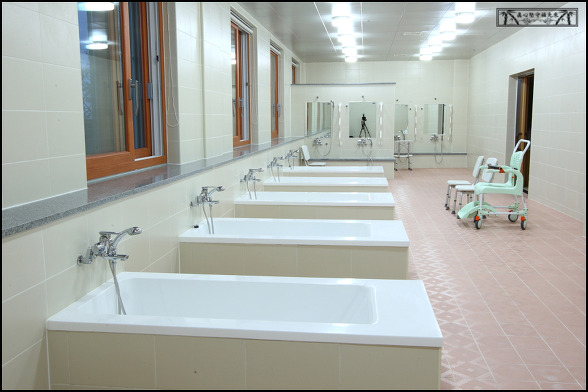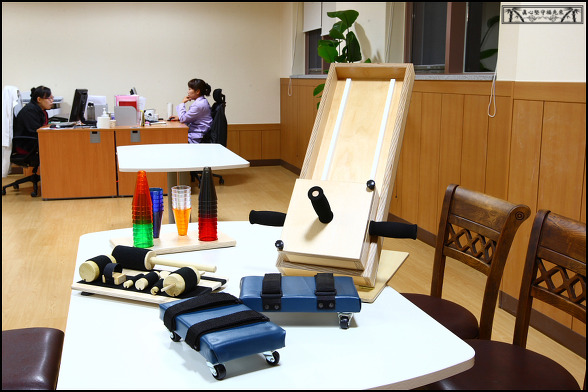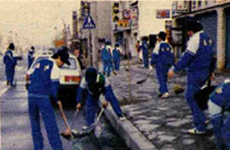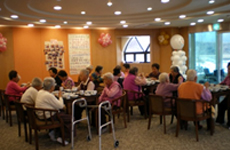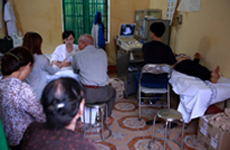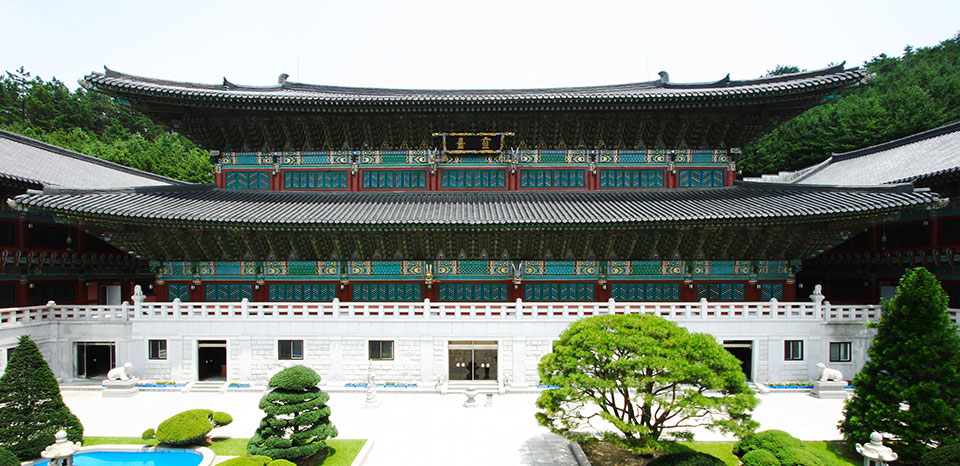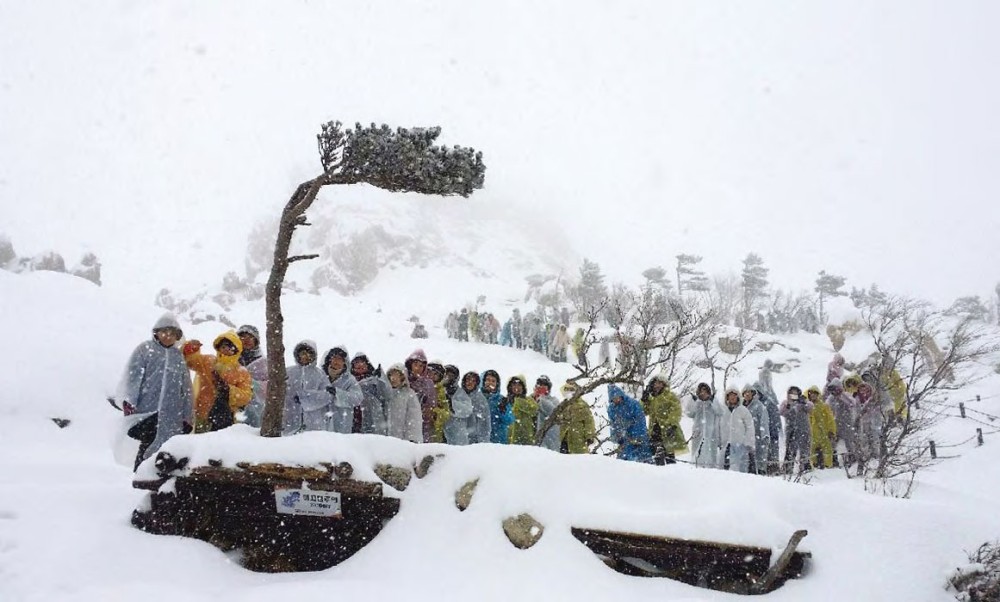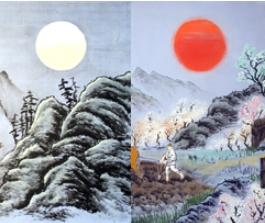Glossary
-
15 Jinju [15진주, 眞主]
The True Lord of 15 :Doju became the True Lord (眞主) of 15 when he was 15, which means he revealed himself as 'the True Lord' through the numerological sign of 15. Then he received the ‘Mandate to Serve Heaven (Bongcheon-myeong)’ via divine revelation while he was on his way to Fengtian (literally ‘serve Heaven’).
-
15Sinwi [15신위, 15神位]
15 Divine Positions :This is a divine system that is enshrined on Yeondae (the Shrine of Gods). It includes fifteen divine positions which consist of four categories as follows:
1) The first category is the Principle Holy Position (Wonwi) which includes the Supreme God of the Ninth Heaven (Kang Jeungsan), the Great Jade Emperor (Lord of the Dao Jo Jeongsan), and Shakyamuni Buddha.2) The second category is the Second Holy Position (Jaewi) which includes the Ten Judge Kings of the Postmortem Precincts (ten spiritual kings who judge human souls in the afterlife), the Five Mountain Kings (the five spiritual kings in charge of the mountains in five directions of Earth), the Four Ocean Dragon Kings (the four spiritual dragon kings in charge of the four seas), and the Terrestrial Kings of the Four Seasons (the four spiritual kings in charge of the four seasons).3) The third category is the Third Holy Position (Samwi) which includes the Sage-emperor and Martial Commander Lord Guan Yu (Chinese general Guan Yu, the heavenly Sage-emperor protecting against evil spirits or demons), the Great Emperors of the Seven Stars (the seven spiritual kings in charge of human lifespan and fortune), Paternal Ancestors, and Maternal Ancestors.4) The fourth category is the Fourth Holy Position (Sawi) which includes Messengers of the Seven Stars (the messengers who aid the Great Emperors of the Seven Stars), Right-flanking Messengers (the messengers who aid the Messengers of the Seven Stars), Left-flanking Messengers (the messengers who aid Messengers of the Seven Stars), and Messengers of the Postmortem Precincts (the psychopomps who guide newly arrived souls in the afterlife).
![]()
-
24 Seasonal Subdivisions [24 절후, 24 節候]
24 Seasonal Division Points : These are the twenty-four periods of season change known as 24 Seasonal Subdivisions (二十四節), which were established in the Han period in China. These are divisions based upon the position of the sun as observed from earth. The calendar derived from these observations was traditionally used for agricultural purposes in East Asia and is still in usage in modern times. The names for the 24 seasonal division points are Winter Solstice (冬至), Slight Cold (小寒), Great Cold (大寒), Beginning of Spring 立春, Rain Water (雨水), Waking of Insects (啓蟄), Vernal (Spring) Equinox (春分), Pure Brightness (清明), Grain Rain (穀雨), Beginning of Summer (立夏), Grain Budding (小滿), Grain in Ear (芒種), Summer Solstice 夏至, Slight Heat (小暑), Great Heat (大暑), Beginning of Autumn 立秋, Limit of Heat (處暑), White Dew (白露), Autumnal Equinox (秋分), Cold Dew (寒露), Frost's Descent (霜降), Beginning of Winter (立冬), Slight Snow (小雪), Great Snow (大雪). : -
Aims [목적, 目的]
There are six aims in Daesoon Jinriohoe. However, these aims form pairs. The paired aims are interrelated with each other. The ones which appear second are achieved based upon the first one. In other words, it is through former aims, that the latter are able to be achieved. These aims can serve as the best description of our identity and also as the best summary of the vision of Daesoon Jinrihoe.
They appear as follows:
- Guarding against self-deception - Re-creation of the Inner-spirit
- Realizing earthly immortality - Renovation of human beings
- Creating an earthly paradise - Re-creation of the World
-
Anniversary of Doju Jo Jeongsan’s Descent and Birth [도주님-탄강일, 道主님-誕降日]
The fourth day of the 12th month. -
Anniversary of Doju Jo Jeongsan’s Passing into Heaven [화천일(도주님), 化天日(道主님)]
The sixth day of the third month. -
Anniversary of Sangje Kang Jeungsan’s Passing into Heaven [화천일(상제님), 化天日(上帝님)]
The 24th day of the sixth month. -
Anniversary of Sangje’s Incarnation as Kang Jeungsan [강세일(상제님), 降世日 (上帝님)]
The 19th day of the ninth month
-
Awakening and Dao-Attainment [감오득도, 感悟得道]
Doju came to profoundly sense and awaken to the truth of Sangje's Great Itineration (Daesoon, 大巡) through the Three Realms and finally attained the Dao in the Jeongsa Year (1917), which was at the end of his nine-year Holy Work in Manchuria.
![]()
-
Bangmyeon [방면, 方面]
Local Branch : Local propagation groups or an autonomous organization for local propagation missions. They have their own names of Bangmyeon, which used to be approved only by Dojeon. But, now it is approved by Headquarters. The Bangmyeon can be generated only when a certain amount of propagation performance is achieved and approved. They could have subordinate Bangmyeons when it is grown enough to have them. In that case, Suim-seongam (the most senior Seongam) can be in charge of all Bangmyeons as a representative. The Bangmyeon can maintain Fellowship Buildings (Haegwan, Local Temples) while the lower subordinate Bangyeons can have their own Fellowship Halls (Haesil) or Progragation Centers (Podeokso). However, the Fellowship Buildings can be shared by all the subordinate Bangmyeons, whereas others can be used only by the subordinate Bangmyeon that established them. -
Basic Works [기본사업, 基本事業]
We should cultivate ourselves according to the three principle of faith known as Basic Works. They are divided into three parts: propagation, edification and cultivation -
Beonnoe [번뇌, 煩惱]
Pain, affliction, or defilement aroused from own your mind :It refers to all the mental functions which obstruct the mind and pollute the mind and body and the basis for all unwholesome actions and things that bind people to the wheel of unavoidable pain and anguish. It is also variously translated as defilements, temptations, worldly passions, or frustrations, that disturb the peace of mind and obstruct the way of enlightenment.
![]()
-
Boeun [보은, 報恩]
grateful reciprocation of favors : returning thanks for favors one received. -
Boeun-sangsaeng [보은상생, 報恩相生]
Grateful Reciprocation of Favors for Mutual Beneficence :Together with Haewon-sangsaeng, it is the key idea that represents Daesoon Truth.
![]()
-
Bojeong [보정, 補正]
Executive members for Correction and proper guidance : An upper-level clergy member in charge of providing proper guidance and performing rectification affairs at their branch. -
Bonbuseong [본부성, 本部誠]
Monthly Headquarters Assembly for Monetary Offering : A monthly assembly event in which the representatives of high-ranking clergy members devote a monetary offering collected from general members to Gucheon Sangje. -
Bonggangjeon [봉강전, 奉降殿]
The Hall of Drawing in Heavenly Energy :Bonggangjeon building was used as the Main Sanctuary Building before the current one was built. In the front, there are candle sticks, incense burner, and a pair of Haetaes, heavenly lions. In the yard, there is water fountain and another pair of Haetaes. Candle sticks and incense burners are used when we make offering or perform devoted services to divine beings. Therefore, what those items which are placed in front of the building imply is that great deities are enshrined in this building. Therefore, these items are placed in front of the Main Sanctuary Building and this Bonggangjeon both of which house shrines.![]()
-
Bonjeon [본전, 本殿]
Main Sanctuary Building :Main Sanctuary Building is the most sacred building of all at each temple complex as it houses ‘Yeongdae’ on its fourth and highest floor. It also has the portrait of Sangje on the 2nd and 3rd floor. Main Sanctuary Building was built in a traditional Korean-style with 4 stories, however, it looks like a 3-story building from the outside. It is located in the innermost place of temple complex. Various ritual ceremonies and other events are held in this building.
![]()
-
Catastrophic status caused by discord and disharmony [비겁 , 否劫]
The existing Degree Number of the devine world in operation was distorted and deviated because it was overwhelmed by mutual contention, so that devine (spiritual) beings couldn't favorably interact and communicate with one another and had fallen into their discord and disharmony. Eventually the divine world was fallen into a disastrous and catastrophic state.
-
Celestail Maidens Weaving Silk [선녀직금, 仙女織錦]
This painting depicts celestial maidens weaving silk fabric.
![]()
-
Chambae [참배, 參拜]
Temple Acclimation :Temple Acclimation includes a worship ceremony in Yongdae and a guided tour of the temple grounds featuring in-depth explanations.
![]()
-
Charity Aid [구호자선사업, 救護慈善事業]
Charity Aid : Charity Aid is an activity which supports the victims of natural disasters and helps people in need. Since its early days, Daesoon Jinrihoe has carried out various Charity Aid Works based on the teachings of Park Wudang who said, “Do your best to give love and hope to people neglected from society by helping them to rehabilitate and begin new lives on their own.” -
Chaseongam [차선감, 次宣監]
Propagator Emeritus : A preparatory (associate) upper-level clergy likely to become a Seongam. -
Cheok [척, 慼]
Emotional Grudge : Cheok is an emotional grudge in vengeful energy that another person or spirit conceives against you. In case of spirit, it is known as Cheok-spirit.
-
Cheoksin [척신, 㥻神]
Vengeful Spirit : Since Cheok (the emotional grudge) is the effect of a spirit in grudge, it can also be called a ‘Cheok spirit’. -
Cheonggyetap Pagoda [청계탑, 靑鷄塔]
Tower of Dao :Cheonggye Pagoda represents the cosmology of Daesoon Jinrihoe. The word Cheonggye (靑鷄) means ‘blue (靑) rooster (鷄)’. When 靑 (Cheong, chinese word for blue), is separated into smaller components, it have meaning of 12 months. In a year consisting of 12 months, there are four seasons, 24 seasonal subdivisions, and 72 additional subdivisions.There is also the cycle of birth, growth, fruition, and storage throughout 12 months, wherein a cycle of creation, transformation, and perfection take place. The rooster indicates the West or Autumn in I Ching (the Book of Changes). Also, the rooster cries in the morning to awake people from sleep. Therefore, Cheonggytap Pagoda is a symbol that signifies the coming of New World of Earthly Paradise: the autumn season of the universe.The Pagoda consists of four main sections: footstone, lower body, upper body, and top.The footstone section is composed of three layers.The first layer features a series of engraved pictures called Ox Seeking Pictures (Simudo). Simudo represent the cultivation process of the individual devotee to achieve the aims of Daesoon Jinrihoe (realizing Earthly Immortal and the building of Earthly Paradise). This represent Humanity World.In the second layer, there are four spiritual animal deities (Sashindo) who represent the four seasons and four directions. The four spiritual animals are the Blue dragon of the East, the White Tiger of the West, the Red Phoenix* of the South, and the Black Tortoise of the North. This symbolic animals represent Heavenly World.In the third layer, there are twelve deities of the Chinese zodiac (Sibijisindo), who correspond to the twelve months and twelve directions. These 12 symbolic animals represent Earthly World.Therefore, the footstone section represent the Three Realms of Heaven, Earth, and Humanity.The lower body includes three octagonal layers which have 24 faces, engraved with the twenty-four divinities who oversee the 24 seasonal subdivisions.The upper body includes seven quadrangular layers which have 28 faces, engraved with the images of the twenty-eight divinities in charge of the 28 constellations.The top consists of nine round layers, representing the Ninth Heaven, the highest place in the universe and the seat of Sangje, who coordinates the whole universe from that location.In conclusion, Cheonggytap is a monumental sculpture that shows the entire divine system of the universe consisting of Sangje, deities in charge of 24 seasons and 28 constellations, the earthly deities of 12 months, the 4 deities of the 4 directions and seasons. Therefore, it is a symbol that represent how our Dao is Divine Dao (shindo). Together with the Simudo on the first layer of the footstone, the pagoda depicts Daesoon Jinrihoe Dao practitioner in their cultivation of Divine Dao.Moreover, Cheonggytap Pagoda shows the lineage of religious orthodoxy of Daesoon Jinrihoe. First, the symbols of the tower indicates Divine Dao of Sangje. Second, the first Chinese letter of the tower’s name, 靑(cheong or qīng in Chinese) means blue, and reminds devotees of the True Laws established by Doju who was born in December, the twelfth month which can be found in the smaller components which make up the Chinese character cheong. Third, Dojeon is the one who took the True Laws of Doju and manifested them into this sculpture.This pagoda was completed in April 1988 to celebrate the inauguration of Yeoju Headquarters Temple Complex which had been completed in October of 1986.![]()
-
Cheonji-dosu [천지도수, 天地度數]
Degree Number of Heaven and Earth : Heavenly-ordered predeterminations (or preordained principles by Heaven): celestial and cosmic plans previously made by Sangje in the divine world, which will unfold through various events in the human world each in their own due time.
-
Cheonji-gongsa [천지공사, 天地公事]
The Reordering Works of Heaven and Earth : ‘The Reordering Works of Heaven and Earth' were a series of reconstruction projects directed at the former state of Heaven, Earth, and Humanity. These Works were performed by the Supreme God (Sangje) in order to reform the nature of the old Heaven and Earth ruled by mutual contention and to optimize old Humanity into a new form suited to the Earthly Paradise of Later World.
-
Chilseongdaeje [칠성대제, 七星大帝]
The Great Emperors of the Seven Stars : The Seven Stars kings who are in charge of human lifespan and fortune. -
Chiseong [치성, 致誠]
Devotional Offering Ceremony : A ceremonial ritual offering held in an elaborate and collective way to show one’s gratitude with utmost sincerity for the grace of Sangje and other great deities. There are nearly 20 Chiseongs at Temple Complexes in a year. This is held to mark important seasonal dates or major events throughout the year. There are another Chiseongs other than them such as Fellowship Building Anniversary Chiseong to celebrate the opening date or Ipdo-Chiseong (Initiation Ritual Ceremony). These are also regarded as one of Chiseongs. -
Choe Je-u [최제우, 崔濟愚]
Choe Je-u (崔濟愚, 1824-1864), a religious thinker who lived at the end of Joseon Dynasty. He is the founder of Eastern Learning (Donghak 東學). His original name was Je-Seon (濟宣) and his honorific name was Suwun (水雲). ‘Je-u’ means ‘redeemer of the foolish,’ which he named himself, embracing his will to save humankind despite its foolishness.
![]()
-
Collected Treatises of Daesoon Thought [대순사상논총, 大巡思想論叢]
This is an academic journal published by Daesoon Academy of Sciences, the affiliate research institute of Daejin University. This publication is published to promote the academic enrichment of Daesoon Thought and to fulfill the ideals of Daesoon Jinrihoe. Furthermore, it contributes to peace and harmony in human society through its wide study on a variety of subjects which includes an array of research into various religions and cultures. This journal has been published twice each year since its first issue which was released on December 21, 1996.![]()
-
Commemoration of the Enshrinement at Yeongdae [영대 봉안일, 靈臺奉安日]
The 25th day of the tenth month -
Constant Dao [상도, 常道]
Duties, reasons, principles, and rules that must be always observed and not change : Normal way, the heavenly way and the moral ethics -
Creeds [신조, 信條]
Creeds are the prerequisite conditions that Dao cohorts have to follow to achieve the aims of Daesoon Jinrihoe. The category of Creeds consists of 'Four Cardinal Mottos' and 'Three Essential Attitudes.'
They appear as follows:
- The Four Cardinal Mottos: Quieting the mind, Quieting the body, Reverence for Heaven, Cultivation- The Three Essential Attitudes: Sincerity, Respectfulness, Faithfulness -
Cultivation [수도, 修道]
Cultivation is the devotional recitation of predesignated incantations consistently with a quiet and calm mind and body so as to give rise to a singular-focused mind. This is the basic means for attaining spiritual mastery. The mind should also be imbued with reverence and sincerity toward the endless worship of the Supreme God.
By doing so, you can fill your Dantian* with the energy you receive from divine beings and even the Supreme God. This gradual build-up of energy culminates in spiritual mastery which unfolds as a perfect integration with divine spirits.
Cultivation is divided into three parts: Holy Works, Ritual Prayer, and Spiritual Training. In addition to these forms of spiritual cultivation, Dao cohorts also attend Devotional Offering Ceremonies, key rituals which are held almost every month. -
Cultivation within Yeonwun [연운 수도 (체계속의 수도), 緣運 修道]
Cultivation within the Organizational System : Our daily cultivation should be maintained within our organizational system bound by Yeonwun (緣運, Destined Human Relationships). This system is our unique human network of karmic affinity with one another as endowed by Heaven. With the guidance and sponsoring received from mentors (Dao Transmitters), the mentees (Dao Transmittees) come to eventually actualize the ‘Precepts’ and ‘Ethical Rules’ in their daily lives. In the meantime, their ethics, morality, and conscience can gradually improve. Therefore, bolstered by this system and Yeonwun, our cultivation ultimately ripens into 'the Resolution of Grievances for Mutual Beneficence' and the achievement of our final goals. -
Daejin Youth Training Center [대진청소년수련원, 大眞靑少年修鍊院]
Daejin Youth Training Center was built to realize a well-rounded education. The facility is a four story building with a basement and it can accommodate 200 people. For the purpose of raising truthful future generations, the center has run various educational programs since its opening in March of 2013.
![]()
-
Daesoon [대순, 大巡]
Itineration : This refers to Sangje’s procession throughout the Three Realms, similar to a king making a circuit about his kingdom as part of his governing or administering of justice. Sangje’s Great Itineration took Him throughout the Three Realms that make up the entire World in traditional East Asian cosmology. These Three Realms are (1) the realm of Heaven, including all divine beings and spirits, (2) the Realm of Earth, the world of natural living beings and (3) the realm of Humanity, the world of human civilization and societies. -
Daesoon Jichim [대순지침, 大巡指針]
The Guiding Compass of Daesoon :This is a summary of Dojeon Park Wudang’s teachings which provides the guidelines for cultivation in Daesoon Jinrihoe.
![]()
-
Daesoon Jinri [대순진리, 大巡眞理]
Daesoon Truth (the Truth of Great Itineration) : The holy teachings revealed by Sangje through His Reordering Works of Universe to save the Three Realms of Heaven, Earth and Humanity which have been encapsulated into the Four Tenets of Daesoon Jinrihoe (Virtuous Concordance of Yin and Yang, Harmonious Union between Divine Beings and Human Beings, Resolution of Grievances for Mutual Beneficence, and Perfected Unification with Dao) -
Daesoon Magazine [대순회보, 大巡會報]
This is a monthly magazine that delivers news about Daesoon Jinrihoe and also contains writings and essays to inspire Dao cohorts through Daesoon Truth. It was first published in January of 1983.![]()
-
Daesoon News [대순뉴스, 大巡新聞]
This was a monthly magazine that delivered news about Daesoon Jinrihoe to inspire faith in Dao cohorts. A total of 37 issues were published between December 2003 and November 2006.
![]()
-
Daesoon scholarship foundation [대순장학회, 大巡奬學會]
"In 1976, the Daesoon Scholarship Foundation was launched based on the following words of Dojeon: “Expand the amount of scholarship on a yearly basis in order to cultivate talented individuals for the benefit of the nation as well as for our religious body.”Scholarships are granted to excellent students from needy families twice a year. They are awarded under many different names: ‘Scholarship for Exemplary Students,’ ‘Scholarship for Honor Students,’ ‘Scholarship for Junior and High School Children of Daesoon Jinrihoe Members,’ and ‘Scholarship for Students of Daejin University.‘ As of 2015, the total value of the scholarships granted was nearly 43 million dollars."![]()
-
Daesoon Seongjeon Hall [대순성전, 大巡聖殿]
This is a sanctuary building enshrining a series of sacred paintings with explanations which feature lifelong histories of the Supreme God (Sangje, Kang Jeungsan) and Lord of Dao (Doju, Jo Jeongsan). The paintings are placed on the both sides of the primary godship. Also, the major achievements of Holy Leader, (Dojeon, Park Wudang) who established Daesoonjinrihoe are enshrined in the same way.
![]()
-
Daewonjong [대원종, 大願鍾]
An Iron bell to cherish mankind’s greatest wish :This bell contains the hope of Dao practitioners to achieve peace for all humanity. It has a weight of 27 tons, a diameter of 2.3 meters, and a length of 4 meters, and had its Inaugural Striking Ceremony of the Bell performed on June 24, 1993 (lunar calendar). The Bell Pavilion wherein the bell was installed is shaped like the Chinese character ’jing (井, well).’ Atop the roof is a nine-leveled, cloud-shaped finial representing the nine heavens. It is struck four times a day on weekdays and eight times on the final day of the traditional East Asian five day long 'week.‘
![]()
-
Daewonjong(Book) [대원종(책) , 大願鍾(冊)]
An iron bell to cherish mankind’s greatest wish.(Book) :His is the first issue of the selection of articles published under the title of Daewonjong in Daesoon Magazine. The articles are known to be useful and widely used for edification. It was published in December of 2016.![]()
-
Dancheong [단청, 丹靑]
Traditional Korean Multi-colored Paintwork :Dancheong is a traditional Korean style of painting that is used on walls, pillars, and ceilings in interior and exterior architectures to create harmoniously colored paintings and patterns. The name ‘Dancheong (丹靑)’ comes from the word ‘dan (cinnabar 丹)’ referring to ‘red coloration’ and ‘cheong (bluish-green 靑)’ referring to ‘blue coloration.’ The interaction of these two main colors represents the harmony of Yin and Yang while the twelve colors of Dancheong paints represent the ideal world wherein all phenomena throughout the universe are brought into harmony and concord. The function of Dancheong paints in traditional Korean architecture is to protect wooden structures from weathering while also spatially separating sacred environments from secular environments.
![]()
-
Dantian [단전, 丹田]
Elixir Field : This is an energy center about two horizontal finger widths below the navel. It is an important focal point for meditative and exercise techniques such as qigong, martial arts. There are actually three elixir fields, but this refers to the bottom elixir field; the other two being at the center of the chest and between the eyes. -
Danzhu [단주, 丹朱]
He was the son of the legendary Chinese Emperor Yao (Tang Yao). In Daesoon thought, the grievance he had bored as he failed to succeed the throne became the first grievance of humanity from which all grievances were created one after the other until they filled the whole world of today. -
Deasoon Truth [대순진리, 大巡眞理]
The Truth of Great Itineration : The holy teachings revealed by Sangje through His Reordering Works of Universe to save the Three Realms of Heaven, Earth and Humanity which have been encapsulated into the Four Tenets of Daesoon Jinrihoe (Virtuous Concordance of Yin and Yang, Harmonious Union between Divine Beings and Human Beings, Resolution of Grievances for Mutual Beneficence, and Perfected Unification with Dao) -
Department of Edificatory Services [교무부, 敎務部]
The Dep. of Edification Services is in charge of doctrinal research and edification services. -
Department of General Affairs [총무부, 總務部]
The Department of General Affairs announces a monthly Day of Sincerity in addition to performing its own duties. -
Department of Planning [기획부, 企劃部]
this department takes responsibility for anything but the tasks that three other departments take. -
Department of Proper Guidance [선도부, 善導部]
Department of proper guidance and recification affairs. -
Deputy director [차장, 次長]
Deputy head of department. -
Descent to the World [강세, 降世]
Descending to human world. -
Divine beings of Heaven and Earth [천지신명, 天地神明]
The great deities of Heaven and Earth. -
Divine Dao [신도, 神道 ]
Divine beings are ever involved in the affairs of Daesoon Jinrihoe due to the Holy Works and divine planning of Sangje. Doju likewise exerted himself devotedly throughout his 50-year Holy Works which led to the systemization of incantations and various cultivation methods that we now implement in our daily lives. Through these methods, we are able to interact and harmonize with divine beings during our ritual ceremonies and at other times as well. Divine beings have been called upon to cooperate with us in all our activities, and this even extends to the building of our structures. This is the means by which all the grudges and grievances accumulated throughout the Three Realms are now eligible for resolution. Grievance resolution begins in the spiritual realm wherein divine beings work toward our gradual transformation and the renewal of our spirits and bodies. This is the reason why the Dao that is specific to Daesoon Jinrihoe is sometimes referred to as ‘Divine Dao (神道).’
-
Divine Position of Waiting and Responsing to the Order [내대지위, 來待之位]
Divine beings are to wait and perform the order from higher divine beings. -
Diving Being [신명, 神明]
The deities in Daesoonjinrihoe indicate real entities that coexist with humans. -
Do not deceive yourself Do not deceive your heart-mind [마음을 속이지 마라, ]
Since the mind is a master of each body, all human words and actions are an expression of it. The mind has two dispositions: the conscientious and the selfish. Whereas the conscientious mind is the innate mind which comes from the nature of Heaven, the selfish mind is a product of desire arising from material greed. Though the essence of human nature is a conscientious mind, one becomes caught up in selfishness, which leads to words and conduct that are immoral and unreasonable. Abandon the selfish mind and commit yourself to recovering your conscientious mind. All human evils arise from self-deception; therefore, by the honesty and authenticity that is the essence of human nature, rid yourself of these evils. -
Do not disregard the beneficence bestowed upon you [은혜(恩惠)를 저버리지 말라, ]
Beneficence is the benefit that others give to you. To disregard this is to forget their beneficence and betray their goodwill; you are indebted to others and you must reciprocate. You are indebted to Heaven and Earth for your life, lifespan, and happiness, so you should do your utmost to devote yourself to the Human Way (This is a technical term referring to the Way that human beings should follow, which mimics the Heavenly Way and thereby pervades all beings.) by establishing the great ethic of reciprocity through sincerity, respectfulness, and faithfulness. You are indebted to your nation and society for your security and comfort, so you should do your utmost to devote yourself to fostering the development of society and the well-being of the community and fulfil your obligations as a citizen through your loyal devotion and service. You are indebted to your parents for your birth and rearing, so you should do your utmost to devote yourself to practicing filial piety through the great ethic of ancestor veneration and reciprocation. You are indebted to your teachers for your education and edification, so you should do your utmost to devote yourself to practicing pious discipleship through respecting and passing on their teachings. Finally, you are indebted to your employers for your livelihood, wages, and position, so you should do your utmost to devote yourself to fulfilling your duty through trustworthiness and industriousness. -
Do not provoke Cheok [척(慼)을 짓지말라, ]
Cheok means the grievances or grudges that others hold against you, that is, the grudges you might cause them to bear against you. To hate others and to betray another’s goodwill are both actions that provoke Cheok. Therefore, when interacting with others, prevent Cheok by loving them and being gracious towards them through the virtues of politeness, gentleness, humility, and modesty. -
Dogi [도기, 道旗]
The Holy Symbol of Dao :Daesoon means 'circle', and is related to the philosophical concepts of Mugeuk'* and Taegeuk'*. It symbolizes the principles of universal changes (or circulation). The three circles (black, yellow, and red) in the symbol signify that the whole universe consists of the Three Realms: Heaven, Earth, and Humanity. The Chinese character ‘大 (Great)’ appears four times within the circle. This implies the four basic principles of change in nature: Birth, Growth, Ripeness, and Storage, which develop into the four seasons of spring, summer, autumn, and winter and four directions of north, east, west, and south. Furthermore, it also implies benevolence, propriety, righteousness, and wisdom as found in the way of humanity.
![]()
-
Doin [도인, 道人]
Dao cohort : The individual who agreed to follow the Dao Constitution and devote his/herself into cultivation of Daesoon Truth as Doa ractitioner. It is also sometimes refered to as Dao proactitioner, deciple, or devotee. -
Dojeon [도전, 道典]
The Leader of Pinciple : Do (都)’ means ‘lead’; ‘jeon (典)’ signifies ‘law,’ ‘principle’ or ‘canon.’ Dojeon is the top position that represents and leads Daesoon Jinrihoe; its usage refers to Park Wudang (朴牛堂, secular name Han-Gyeong, 1917-1996), who established Daesoon Jinrihoe after inheriting the religious orthodoxy from the order founded by Doju Jo Jeongsan. He is the only Dojeon recognized by Daesoon Jinrihoe.
-
Doju [도주, 道主]
The Lord of the Dao : Do (道)’ is the Korean pronunciation of Dao; ‘ju (主)’ refers to lord, owner, or master. Jo Jeongsan (趙鼎山, secular name Cheol-Je) was the founder of the religious order that has been transmitted across Mugeuk-do, Taegeuk-do, and Daesoon Jinrihoe, in that order, he is the only one called Doju, which is often translated as Holy Founder. -
Dol hareubang [돌하르방, ]
Dol hareubang, or stone grandfather is indigenous to Jeju Island. It is a symbol of a curfew. From religious view, they are known as a diety that stand outside the gate and offer protection against demons. If you look at Dol hareubangs here, their hands are in different position. The one with his right hand on top of left hand is a civil officer, and the other with left hand on the top is a military officer. We have to be more respectful when entering Sungdo Gate.![]()
-
Donggeurami [동그라미, ]
Donggeurami' was first published in December of 2007 as a magazine for adolescents. It was originally intended to deliver news about summer and winter youth camps. Today, it is issued quarterly in three sections: Daesoon Truth, Culture, and Camp news. This magazine is designed to provide our youth with an easier way to approach Daesoon Truth, other related information, and peer submitted content so young Dao cohorts can share their thoughts with one another.![]()
-
Donggok clinic [동곡약방, 銅谷藥房]
An apothecary where Sangje Kang’s Reordering Works were performed mainly to cure all kinds of diseases in the world.
![]()
-
Dosu [도수, 度數]
The Degree Number : Celestial and cosmic plans previously made by Sangje in the divine world, which will unfold through various events in the human world each in their own due time. -
Dotong [도통, 道通]
Dao-unification : Dotong is a state of spiritual mastery describable as perfected unification with Dao. Through enough cultivation and devotion to the realization of Daesoon Truth, we can reach the true state of ‘Self as Dao and Dao as Self’ and penetrate into the principle of all things. This renders the Three Realms transparent and inevitably results in a thorough understanding of all myriad forms both dense and close. Also, we can be empowered by Dao in such a manner that we are enabled to interact with all wholesome spirits, and everything comes to unfold just as we wish. This is do-tong (道通, Dao-unification). When the time is right, all the gods of Dao-unification from Confucianism, Buddhism, and Daoism shall gather and enable people to achieve unification with Dao according to each person's degree of individual cultivation. -
Dotong-gunja [도통군자, 道通君子]
Dao-Empowered Sages : A noble human being who is fully enlightened to Dao: Perfected human beings who have the wisdom to fully understand everything in the universe beyond space and time while possessing the empowerment to do all things at their will. -
Dotong-jingyeong [도통진경, 道通眞境]
The Perfected State of Unification with the Dao : This means that humans and the entirety of the Three Realms reach a perfected and truly enlightened state. Once mind and body have become perfectly clean and pure without any grievances through cultivation, one can be completely unified with great divinities and eventually reach human perfection. The Three Realms of Heaven, Earth, and Humanity will likewise be elevated into the highest dimension. Those who reached this state will have a thorough and full understanding of all things in the universe with the ability to do anything they wish. By doing so, an everlasting paradise will eventually come to arise in this world. -
Earthly branches [지지, 地支]
The cycle of the twelve terrestrial branches of Chinese astrology which are zi, chou, yin, mao, chen, si, wu, wei, shen, you, xu, hai. These cyclical names can be used for identification whenever anything is divided up into sets of twelve. -
Earthly Paradise of Later World [후천선경, 後天仙境]
The Perfected State of Dao-Unification in the New World after the Great Opening. In the Later World, all people shall acquire eternal youth and immortality. Upon merely opening a chest, clothing and food shall be readily available. All countries shall enjoy peace, and jealousy and war shall disappear. And all people shall become one family. Through the art of creation, they shall be governed according to laws and reason and without need of force or punishment. Officials, naturally becoming more moderate and rational, shall enjoy only as much authority they truly deserve and no additional authority beyond that. People shall not be agonized by worldly desires or resentment. Also, free from disease, aching, death, and burial, they shall be blessed with eternal youth and immortality. In addition, distinctions shall no longer exist between rich and poor. And people shall be able to travel anywhere freely and, moreover, ascend to and descend from Heaven freely due to its lowering. Their wisdom will be so thoroughly illuminated that they will know the past, present, and future completely and also have knowledge of the worlds throughout the ten directions. The three disasters stemming from water, fire, and wind shall disappear from the world. The Later World shall become an earthly paradisiacal land of immortals filled with auspiciousness. -
Earthly-immortal [지상신선, 地上神仙]
Perfected and ideal human beings who have ultimately attained divine status (divinity) and immortality through the spiritual cultivation of Daesoon Truth. -
Edification [교화, 敎化]
Transmitting Daesoon Truth to Nurture True Dao Cohorts. This work aims to introduce and preach Daesoon Truth based on the scripture of the Jeon-gyeong. It is designed to help people easily understand the religious teachings and enhance their faith so that they can deepen, internalize and finally realize the truth. Eventually, they can have a confidence that all of humanity is entering an era of saving it by the Heaven. -
Edification based upon reason [이치교화, 理致敎化]
Edification is to correctly inform the reason of the two principles: resolution of grievances for mutual beneficence and grateful reciprocation of favors for mutual beneficence. -
Educational Foundation [학교법인, 學校法人]
The educational works of the religious body started with an anti-illiteracy movement in its early days and developed as years went by. According to the long-term plan, the religious body established one university and six high schools, which include Daejin University (1992), Daejin High School, Daejin Girl's High School, Bundang Daejin High School, Daejin Design High School, Ilsan Daejin High School, and Busan Daejin High School of Electronics and Telecommunications.In particular, Daejin University is taking the lead in boosting the local industry by building ‘Gyeonggi-daejin Tech Park’ with the local governments of Gyeonggi Province and Pocheon City. Also, it is focused on raising talented global citizens by supporting students to study abroad at two low-cost overseas campuses in Harbin and Suzhou, China. -
Eondeok [언덕, 言德]
The virtue of good speech. : If you speak well of a person, the person will be well-off and the influence will grow bigger and bigger to become a great blessing that reaches you. On the contrary, if you speak ill of a person, it will harm the person and the influence will grow bigger and bigger to become a great calamity that reaches you. -
Essentials of Daesoon Jinrihoe [대순진리회요람, 大巡眞理會要覽]
Doctrinal Essentials of Daesoon Jinrihoe
![]()
-
Eumyang-hapdeok [음양합덕, 陰陽合德]
Virtuous Concordance of Yin and Yang :This refers to the harmonious and balanced integration of the virtues of yin and yang in order to bring about ideal relations among all beings or things in existence throughout the universe.All things in the universe form pairs because they always exist in relationships of relativity. Namely, each phenomenon has its own counterpart. They are referred to as ‘yin and yang.’ Some examples of this include, light, and darkness, heaven and earth, divine beings and human beings, soul and body, and other such complementary polarities. However, the Former World was a world of oppressed yin and revered yang wherein yin and yang had fallen into a bias favoring yang. Consequently, yin and yang fell into conflict with one another. Therefore, this tenet is undertaken to create concordance and harmony between all yin and yang pairings while also preventing them from bias or conflict against one another.For instance, all social or human relations, such as those between nation and individual, parent and child, and husband and wife, are necessarily relationships characterized by mutual dependence. Yet, these relationships are often subject to conflict and disharmony. Therefore, the ‘Virtuous Concordance of Yin and Yang,’ in terms of social or human relations, refers to the resolution of these conflicts and the creation of a harmonious state wherein human beings truly collaborate and help one another achieve mutual beneficence.![]()
-
Eunggam-jiwi [응감지위, 應感之位]
Divine Position of Resonating for Help : Divine beings of thos position are to resonate sympathetically for the devotees only when the devotees are in the same will as the divine beings of Hagam-jiwi. -
Explanations of Sacred Paintings [대순성적도해요람, 大巡聖蹟圖解要覽]
This book provides explanatory texts for the sacred paintings enshrined in Daesoon Seongjeon Hall
![]()
-
Family Care System [패밀리케어시스템, ]
An elderly nursing unit with multiple rooms to accommodate patients individually and thereby provide them with increased privacy and protection. One care unit includes eight to twelve single rooms and a large living room with a homelike atmosphere. -
Feng Shui of Yeoju Headquarters Temple Complex [풍수-여주본부도장, 風水-驪州本部道場]
The land of Yeoju has produced eight queens including the Empress Myeongseong during the Joseon Dynasty. Also, the tombs of King Sejong and King Hyojong are located in Yeoju, which proves this city is a very propitious site to ensure the good luck and prosperity for generations.
In addition, the area that this temple complex was built on is considered as the most propitious of all sites as there is a river in front of it and a mountain behind it. This shows that this area is geographically perfect as a propitious site because we can get the energy (qi) both from the river and from the mountain at the same time.
The human body has specific areas known as ‘acupuncture points’ wherein biotic energy (qi) collects and flows throughout our bodies. Likewise, the earth also has similar points wherein energy pools and collects. Therefore, this temple complex was built on the best type of energy (gi) hub categorized in Feng Shui.
It is known as a Maehwa-nakji-hyeol (an energy hub wherein apricot flowers fall to the earth) as the most propitious location that had been designated and hidden by Heaven for future usage. The word ‘Maehwa nakji’ indicates a scene of fully bloomed apricot flowers falling by the wind onto the ground.
Therefore, it symbolize that from this Yeoju Headquarters Temple Complex Dao will unfold throughout the world in the future just like numerous falling flowers.
In olden times, ‘Maehwa nakji hyeol’ was considered to be land that could be offered only to families of great virtue. Therefore, this site has been known for the land of great prosperity that produces numerous descendants and abundance.
![]()
-
Feng-Shui Theory [풍수지리, 風水地理]
The theory of divination based on topographyFeng shui (Chinese: 風水), also known as Chinese geomancy, is a traditional practice originating from ancient China, which claims to use energy forces to harmonize individuals with their surrounding environment.[1] The term feng shui literally translates as "wind-water" in English. This is a cultural shorthand taken from the passage of the now-lost Book of Burial recorded in Guo Pu's commentary.[2] Feng shui is considered pseudoscientific.Feng shui is one of the Five Arts of Chinese Metaphysics, classified as physiognomy (observation of appearances through formulas and calculations). The feng shui practice discusses architecture in terms of "invisible forces" that bind the universe, earth, and humanity together, known as qi.Historically, feng shui was widely used to orient buildings—often spiritually significant structures such as tombs, but also dwellings and other structures—in an auspicious manner. Depending on the particular style of feng shui being used, an auspicious site could be determined by reference to local features such as bodies of water, or stars or the compass. -
Four Cardinal Mottos [사강령, 四綱領]
Quieting the mind, Quieting the body, Reverence for Heaven, Cultivation -
Gab and gi days [갑기일, 甲己日]
These days alternate with each other every five days according to the traditional East Asian concept of a week. -
Gaebyeok [개벽, 開闢]
the Great Opening : The great opening to the new world, the Earthly Paradise of Later World. Daesoon Theology has positive concepts such as the ushering in of a new world but lacks negative notions of eschatology such as an end of days or apocalypse. Time is cyclical rather than linear in Daesoon Theology. Some future events have been prophesied, but we do not assign fixed dates to them. Daesoon eschatology is optimistic and does not include notions such as an end of days or apocalypse. -
Gangsik [강식, 降式]
The Ritual of Drawing in Heavenly Energy : A ritual ceremony to draw in the divine energy from Heaven as part of gongbu, which is one of the major activities of cultivation. -
Gap and Gi days [갑일, 기일, 甲日,己日]
The two days Gab and Gi are five days apart in the Stem-Branch system. According to this calendar system, these five-day periods cover the time of the ebb and flow of yin and yang energy throughout the cosmos, and thereby these are special days for worship.
-
Geop-aek [겁액, 劫厄]
Fated Disasters or Obstacles : A fated disaster or obstacle which blocks your success or achievement in your life due to your misbehavior or transgressions that you had committed in your past lives. -
Gido [기도, 祈禱]
Ritual Prayer :This is a ritual practice of reciting prayerful incantations at designated places or in one's home at a designated time. It is divided into Daily Prayer and Weekly Prayer. Daily Prayer is practiced at 1 am, 7 am, 1 pm, and 7 pm every day, whereas Weekly Prayer is practiced at 5 am, 11 am, 5 pm, and 11 pm on all gab and gi days.![]()
-
Gongbu [공부, 工夫]
A form of spiritual cultivation performed by a team of 36 participants who take turns reciting certain incantations (mantras) devotedly for a 24 hour period at a specific time and place. It has been carried out 365 days a year, 24 hours a day without any break since the Summer Solstice of 1991. There are two varieties of Gongbu: Sihak-gongbu and Sibeob-gongbu. -
Grateful reciprocation of favors [보은 , 報恩]
Rreturning (thanks for) favors one received. -
Great Authority [대권, 大權]
Sangje's great authority to preside over the Three Realms: Heaven, Earth and Humanity.
-
Great Dao [대도, 大道]
Dao refers to the Daesoon Truth (Sangje's teachings) unfold by Him by means of His Reordering Works of Heaven and Earth which is not the same as Tao in Taoism. -
Great Opening [개벽, 開闢]
The Great Opening: : The great opening to the new world, the Earthly Paradise of the Later World. Daesoon Theology has positive concepts such as the ushering in of a new world but lacks negative notions of eschatology such as an end of days or apocalypse. Time is cyclical rather than linear in Daesoon Theology. Some future events have been prophesied, but we do not assign fixed dates to them. Daesoon eschatology is optimistic and does not include notions such as an end of days or apocalypse. -
Grievances [원, 冤]
''Grievances' is a translation of the Sino-Korean word won. Won is a complex concept that includes feelings of resentment and bitterness characteristic of the Former World. These feelings are the product of having been wronged or the belief that you have been wronged, and this is the source of the ongoing conflict in the world.
-
Guarding against self-deception - Re-creation of Inner-spirit [정신개벽, 精神開闢]
The first aim (Guarding against Self-deception) is to focus on our inner selves by opening up our authentic heart-minds as they are without fabrications. ‘Guarding against Self-deception’ means literally ‘do not deceive yourself.’ However, it does not merely mean ‘not to tell lies,’ but rather, it includes revealing our emotions or thoughts towards fostering mutual understanding and eventually finding harmony with others in every aspect of our cultivatory lives. This is because our heart-mind is the gate and pathway through which all kinds of spirits enter and exit. -
Gucheon Daewon Johwa Jushin [구천대원조화주신, 九天大元造化主神]
The Great Originator and Creator, the Supreme God of the Ninth Heaven : The divine epithet of Kang Jeungsan as the Supreme God. Gucheon (九天) means the ‘Ninth Heaven’, Daewon (大元) means “Great Origin’, Johwa (造化) means ‘Creation’, and Jushin (主神) means the ‘Lord God’. The divine title of Kang Jeungsan as the Supreme Being before His descent to the human world, which signifies the source of all entities along with every mysterious transformation in the universe. -
Gucheon Eungwon Noeseong Bohwa Cheonjon Kangseong Sangje [구천응원뇌성보화천존강성상제, 九天應元雷聲普化天尊姜聖上帝]
His Holiness the Supreme God Kang of the Ninth Heaven, Celestial Worthy of Universal Creation through His Thunderbolt, the Originator with Whom All Beings Resonate : The divine title of Kang Jeungsan as the Supreme God. It is also shortened to 'Gucheon Sangje (九天上帝)' as an abbreviation. Gucheon (九天) means 'the Ninth Heaven', Eungwon (應元) 'Resonation with the Supreme', Noeseong (聲普) 'Lighting and Thunder/Thunderbolt', Bohwa (普化) 'Universal Creation', Cheonjon (天尊) 'Celestial Worthy', and Kangseong Sangje (姜聖上帝) 'His Holiness the Supreme God Kang' -
Gucheon Sangje [구천상제, 九天上帝]
The Supreme God of the Ninth Heaven : Gucheon Sangje (九天上帝) means the Supreme God of the Ninth Heaven. This title is the abbreviated form of Gucheon Eungwon Nwehseong Bohwa Cheonjon Kangseong Sangje (九天應元雷聲普化天尊姜聖上帝, His Holiness the Supreme God Kang of the Ninth Heaven, Celestial Worthy of Universal Creation through His Thunderbolt, the Originator with Whom All Beings Resonate). -
Gukgung [국궁, 鞠躬]
A ritual posture of bending your waist slightly forward at an over 30-degree angle in order to convey respect -
Gwanseongjegun [관성제군, 關聖帝君]
Sage-emperor and Martial Commander Lord Guān Yǔ :Chinese general Guan Yu, a sage-emperor protecting against evil spirits or demons.
![]()
-
Gyogam [교감, 敎監]
Head Edifier : Upper level executive members in the Department of Edification / an upper-level clergy member in charge of edification service. -
Gyojeong [ 교정, 敎正]
Deputy Edifier : a mid-level clergy member in charge of edification. -
Gyomu [교무, 敎務]
A lower-level clergy member in charge of edification -
Gyoryeong [교령, 敎令]
Edifier Emeritus : An preparatory (associate) upper-level clergy likely to become a Gyogam -
Haewon [해원, 解冤]
Resolution of Grievances and Grudges :This refers to carring out the resolution of all kinds of grievances or grudges by practicing Daesoon Truth.
-
Haewon-sangsaeng [해원상생, 解寃相生]
Resolution of Grievances for Mutual Beneficence :this tenet features the whole process of resolving ’Emotional Grudges and Grievances’ (loosely translated to ‘negative karma’ in Buddhist terminology) and also preventing them from arising.
When someone fails to fulfill their desire because of you or is deeply offended by your words or actions, that person feels so frustrated that a grudge is formed against you. This is how ‘Emotional Grudge and Grievance (wonhan)’ arises.
The ‘Emotional Grudge and Grievance’ could be the result of a provocation against someone through your misbehaviors or transgressions you might have committed due to your vanity or greed in your present life or also possibly in your previous lives.
Since the ‘Emotional Grudge and Grievance’ is virtually the effect of another’s spirit, the main cause for them is the spirit in grudge and grievance (cheok-sin). Therefore, it is the spirits that block you from progressing towards your own success or achievement of a given purpose by causing your situation or circumstance to worsen or through direct harm to you.
The spirit could be innate based on previous grudges or grievances from your past lives or it could have moved to you from one of your family members or ancestors as these are blood relations.
Therefore, actions such as hating others, disregarding favors from others, doing harm to others, speaking ill of others, and stubbornly persisting in your opinion without any will to compromise are all potential causes of ‘Emotional Grudge and Grievance.’
As they are the root cause which brings about your various misfortunes and failures, Daesoon Jinrihoe mainly focuses on resolving them by practicing specific forms of spiritual cultivation that were created by Lord of the Dao, Jo Jeongsan while living within our means and promoting the betterment of others in order not to provoke any further grudge or grievance.
If we all collectively practice the main tenet of ‘Resolution of Grievances for Mutual Beneficence’ in our real lives, then all grudges and grievances piled up from remote ages among human beings as well as between human beings and divine beings will be resolved, leading to the realization of ultimate peace and harmony for all humankind. And, the Earthly Paradise of Later World will eventually come true in this world.
-
Hagam-jiwi [하감지위, 下感之位]
Divine Position of Directly Residing for Guidence :Ddivine beings of this position are to help and guide directly the devotees from Heaven only when they are tunned with the divine beings.
-
Heavenly Mandate and the Power of Divine Law [천명과 신교, 天命과 神敎 ]
Heavenly Mandate and the Power of Divine Law which was given to Choe Je-u. -
Heavenly stems [천간, 天干]
The ten celestial stems, which are zhia, yi, bing, ding, wu, ji, geng, xin, ren and gui. In combiantion with the cyclical series of twelve earth branches they form the sexegenary cycle used for identifying days and years -
Hugak [후각, 後覺]
Mentee in cultivation : Successor in a destined relatiohship. -
Human Way [인도, 人道]
This is a technical term referring to the Way that human beings should follow, which mimics the Heavenly Way and thereby pervades all beings. -
Hunshi [훈시, 訓示]
Among the Hunshi (Words of Dojeon) published in Daesoon Magazine, 15 articles have been selected and compiled into a book. It was published in December of 2016. -
Icon of Maitreya Budda [미륵불, 彌勒佛]
Inspired by Sangje's declaration, “I am precisely Maitreya,” an icon of Maitreya Buddha was symbolically erected at Geumgangsan Toseong Training Temple Complex in 1997. This icon was constructed as a granite statue depicting a standing Maitreya Buddha. The statue is 18 meters high and depicts Maitreya wearing a heavenly crown upon his head.
![]()
-
Ilgak Gate [일각문, 一覺門]
Ilgakmun Gate: Gate of ‘Singular Enlightenment’ :This is Ilgakmun gate, which is the first entrance gate of this temple. It acts as a boundary between the secular world and sacred ground. Ilgakmun Gate signifies the ideal of achieving correct and complete enlightenment in your cultivation process. And as you can see, this gate has many dragons on it, which serve as guardians to keep away demons and evil spirits.
![]()
-
Incantations [주문, 呪文]
Incantations in Daesoon Jinrihoe are sacred words that invoke the deities of Heaven and Earth, and invite them to directly reside within us to impart guidance (Hagam), resonate with us sympathetically (Eunggam), and await opportunities to provide future assistance (Naedae). Both during and after the process of reciting our incantations, you may notice their effects on your body and mind as well as the sympathetic resonance provided by deities. Through consistent recitation, our minds and bodies can be gradually purified as negative karmic energy dissipates. This ultimately leads to the transformation of our spirits and the renewal of our human bodies. Transformation of this nature is only possible when divine beings enter into our minds and bodies because they raise you upward toward the brightness and positivity of divine energy. Facilitating this requires Dao practitioners to tune their minds towards the worshiping and following of Sangje with genuine sincerity. This means doing one’s best to emulate Sangje's Great Will to save all people and spirits. This understanding of incantations is the absolute key to success in our practice of chanting. We have 12 incantations. Of those, Taeul-ju and Gido-ju are our main incantations. -
Institute of Proper Guidance [정원, 正院]
Institute of Proper Guidance and Rectification Affairs -
Ipdo-chiseong [입도치성, 入道致誠]
Initiation Ritual Ceremony :Ipdo-chiseong is a religious rite of passage to become a disciple of Daesoon Jinrihoe. It is performed in a form of Devotional Offering to Sangje, great deities of Heaven and Earth, and our ancestors. In the ceremony, the new disciple burns a paper that has his own name and birth date. Through this Chiseong, he is finally able to participate in the Reordering Work of Heaven and Earth of Sangje. Accordingly, the new disciples get protection and guidance of divine beings and begin their spiritual journey for the goal of perfect unification with Dao (called Dotong).In preparation for Ipdo-chiseong, aspiring initiates generally offer traditional Korean foods for the ceremonial rites included in the initiation. These food-offerings include liquor, fruits, dried fish, and other such items. However, the number and variety of offerings can vary according to the aspiring initiate's personal situation. Even offering a single bowl of clean water is permissible.![]()
-
Jaewi [재위, 再位]
The Second Holy Position : The second category out of 15 holy positions of Godships at Yongdae. This position includes the Ten Judge Kings of the Postmortem Precincts (ten spiritual kings who judge human souls in the afterlife), the Five Mountain Kings (the five spiritual kings in charge of the mountains in five directions of Earth), the Four Ocean Dragon Kings (the four spiritual dragon kings in charge of the four seas), and the Terrestrial Kings of the Four Seasons (the four spiritual kings in charge of the four seasons). -
Jaham [자함, 字銜]
Courtesy Name :Jaham refers to the name for man when he becomes an adult, which is commonly given to a married man. From Chinese culture, a given name to be used later in life in place of one's birth name, as a symbol of adulthood and respect.
-
Jeon-gyeong [전경, 典經]
The Canonical Scripture :The main scripture of Daesoon Jinrihoe.
![]()
-
Jeonggakwon Building [정각원, 正覺院]
This building is used as an assembly location. Its first floor houses the Dao Governance Office and the second floor contains the rehearsal space for Gangsik.
![]()
-
Jeongmu [정무, 正務]
Guide Emeritus : An preparatory (associate) upper-level clergy likely to become a Bojeong. -
Jeongnae [정내, 庭內]
Interior Court : The area beyond Sungdomun Gate (崇道門, Gate for Worshipping the Dao) is known as ‘Jeongnae (庭內, Court Interior),’ and when in this location, you should bow towards Bonjeon (本殿, the Main Sanctuary Building). -
Jeongsimwon Building [정심원, 正心院]
This building is opposite Bonjeon Hall, and on its third floor, there are Gongbu (Holy Works) rooms and waiting rooms where both men and women participating in Sihak Gongbu wait for their rotation to perform Gongbu. That is also where Gongbu participants receive instructions and terms of observance before they begin Sihak Gongbu. The first and second floors of Jeongsimwon are used for lodging by female executive members.
![]()
-
Jo Jeongsan [조정산, 趙鼎山]
Honorific name of Doju (secular name: Jo Cheol-je, 1895-1958), the Lord of the Dao : He inherited and upheld Sangje’s great will and aspiration throughout his fifty years of religious activities. He established doctrinal teachings: Tenets, Creeds, and Aims, which are the essence of Sangje’s Daesoon Truth. He was born in Haman County, South Gyeongsang Province, Korea in 1895. He is normally addressed as 'Doju' or 'Okhwang-sangje’ (The Great Jade Emperor), both of which are honorific titles. He founded Mugeukdo in 1925, which was renamed Taegeukdo in 1950. This is the religious order from which Daesoon Jinrihoe later developed.
-
Jonggak Pavilion [종각, 鐘閣]
Daewon Bell was built using only donations that had been collected from all disciples, and therefore, it represents their wish to spread the Daesoon Truth of Sangje throughout the world. This is 27 metric tons bell, 2.3m in diameter and 4m high. It had a trial tolling ceremony on June 24, 1993 (lunar calendar). It is placed inside a bell tower that was made in the shape of the Chinese character 井 (jing), which represents the four seasons and the flow of all directions. On top of the bell, the nine round layers are built to symbolize the Ninth Heaven. The bell is tolled four times on normal days and eight times on weekly days (i.e. once every five days).
![]()
-
Jonggogak Pavilion [종고각, 鐘鼓閣]
Bell :This pavilion has a bell and drum inside of it. Together, these represent the Virtuous Harmony of Yin and Yang (Eumyang-hapdeok, one of our tenets) because the sound of the bell goes upward into divine world and the sound of drum spread downward into human world. So, The bell alerts divine beings and the drum alerts human beings.
All things in the universe form pairs because they always exist in relationships of relativity. So each thing has its own counterpart. That is what we use the term ‘Yin and Yang’. Some examples of this include, light and darkness, heaven and earth, divine beings and human beings, and other such complementary polarities.
The bell is tolled 5 minutes to every hour to notify the starting of the Holy Work. The drum is beaten during 'Chiseong' (a devotional offering ceremony) and 'Gangsik' (a ritual to draw in the highly energy from Heaven). In addition, the mural on the ceiling portrays 7 celestial maidens flying in the sky while playing their own musical instruments. It symbolizes the sounds of bell and drum resounding around the universe.![]()
-
Jongmuwon Building [종무원, 宗務院]
This is a building used to execute the various affairs of our religious body. Jongmuwon (The Institute of Religious Services) has four departments: Planning, General Affairs, Religious Research & Edification, and Cultivation Affairs.
![]()
-
Juil [주일, 主日]
Gab (yang) and gi (yin) days : They alternate with each other every five days according to the oriental concept of a week. -
Kang Jeungsan [강증산, 姜甑山]
Honorific name of Sangje : Kang Jeungsan (姜甑山, secular name: Kang Il-sun, 1871-1909) was the incarnation of the Supreme God and the Highest Celestial Deity. He was incarnated in a form of human being in Gobu County, North Jeolla Province, Korea in 1871. He is addressed as 'Sangje' which is an ancient name for the Supreme God in East Asian religious traditions. He proclaimed the unprecedented truth to the human world throughout His 40-years of life which He committed to ‘Reordering Works of Heaven and Earth’ and ‘Opening a New World.’ Then He passed into heaven and ascended to the throne of ‘Gucheon Eungwon Noeseong Bohwa Cheonjon Kangseong Sangje,’ as the Supreme God in 1909. -
Layman [평도인(외수), 平道人(內修)]
Non-clergy male members.
![]()
-
laywoman [평도인(내수), 平道人 (內修)]
Laywoman :Non-clergy female members.
![]()
-
Life and Thought of Jeungsan [증산의 생애와 사상, 甑山의 生涯와 思想]
This is a book that introduces the life and thought of Sangje Kang Jeungsan, which was published on January 21, 1979. The ‘Life’ section consists of 10 chapters and the ‘Thought’ section consists of 3 chapters.
![]()
-
Lineage of religious orthodoxy [종통, 宗統]
Daesoon Jinrihoe originated when the Lord of Dao (Doju) Jo Jeongsan received a Heavenly command in 1909 through a divine revelation from the Supreme God (Sangje) Kang Jeungsan. Then he gained enlightenment to Daesoon Truth in 1917. In addition, the Lord of Dao received a sealed letter from the Supreme God through His younger sister in 1919. She transferred it to the Lord of Dao 10 years after Sangje's passing into Heaven in accordance with His wishes, which is also another piece of evidence verifying the heavenly transmission of the lineage and authority from the Supreme God.
The Orthodox Religious Authority began when the Lord of Dao established the religious body of Mugeukdo in 1925 and enshrined Sangje as Gucheon Eungwon Noeseong Bohwa Cheonjon Kangseong Sangje. This lineage was then inherited by the Holy Leader (Dojeon) Park Wudang as the Lord of Dao spoke his last words.
-
Local Branch Institutions [방면기관 (회관, 회실, 포덕소, 연락소), 方面機關 (會館, 會室, 布德所, 連絡所)]
Loca Branch Institutions includes Fellowship Building, Fellowship Hall, and Propagation Center (Daesoon Contact Center). Besides these five temple complexes, there are more than a hundred Fellowship Buildings and Fellowship Halls, and more than six hundred Propagation Centers (Daesoon Contact Center) connected to Local Branches. All these institutions strive to spread Sangje’s teachings all over the country.
-
Longevity and Freedom from Illness [무병장수, 無病長壽]
The greatest hope held by humans is that of health, eternal youth, and long life. The wall mural depicts the actualization of the universal dream to gain longevity and be free from illness in the real world. Namely, the painting symbolizes the Later World wherein humanity will no longer be subject to diseases and will live as immortals. -
luminious Court [명당, 明堂]
Propitious and auspicious site or location suitable for housing or grave according to Feng Shui (Geomancy) -
Manners as Ritual Propriety to be Observed at Yeongdae by Visitors [영대(靈臺)에서의 예절(禮節), ]
I would like to explain you some etiquettes as ritual propriety at Yeongdae.Before we go into Yeondae, we stand in line for a moment and take some time to quiet our minds and bodies. From there on, we should keep our head a little lower and our hands crossed over the stomach to show our respect to the deities. Also, we are not allowed to talk until we are out of the building.Now, I will explain what we do.First, when the guide here says “Gukung” meaning “bend waist and the first line may go,” please bend your waist at 45 degree and start walking upstairs while following the line.![]()
On the second floor, there is a place where you can take your shoes off.When you go up to the fourth floor and stand before the shrine, please take the glasses off if you are wearing any, and put them in your pocket or somewhere safe. Women, who don’t have a pocket, usually put your glasses in your upper skirt line.After you are positioned yourself with others in line before the shrine, the guide will say “Jeongnyeol”, and “Hyang-jeoneup”, and at that point, you put your hands together before your face and bow toward the shrine.![]()
And then, when the guide will say “geosu”, you can put your glasses on again and lift your head up to look around the shrine. At this time, look around as if you are politely showing yourself to the deities and your ancestors. This is the only time you can put your head up and look around Yeongdae.Finally, when the guide says, “gukung” and “Jwa-hyang-jwa (or U-hyang-u)”, bend your waist at 45 degree and turn left, (or turn right) and start walking downstairs while following the line. -
Manners to be Observed inside Sungdomun Gate by Visitors [숭도문내 예절, 崇道門內禮節]
This gate is 'Sungdomun Gate' which has the meaning of ‘worshiping Dao’. The Dao is none other than Daesoon Jinri (Daesoon Truth) revealed by the Supreme God, Sangje. So we have to enter this gate while revering the Dao of Sangje in our minds.![]()
-
Medical Enterprises [의료사업, 醫療事業]
Medical enterprises are aimed at realizing the religious ideologies of Daesoon Jinrihoe. With the establishment of its Medical Foundation, Daesoon Jinrihoe is committed to improving people’s health through research and the development of healthcare treatment as well as human resource training.
![]()
BUNDANG JESAENG HOSPITAL
-
Min Yeong-Hwan [민영환, 閔泳煥]
Min (1861-1905) committed suicide in an act of resistance against the Korea-Japan Treaty of 1905 that had been imposed on Korea by Japan. He is best remembered today for his various efforts advancing the cause of Korean independence.
![]()
-
Monthly Day of Sincerity [성일, 誠日]
Monetary offering date: the date to make an offering of money on a monthly basis. -
Mugeukdo [무극도, 无極道]
The name of the first religious order established on April of 1925 by Doju, Jo Jeongsan.
![]()
-
Mural of The Grateful Reciprocation of Favors for Mutual Beneficence (Boeun- sangsaeng) [보은상생벽화, 報恩相生壁畫]
This wall mural portrays a father who has returned home after collecting wood in the mountains and is then greeted by his son who has dashed out of their home just to meet him. The son in this painting has come of age and now understands the virtuous beneficence of his parents, and thereby, with a thankful heart, he wishes to lessen his father's burdens. The ‘Reciprocation of Favors for Mutual Beneficence’ means 'not disregarding the beneficence others bestowed upon you and promoting the betterment of others.' Namely, when you receive beneficence from others, it must be repaid in the future, and going further, even enemies should be loved as benefactors while one promotes the betterment of others by living a life of mutual beneficence.
![]()
-
Mutual Beneficence [상생, 相生]
‘Mutual beneficence’ is a translation of ‘sangsaeng (相生).’ ‘Sang’ refers to ‘mutual’ and ‘saeng’ means ‘life-giving.’ It originally referred to the creative or beneficiary cycle of all things, and this idea came from the philosophical thought related to the Five Movements in East Asia. Sangsaeng is the concept which is contrary to the idea of sanggeuk (mutual contention, 相克). The Five Movements in accordance with sangsaeng (mutual beneficence, 相生) is a cycle of Water (水), Wood (木), Fire (火), Earth (土), and Metal (金) returning to Water (水). Therefore, the principle that governs this order is that of one element providing beneficence unto another. However, in Daesoon Truth, it has an additional meaning of the formation of relationships according to co-generation and mutual helping of one another. In other words, it is embedded with ethical significance of 'living within our means and promoting the betterment of others' so that further grievances or grudges can never come to be generated. In particular, it will serve as a main principle in life of the Later World replacing sanggeuk (mutual contention), the phenomenon that has governed as the rule of the Former World. 'The Resolution of Grievances for Mutual Beneficence' is the core principle of Daesoon Jinrihoe as well as one of its tenets. It is the starting point for the creation of an earthly paradise in which all beings practice reciprocity in their relationships with each other.
-
Nirvana [열반, 涅槃]
Enter into Nirvana
-
Notes on Proper Temple Etiquette [도장내 예절, 道場內禮節]
Temple complexes are the highest sanctuaries and holy grounds in Daesoon Jinrihoe. Thereby, when you visit a temple complex, you should adopt a heart which is solemn and reverent and apply yourself completely to the observance of proper etiquette.
When you come to a temple complex, you need to enter through The Sungdomun Gate and at that point, you should face Bonjeon Hall, join your palms together, and offer a series of bows. At this point, worshippers do as instructed by their temple guide, and individual actions or wandering around the temple grounds are prohibited.
![]()
The area beyond Sungdomun Gate is known as ‘Jeongnae (Interior Court),’ and in this location, you should fold your hands over your lower abdomen, adopt a reverent mind, and walk with great civility.''
![]()
-
Oaksanwang [오악산왕, 五仙圍碁]
The Five Mountain Kings :The five spiritual kings in charge of the mountains in five directions of Earth.
-
Opening One's Gates to Receive Guests - the Wider the Merrier [개문납객기수기연, 開門納客其數其然]
'Opening One's Gates to Receive Guests' means widely opening your door so that as many people can come in as wish to do so. 'The More the Merrier' means that the number of guests is determined by the host's heart of hospitality. This means that Dao practitioners should open their hearts up to those who come to them as though widely opening a gate to welcome guests.
![]()
-
Osen-wigi [오선위기, 五仙圍碁]
The Five Immortals Playing Baduk :Oseon-wigi is a painting of five Sinseons sitting around a Babuk/Go board. Two are playing Baduk and the other two are making comments on their play. The owner Sinseon has nothing to do but just watch them play. All he can do is serving them as his best guests. When Baduk game is over, the Baduk board and the pieces will go back to the owner. This is a foretelling of the fact that Korea, who has been acting like the owner Sinseon, will be given back of the world (the Baduk board), while sitting in his place.
![]()
-
Park Wudang [박우당, 朴牛堂]
Honorific name of Park Han-Gyeong (secular name, 1917-1996), Dojeon or the Leader of Principle : He reorganized the existing order of Taegeukdo and gave it its new name, 'Daesoon Jinrihoe' in 1969. Therefore, the religious orthodoxy was transmitted from the Supreme God(Kang Jeungsan) to the Lord of Dao(Jo Jeongsan), and then to the Holy Leader as a final transmission. He was born in Goesan County, North Chungcheong Province, Korea in 1917. -
Phoenix [남주작, 南朱雀]
The phoenix is a well-known sacred bird in East Asian mythology and legends. It is a symbol of auspiciousness and peace. In Daesoon Jinrihoe, its meaning is directly connected to the announcement of the coming earthly paradise. The East Asian phoenix is usually depicted in a seated posture with its wings folded. But in Daesoon Jinrihoe, the bird often has a short tail and appears more dynamically in flight with spread wings. This indicates the imminent nature of the coming earthly paradise.![]()
-
Pilgrimage [성적지 답사, 聖跡地踏査]
Field trips to various sacred places of Sangje, Doju and Dojeon which includes their birthplaces and Sang's main reordering works' sites.
![]()
![]()
-
Pojeong Gate [포정문, 布正門]
Gate for spreading 'Dao' widely and properly :'Pojeong' means spread the great Dao throughout the world widely and properly. At both sides of the entrance to this gate stand two stone statues of tiger, which symbolically protect the temples and our truth.
![]()
-
Practice virtuous speech [언덕(言德)을 잘 가지라, ]
Words are the sound of the mind, and virtue is a trace of the mind believing in the Dao. Your goodness or wickedness is expressed to others in your words. If you speak well of others, it shall become a virtue that benefits the recipients and the remaining virtue will grow more and more to become a great fortune which will reach back to you. If you speak ill of others, it will harm the person and the remaining harm will grow more and more to become a great disaster which will reach back to you. Both happiness and misery inevitably depend on your way of speaking; therefore, always be mindful when speaking to others. -
Prayer on days of worshipyer [평일기도, 平日祈禱]
Praying at desiganated places or at home every day at Jin (7~9 am), Sul (7~9 pm), Chuk (1~3 am), and Mi (1~3 pm). -
Prayer on ordinary days [주일기도, 主日祈禱]
Praying at a designated place or at home at ja (11~1 am), oh (11~1 pm), myo (5~7 am), and yu (5~7 pm) on gab and gi days. -
Propagation [포덕, 布德]
Propagation : Spreading the Virture (or Virtuous Grace) of Sangje. This refer to spreading Sangje’s Daesoon Truth to people based on the scripture of the Jeon-gyeong so that they can join the coming Earthly Paradise. In other words, it means spreading the two principles of Haewon-sangsaeng and Boeun-sangsaeng for people to practice them to join the Later World of Earthly Paradise. -
Proper Conduct [처사, 處事]
It is righteous conduct to sincerely accept duties and perform orders without delay when being instructed.
-
Prophecy on precise dates for important events or issues [시한부, 時限附]
This is to prophesy on precise dates for some important events such as Destined fortune, Dao-unification, the end time or the start of new era. -
Province, County, Township, Village [도, 군, 면, 리, 道, 郡, 面, 里]
Gaekmang Village, Wudeok Township, Gobu County, Jeolla Province (currently Sinwol Village, Deokcheon Township, Jeongeup, North Jeolla Province).
-
Realizing earthly immortality [인간개조, 人間開造]
"The second aim is to thoroughly renew ourselves while leaving no stone unturned. An ‘Earthly Immortal’ is a perfected and ideal human being who has attained ultimate divine status and transcended aging and death through the cultivation of Daesoon Truth. This new human being is a Dotong-gunja*, who is unified with divinities while reciprocally responding to each other and reached the state of ‘Harmonious Union between Human Beings and Divine Beings (Sinin-johwa)’.Some human beings alive today will eventually achieve earthly immortality, and this is also referred to as the ‘Renewal of Human Beings.’ This renewal is undertaken so that humans can be renewed perfectly and reach immaculate optimization in both their disposition and physical constitution through practicing the Dao of Mutual Beneficence and by being reborn as the leaders of the Earthly Paradise of the Later World."
-
Reclamation Project [간척사업, 干拓事業]
Land reclamation by drainage
![]()
![]()
![]()
-
Religion of our people [민족종교, 民族宗敎]
Korean religion -
Reordering Works of Heaven and Earth [천지공사, 天地公事]
‘The Reordering Works of Heaven and Earth' were a series of reconstruction projects directed at the former state of Heaven, Earth, and Humanity. These Works were performed by the Supreme God (Sangje) in order to reform the nature of the old Heaven and Earth ruled by mutual contention and to optimize old Humanity into a new form suited to the Earthly Paradise of Later World.
-
Revering Heaven [경천, 敬天]
In being careful regarding all your actions and behaviors, you should always keep your heart-mind focused on serving Sangje even when asleep. And you should not forget to be respectful and sincere to Sangje. Keep in mind that He is always beside you. -
Right yin and right yang [정음정양, 正陰正陽]
Perfectly harmonious state of yin and yang
-
Sacred Sites Hidden by Heaven for Future Purpose [천장길방, 天臟吉方]
The most propitious place as a energy hub (luminous court) that has been originally designated and hidden by Heaven for future usage. -
Sahaeyongwang [사해용왕, 四海龍王]
Four Ocean Dragon Kings :Four spiritual dragon kings in charge of the for oceans
-
Samulnori [사물놀이, 四物놀이]
Korean Traditional Percussion Quartet :This is music played on the four basic Korean percussion instruments: the ggoenggwari (a small gong), the jing (a large gong), the janggo (an hourglass drum), and the buk (a barrel drum). Though derived from traditional Korean farmers' music, Samulnori itself is a fairly recent phenomenon, having begun in 1978 with the establishment of the very first Samulnory band by Kim Duck-soo. It became popular and spread quickly as a new genre of music. This highly creative, exhilarating, joyful music is now performed on stages throughout the world.
![]()
-
Samwi [삼위, 三位]
the Third Holy Position : The third category out of 15 Holy Positions of Godships at Yongdae. This position includes the Sage-emperor and Martial Commander Lord Guān Yǔ (Chinese general Guan Yu, the heavenly Sage-emperor protecting against evil spirits or demons), the Great Emperors of the Seven Stars (the seven spiritual kings in charge of human lifespan and fortune), Paternal Ancestors, Maternal Ancestors. -
Sangje [상제, 上帝]
The Supreme God : Sangje (上帝, Supreme God) is an ancient name for the supreme deity in East Asian religious traditions. Sangje is the Korean pronunciation of the Chinese word ‘Shangdi (上帝).’ Sangje incarnated as Kang Il-Sun, who later took on the honorific name, Jeungsan (甑山). Other appellations for Sangje (Kang) include Gucheon Sangje (九天上帝, the Supreme God of the Ninth Heaven) and Kangseong Sangje (姜聖上帝, Sangje Kang, His Holiness the Supreme God Kang).
-
Sangje's virtue [상제님의 덕화, 上帝님의 德化 ]
Merciful grace and compassion of Sangje -
Sangsaeng [상생, 相生]
Mutual Beneficence :‘Mutual beneficence’ is a translation of ‘sangsaeng (相生).’ ‘Sang’ refers to ‘mutual’ and ‘saeng’ means ‘life-giving.’ It originally referred to the creative or beneficiary cycle of all things, and this idea came from the philosophical thought related to the Five Movements in East Asia. Sangsaeng is the concept which is contrary to the idea of sanggeuk (mutual contention, 相克). The Five Movements in accordance with sangsaeng (mutual beneficence, 相生) is a cycle of Water (水), Wood (木), Fire (火), Earth (土), and Metal (金) returning to Water (水). Therefore, the principle that governs this order is that of one element providing beneficence unto another. However, in Daesoon Truth, it has an additional meaning of the formation of relationships according to co-generation and mutual helping of one another. In other words, it is embedded with ethical significance of 'living within our means and promoting the betterment of others' so that further grievances or grudges can never come to be generated. In particular, it will serve as a main principle in life of the Later World replacing sanggeuk (mutual contention), the phenomenon that has governed as the rule of the Former World. 'The Resolution of Grievances for Mutual Beneficence' is the core principle of Daesoon Jinrihoe as well as one of its tenets. It is the starting point for the creation of an earthly paradise in which all beings practice reciprocity in their relationships with each other.
-
Santuary Inner Court [내정, 內庭]
"This place is where Dojeon, the Holy Leader of Daesoon Jinrihoe, stays and supervises all kinds of affairs concerned with the religious body. Yeoju Headquarter temple has two Naejeongs while other temple complexes have one respectively. -
Sasindo [사신도, 四神圖]
For symbolic celestial animals representing four directions and four seasons :Four symbolic celestial animals are an Azure Dragon of the East, a White Tiger of the West, a Vermilion Bird of the South, and a Black turtle of the North who represent four directions and four seasons while protecting the order of universe.
![]()
동청룡(東靑龍) Azure Dragon of the East
![]()
서백호(西白虎) White Tiger of the West
![]()
남주작(南朱雀) Vermilion Bird of the South
![]()
북현무(北玄武) Black turtle of the North
-
Sasitowang [사시토왕, 四時土王]
Terrestrial Kings of the Four Seasons : Four spiritual kings in charge of the four seasons -
Sawi [사위, 四位]
Forth Holy Position :The fourth category of out of 15 Holy Positions of Godships at Yongdae. This position includes Messengers of the Seven Stars (the messengers who aid the Great Emperors of the Seven Stars), Right-flanking Messengers (the messengers who aid Messengers of the Seven Stars), Left-flanking Messengers (the messengers who aid Messengers of the Seven Stars), and Messengers of the Postmortem Precincts (the psychopomp who guides newly arrived souls in the afterlife).
-
Seongak [선각, 先覺]
Mentor in cultivation : Predecessor in a destined relationship -
Seongam [선감, 宣監]
Head Propagator : One of upper-level clergy members in charge of propagation at their local branches. This individual is usually the one who is in charge of operating a local branch known as Bangmyeon. -
Seonmu [선무, 宣務]
Senior Propagator : One of lower-level clergy members in charge of propagation -
Seonsa [선사, 宣士]
Deputy Propagator : One of mid-level clergy members also in charge of propagation. -
Shinin-uido [신인의도 , 神人依導]
Interdependent Relationship between Divine Beings and Human Beings : This is a unique and unprecedented type of relationship between divine beings and human beings that was made possible by the Reordering Works of Sangje. Through this relationship, both parties are able to implement mutual beneficence as they achieve perfect cooperation and mutual guidance while completing tasks together. This is how 'Harmonious Union between Divine Beings and Human Beings' is to be realized in the world. -
Sibeop Gongbu [시법공부, 侍法工夫]
Holy Work of Sibeop :The latter gonbu as one of the two varieties of gongbu. Gongbu consists of two kinds of ones; one is Sihak and the other is Sibeop.
-
Sibeopwon [시법원, 侍法員]
Sibeopwon Building :The Building for Sibeop Gongbu. When looking at Yeongdae from the outside, this will be the building to your left, and this is where Sibeop Gongbu is conducted. The first and second floor of Sibeopwon Building are used as lodging for male executive members, and the third floor is where Sibeop Gongbu is performed.
![]()
-
Sibijisin [십이지신, 十二神將]
The twelve deities of the Chinese zodiac :Pictures of twelve deities of the Chinese zodiacs which represent the twelve directions and twelve months.
-
Sihak Gongbu [시학공부, 侍學工夫]
The former gonbu as one of the two varieties of gongbu. Gongbu consists of two kinds of ones; one is Sihak and the other is Sibeop.
-
Sihakwon [시학원, 侍學員]
Sihakwon Building :The Building for Sihak Gongbu. When looking at Yeongdae from the outside, Sihakwon will be the building to your right, and this is where Sihak Gongbu is conducted. The first and second floor of Sihakwon Building are used as lodging for male executive members, and the third floor is where Sihak Gongbu is performed.
![]()
-
Simudo [심우도, 尋牛圖]
The Ox Seeking Pictures :A series of pictures of finding an Ox which is a metaphoric visual representation of cultivation in Daesoon Jinrihoe.
![]()
![]()
![]()
![]()
![]()
![]()
-
Simudo1-Deep Contemplation Leading to Awakening [심우도1-심심유오, 尋牛圖1-深深有梧]
This is the first stage to show a boy before he meets the Dao (Daesoon Truth) of the Supreme God and become a Dao practitioner.
The boy, under a pine tree, contemplates the questions of human existence, asking himself ‘What is the meaning and nature of life?‘, ‘Where did I come from?‘ and ’Where do I go after death?’ and ‘Where am I heading to?‘
This first stage means awakening from within a state of ever deepening contemplation which features investigation and introspection into answers regarding these ultimate concerns. These concerns are so different from his bread and butter issues he has had in his daily routine life. The background shows the season is spring.![]()
-
Simudo2-Finding and Following Heavenly Teachings [심우도2-봉덕신교, 尋牛圖2-奉得神敎]
This picture is the stage where the boy is introduced to the Dao of Daesoon Truth of the Supreme God (Sangje, Kang Jeungsan) by his destiny (or karmic connection).
The boy is pointing to a direction with his finger which means he determined the path he has to go. The boy finds the hoof prints left by the white ox. These prints represent the heavenly teachings or the guidance of divine beings which guide the Dao practitioners to the Daesoon Truth revealed by Sangje.
The stepping-stones symbolically represent the support of ancestors who have accumulated virtuous deeds on Heaven for ages or the care given from spiritual mentors who have led him along into the right path in his cultivation process.
Even though he has not fully acknowledged these benefits from them and has not yet grasped the truth, he has to keep going to find it. It is still spring time in the background.![]()
-
Simudo3-The Diligent Practice of Dao and the Overcoming of Hardships [심우도3-면이수지, 尋牛圖3-勉而修之]
The child who followed the hoofprints has discovered the ox's hindquarters. At this point, lightning strikes from the sky, rain pours downward as winds rage fiercely, and both aforementioned images signify the difficulties inevitably encountered in spiritual cultivation. This is the stage of overcoming the difficulties and hardships that the Dao practitioners inevitably experience during spiritual cultivation. The child overcomes these hardships and keeps treading a narrow mountain path in his quest for the white ox. The background shows the season as summer.
![]()
-
Simudo4-The Unremitting Devotion of Oneself to Da [심우도4-성지우성, 尋牛圖-誠之又誠]
The child has finally met with the ox, which means he has cultivated himself unremittingly and has endeavored to achieve greater closeness with the ox. This is the process by which the child progresses towards the correct understanding of Daesoon Truth, the implementation of spiritual cultivation, and diligent striving towards mastering Dao. The season is changing into autumn, and this precisely reflects his hard efforts being rewarded and coming into fruition.
![]()
-
Simudo5-Perfected Unification with Dao [심우도5-도통진경, 尋牛圖-道通眞境]
The child is in a tranquil and serene state as he rides the white ox while playing his flute. This represents both a mental state and an experientially learned mode of being which embody the realization 'Dao is me and I am Dao,' and this signifies that the child has arrived upon perfected union with Daesoon Truth. The season in the background is obviously autumn, and thereby indicates that his cultivation has come to the full fruition.
![]()
-
Simudo6-The Enlightened World of Dao [심우도6-도지통명, 尋牛圖-道之通明]
At this stage, the child and white ox have become one and have thereby transformed into an Earthly Immortal. And all surroundings both in the material and spiritual world (Heaven, Earth, and Humanity) have now fully been enlightened and have unfolded into a beautiful and peaceful world. The stage here is that of the Later World of Earthly Paradise which has been perfected through the Daesoon Truth of Sangje. This symbolizes that humans have turned into Earthly Immortals and the world has become an Earthly Paradise.
![]()
-
Sinin-johwa [신인조화 , 神人調化]
Harmonious Union between Divine Beings and Human Beings :This means that divine beings and human beings can come to depend on each other in a harmonious and complementary way so that they eventually renovate themselves into ideal beings.The human mind is an invisible gate and pathway through which all kinds of spirits (including divinities, common spirits, or even demons) come in and out. Some of them might be good whereas others might be evil. Through our cultivation process, those evil spirits who have a karmic connection with the affected individual could gradually be renovated and transformed through mutual beneficence to no longer harbor any grudges or grievances.This is a crucial part of the ‘Resolution of Grievances for Mutual Beneficence.’ In this way, spirits and humans can be purified and ultimately gain enlightenment alongside one another. And once enlightened, humans will no longer be affected by evil spirits and will be able to harmonize with divine beings, and this ultimately leads to the state of ‘Perfected Unification with Dao.’ Ultimately, they can contribute to the opening up of the Later World of Earthly Paradise by bringing about various mystical events.In order to achieve this state, it is integral for human beings to have guidance or help from divine beings during their cultivation process. By doing so, the divine beings who interact with human beings can gain merit as well.However, it cannot be easily attained unless the human mind has been sincerely set upon saving all the sentient beings who have been plagued by their own grievances and grudges. In other words, this state is only attainable once a person's mind has achieved consistency with the mind of the Supreme God; the mind of the One who descended to Earth to save the whole world. -
Sinseon [신선, 神仙]
Divine immortal : The deities in Daesoonjinrihoe indicate real entities that coexist with humans. -
Spiritual Mastery [영통, 靈通]
Ultimate Spiritual Ascension : Spiritual Mastery or Ultimate Spiritual Ascension is a prerequisite for Enlightenment in the Dao. It is the process of elevating all the spirits affected by negative karma and energy within my body and mind, ultimately transforming them into divine beings of the highest level in the 9th dimension. This process is known as 'Yeongtong,' wherein every negative spirit harboring grudges and grievances is raised to the state of higher-dimensional deities. In this elevated state, there are no grudges, grievances, boundaries, or limitations among them or between them and ourselves. They exist in a state of pure conscience, brimming with gratitude and thankfulness, returning to a pristine state of being. This state merges with the heart of Sangje, creating unity with Him. By achieving this, we contribute to the process of building the Earthly Paradise of the Later World as the Great Opening unfolds.
-
Spiritual soul [혼, 魂]
Heavenly soul
-
Spreding Sangje's Virtue All over the World [포덕천하, 布德天下]
Dissemination of Sangje's virtues throughout the world. -
statue of Golden Maitreya Buddha [미륵금불, 彌勒金佛]
The icon of the Golden Maitreya Buddha in Geumsan-sa Temple :The icon was placed onto an iron cauldron at the time of its foundation (766 CE). And the five icons of buddhas and bodhisattvas including the main icon of Maitreya together form the shape of the Chinese character, 出 (to go forth), which resembles a duplication of the Chinese character 山 (mountain) in a stacked formation. This icon of Maitreya is likely the only icon that has ever been placed atop a cauldron rather than the more standard lotus platform. This Maitreya thereby symbolizes a Siru (steamer) because Sirus are a cooking utensil that is placed over cauldrons. This is an allusion to Maitreya, the messiah of East Asia, being incarnated in a specific manner that relates to Sirus. Daesoon Jinrihoe believes that this foreshadowed the incarnation of Maitreya which was actualized in the life of Sangje Kang Jeungsan. His honorific name, Jeungsan, establishes evidence of this because Jeung (甑) is the Sino-Korean word for the pure Korean word Siru and san (山) means mountain. As a Siru must have a cauldron to serve its function, the person needed by the Maitreyic Jeungsan would thereby be incarnated in a manner related to cauldrons. Daesoon Jinrihoe posits that Jeongsan, the honorific name of Doju, who succeeded in the lineage of religious orthodoxy, met that prophetic requisite. That is due to Jeong (鼎) referring to cauldron and san (山) meaning mountain. The Chinese character 出 (formed by the five icons of buddhas and bodhisattvas including this icon of Maitreya) at Golden Mountain Temple symbolizes Jeungsan (Steamer-on-Cauldron Mountain) and Jeongsan (Cauldron Mountain). This can be interpreted as the truth of Sangje Kang Jeungsan, the subject of faith in Daesoon Jinrihoe, and of Doju Jo Jeongsan, the Lord of Dao. In this context, Daesoon Truth is the dharma of the two mountains.
![]()
-
Stone Screen [돌병풍, ]
In this stone screen, there are inscriptions of explanation on Cheonggye Tower. And Sangje's Byeongsaemun (a diagnostic statement for the diseased state of the world) which describes the reasons why this world was devastated by so many miseries and cruelties and was eventually on the brink of annihilation. And it includes Sangje’s specific diagnosis or treatment to heal the diseased world and save the people afflicted by misery. Furthermore, there are also some of His poems that contain sacred teachings.![]()
![]()
![]()
-
Sugang [수강, 受講]
Lecture: :Three-day educational course performed by a team of 72 or 36 members designed to help disciples improve their qualifications and increase their virtue. This course usually focuses on the main scripture of Jeongyeong. It has been performed since April of 1994 into the present day at Yeoju HQ Temple Complex and Pocheon Cultivation Temple Complex.
![]()
-
Suim Seongam [수임선감, 首任宣監]
The Head Seongam or Leader of Bangyeon : The Head Seongam or Leader of Bangyeon. -
Sungdo Gate [숭도문, 崇道門]
Gate for Worshipping Dao :Gate to enter 'Jeongnae (interior court)' where most scared and important buildings such as Yeongdae are placed. One has to be more respectful in manner when entering this gate.
![]()
-
Suryeon [수련, 修鍊]
Spiritual Training (by reciting incantation) : One of the three methods(Gongbu, Gido, Suryeon) for Cultivation. Suryeon is to recite incantations without a designated time or place. -
Sweeping the ground and revealing gold [소지황금출, 掃地黃金出]
This title literally means 'Sweep the ground, and gold will be found.' This wording was used by our forebears who wrote it on paper and pasted it up on the front door of the house on the Initial Day of Spring. The person in the wall mural is shown to sweep up the ground and collect the rice plants that had been dropped into the ground after threshing the rice. The meaning here is that if Dao practitioners make diligently cultivating themselves to hone and purify their bodies and minds into a daily practice, then, in the end, they will gain the 'gold' of happiness and blessings.
![]()
-
Taegeuk [태극, 太極]
The absolute from which all myriad beings and events are developed through the forms of yin and yang.
![]()
-
Taegeukdo [태극도, 太極道]
The absolute from which all myriad beings and events are developed through the forms of yin and yang.
![]()
-
Temple Complex, Dao Temple Complex [도장, 道場]
Temple Complex: Sacred space for devotees' cultivation and various ritual practices. There are five temple complexes of Daesoon Jinrihoe in Junggok(Seoul), Yeoju, Toseong(Sokcho), Pocheon, and Jeju.
![]()
![]()
![]()
![]()
![]()
-
Tenets [종지, 宗指]
Tenets :The tenets are the most important and core teachings and the right directions which lead to the aims of Daesoon Jinrihoe.
They appear as follows:
- Virtuous Concordance of Yin and Yang (Eumyang-hapdeok)
- Harmonious Union between Divine Beings and Human Beings (Sinin-johwa)
- Resolution of Grievances for Mutual Beneficence (Haewon-sangsaeng)
- Perfected State of Unification with the Dao (Dotong-jingyeong) -
The degradation of Sangje's Virtue [덕화손상, 德化損傷]
Harming or damaging Sangje's virtue / doing damage to Sangje's Virtue -
The Icon of Maitreya in Geumsan-sa [금산사 미륵불, 金山寺 彌勒佛]
The Icon of Maitreya in Geumsan-sa (Golden Mountain Temple) :The icon of Maitreya in Geumsan-sa Temple was placed onto an iron cauldron at the time of its foundation (766 CE). And the five icons of buddhas and bodhisattvas including the main icon of Maitreya together form the shape of the Chinese character, 出 (to go forth), which resembles a duplication of the Chinese character 山 (mountain) in a stacked formation. This icon of Maitreya is likely the only icon that has ever been placed atop a cauldron rather than the more standard lotus platform. This Maitreya thereby symbolizes a siru (steamer) because sirus are a cooking utensil that are placed over cauldrons. This is an allusion to Maitreya, the messiah of East Asia, being incarnated in a specific manner that relates to sirus. Daesoon Jinrihoe believes that this foreshadowed the incarnation of Maitreya which was actualized in the life of Sangje Kang Jeungsan. His honorific name, Jeungsan, establishes evidence of this because Jeung (甑) is the Sino-Korean word for the pure Korean word siru and san (山) means mountain. As a siru must have a cauldron to serve its function, the person needed by the Maitreyic Jeungsan would thereby be incarnated in a manner related to cauldrons. Daesoon Jinrihoe posits that Jeongsan, the honorific name of Doju, who succeeded in the lineage of religious orthodoxy, met that prophetic requisite. That is due to Jeong (鼎) referring to cauldron and san (山) meaning mountain. The Chinese character 出 (formed by the five icons of buddhas and bodhisattvas including this icon of Maitreya) at Golden Mountain Temple symbolizes Jeungsan (Steamer-on-Cauldron Mountain) and Jeongsan (Cauldron Mountain). This can be interpreted as the truth of Sangje Kang Jeungsan, the subject of faith in Daesoon Jinrihoe, and of Doju Jo Jeongsan, the Lord of Dao. In this context, Daesoon Truth is the dharma of the two mountains.
![]()
-
The Icon of the Golden Maitreya Buddha in Geumsan-sa (Golden Mountain Temple) [금산사 미륵금불 , 金山寺 彌勒金佛]
The icon of the Golden-hued Maitreya Buddha in Geumsan-sa Temple was placed onto an iron cauldron at the time of its foundation (766 CE). And the five icons of buddhas and bodhisattvas including the main icon of Maitreya together form the shape of the Chinese character, 出 (to go forth), which resembles a duplication of the Chinese character 山 (mountain) in a stacked formation. This icon of Maitreya is likely the only icon that has ever been placed atop a cauldron rather than the more standard lotus platform. This Maitreya thereby symbolizes a siru (steamer) because sirus are a cooking utensil that are placed over cauldrons. This is an allusion to Maitreya, the messiah of East Asia, being incarnated in a specific manner that relates to sirus. Daesoon Jinrihoe believes that this foreshadowed the incarnation of Maitreya which was actualized in the life of Sangje Kang Jeungsan. His honorific name, Jeungsan, establishes evidence of this because Jeung (甑) is the Sino-Korean word for the pure Korean word siru and san (山) means mountain. As a siru must have a cauldron to serve its function, the person needed by the Maitreyic Jeungsan would thereby be incarnated in a manner related to cauldrons. Daesoon Jinrihoe posits that Jeongsan, the honorific name of Doju, who succeeded in the lineage of religious orthodoxy, met that prophetic requisite. That is due to Jeong (鼎) referring to cauldron and san (山) meaning mountain. The Chinese character 出 (formed by the five icons of buddhas and bodhisattvas including this icon of Maitreya) at Golden Mountain Temple symbolizes Jeungsan (Steamer-on-Cauldron Mountain) and Jeongsan (Cauldron Mountain). This can be interpreted as the truth of Sangje Kang Jeungsan, the subject of faith in Daesoon Jinrihoe, and of Doju Jo Jeongsan, the Lord of the Dao. In this context, Daesoon Truth is the dharma of the two mountains.
![]()
-
The Road to Mutual Beneficence Issue 4 [상생의 길 (4집), 相生의 길 (4集)]
This is a collection of writings composed by Dao cohorts which was published in December of 2016.
![]()
-
The Road to Mutual Beneficence Issues 1, 2, & 3 [상생의 길 (1,2,3집), 相生의 길 (1,2,3集)]
These are collections of writings composed by Dao cohorts which were published between March of 2004 and September of 2005.
![]()
-
The Three Bonds and the Five Cardinal Relationships [삼강오륜, 三綱五倫]
In Confucianism, they represent basic human relationships for realizing a harmonious society and nation.
In traditional East Asian Thought, the three bonds (ruler-subject, parent-child, husband-wife) are traditionally distinguished among other types of relationships as each has a figure who is the primary axis around whom these particular relationships revolve. The five cardinal relationships are those between parent and child, ruler and subject, husband and wife, elder and youth, and friend and friend. -
Three Essential Attitudes [삼요체, 三要諦]
Three Essential Mindframes: sincerity, respectfulness, and faithfulness -
Three Focal Dharmas [삼법언, 三法言]
Sincerity, respectfulness, and faithfulness -
Three Major Societal Works [3대 중요사업, 3代 重要事業]
Charity Aid, Social Welfare, & Education :To put its principles into practice, Daesoon Jinrihoe has promoted the ’Three Major Societal Works’ of Charity Aid, Social Welfare, and Education more actively and systematically from 1972. Almost 70% of all monthly donations made by its members are allotted to fund these works. As of year 2014, the amount spent on these works totaled 680 million dollars in total. Due to these major works, Daesoon Jinrihoe is recognized for its contributions to the nation and society.
-
Three Realms [삼계, 三界]
Three worlds that constitute the universe :These Three Realms are
(1) the realm of Heaven (the world of all divine beings and spirits)
(2) the Realm of Earth (the world of natural living beings)
(3) the realm of Humanity (the world of human civilization and societies)
-
To seek the beginning and return to the original root [원시반본, 原始反本]
Everything will seek the beginning and return to the original root. -
Transcendental Being [해탈초신 , 解脫超身]
A physically transcendent being -
Truth of Sangje [상제님의 진리, 上帝님의 眞理]
Truth revealed by Sangje -
Truth of the Dao [도의 진리, ]
Tenets, Creeds, Aims -
Two Statutes [이율령, 二律令]
Quieting the mind and Quieting the body. -
Ujiksaja [우직사자, 右直使者]
Right-flanking Messengers : One of two messengers who in turn aid Chilseongsaja. -
Ultematelessness [무극, 無極]
The endlessness or boundlessness from which all phenomena can be derived -
Unit Care System [유니트케어시스템, ]
Family-like Care System: An elderly nursing unit with multiple rooms to accommodate patients individually; thereby providing them with increased privacy and protection. One unit includes eight to twelve single rooms and a large living room with a homelike atmosphere.
![]()
![]()
![]()
![]()
![]()
![]()
-
Upper-level Eexecutive Members [상급임원, 上級任員]
Upper-level Clergy Members; Seongam, Gyogam, Bojeong -
Welfare Enterprises [사회복지사업, 社會福祉事業]
The inspiration for social welfare works began with the following words of Dojeon"We are indebted to our nation and society for our security and comfort. So you should promote the development of society through earnestly fulfilling your duties as a citizen." The works are divided into two parts: Medical Enterprises and Welfare Enterprises.
![]()
![]()
![]()
![]()
-
Wonwi [원위, 元位]
The Principal Holy Positioin : The first category out of 15 holy positions of Godships at Yongdae. This position includes the Supreme God of the Ninth Heaven (Kang Jeungsan), the Great Jade Emperor (Lord of Dao Jo Jeongsan), and Shakyamuni Buddha.
-
Wunsu [운수, 運數]
Destined fortune : The endowment with life and fortune in Later World. -
Yeongdae [영대, 靈臺]
The most sacred shrine on the fourth and highest floor of the Main Sanctuary Building (Bonjeon) where 15 different divine positions including Sangje are enshrined.
![]()
-
Yeongtong [영통, 靈通]
Ultimate Spiritual Ascension : Ultimate Spiritual Ascension is a prerequisite for Enlightenment in the Dao. It is the process of elevating all the spirits affected by negative karma and energy within my body and mind, ultimately transforming them into divine beings of the highest level in the 9th dimension. This process is known as 'Yeongtong,' wherein every negative spirit harboring grudges and grievances is raised to the state of higher-dimensional deities. In this elevated state, there are no grudges, grievances, boundaries, or limitations among them or between them and ourselves. They exist in a state of pure conscience, brimming with gratitude and thankfulness, returning to a pristine state of being. This state merges with the heart of Sangje, creating unity with Him. By achieving this, we contribute to the process of building the Earthly Paradise of the Later World as the Great Opening unfolds. -
Yeonsu [연수, 硏修]
Training :A series of educational courses that helps clergy members broaden their understanding of Daesoon Jinrihoe and strengthen their ability to communicate with one another and achieve solidarity. During this training period of five nights and six days, attendees listen to lectures on Daesoon Jichim, the guiding principles of Daesoon Jinrihoe, and go on field trips to nearby areas where they explore scenic locations and cultural heritage sites. Yeonsu has been offered every week since 1996 at Geumgangsan Toseong Training Temple Complex.
![]()
-
Yeonwon [연원, 淵源]
The Yeonwon (淵源, Fountainhead) is the source and root of our Dao-empowerment, which originated from Sangje (Kang Jeungsan), from whom Doju (Jo Jeongsan) established the lineage of religious orthodoxy as he had received Sangje’s revelation and a collection of sealed documents. Doju transmitted the lineage to Dojeon (Park Wudang) via his deathbed edict. Wudang did not designate a successor before passing into Heaven but organized a collective leadership system in 1995. This means that Wudang is the only Dojeon and no one else can be replaced with and called Dojeon in Daesoon Jinrihoe. The meaning of Dojeon, ‘Leader of Principle,’ is related to the uniqueness of this position. Therefore, the Yeonwon includes only these three holy figures which render them as 'Threefold Fountainhead', accordingly, it cannot be changed or amended. Thus, you should not confuse Yeonwon (淵源) with Yeonwun (緣運), destined relationships. -
Yeonwun [연운, 緣運]
Destined Relationships : After taking refuge in the Yeonwon (淵源), the Fountainhead of our Dao, by having initiation ceremony and entering our order, a destined relationship will have been formed between you and your guide wherein you were the transmittee, and in the future, you will act as a transmitter to others. In the process of these successive propagation activities in Daesoon Truth, a lineage line is generated. This line is a string of relationships between Dao transmitters and Dao transmittees. In these relationships, Dao transmitters serve as a kind of guiding mentor to support Dao transmittees as their mentees in their cultivatory activities. In this way, in Daesoon Jinrihoe, those Dao transmitters and transmitees can comprise a human network of karmic affinity via successive discipleship, and these pairings are called Yeonun (緣運), destined relationships. ‘Yeon’ refers to ‘relationship’ and ‘un’ means ‘destiny.’ -
Yin and Yang [음양, 陰陽]
According to the philosophical notion of yin and yang, all phenomena exist in a relative sense of complementarity. All affairs in the universe are realized and manifested through the forms of yin and yang. Examples of yin and yang include heaven and earth, the sun and moon, humans and deities, men and women, and inside and outside. According to the principle of yin and yang, as the universe changes, human beings can come to exist in harmony with deities.
![]()

